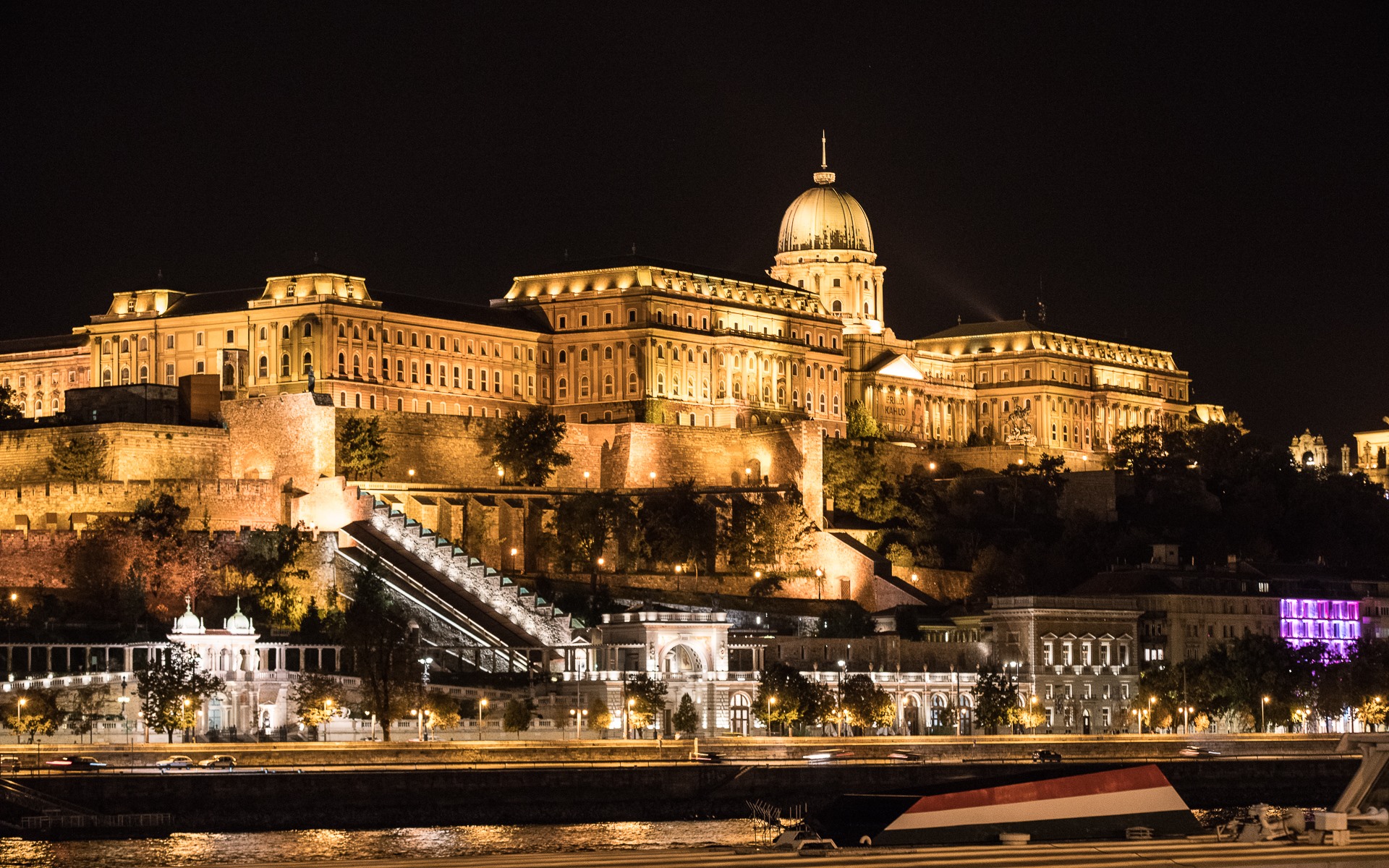
The Best 90 attractions of the Buda Castle District, in the heart of Budapest
Discover the history of Buda Castle Quarter and the many historic landmarks and tourist attractions in the Castle District of Budapest!
O
C
Buda Castle is a true gem located in the 1st district of Budapest, and one of the most famous and iconic tourist attractions of Hungary. Both Buda Castle and the surrounding Castle District is jam-packed with historic buildings, architectural masterpieces and amazing museums. If you’ve decided to spend a day on what this area has to offer, you’re definitely in for a treat.
Getting to the Buda Castel Quarter
First, we need to decide how we’d like to get to the castle. We can go by escalator, bus, elevator, electric mini bus, Buda Castle Funicular, or even choose the secret staircase. I’ll describe all 11 options!
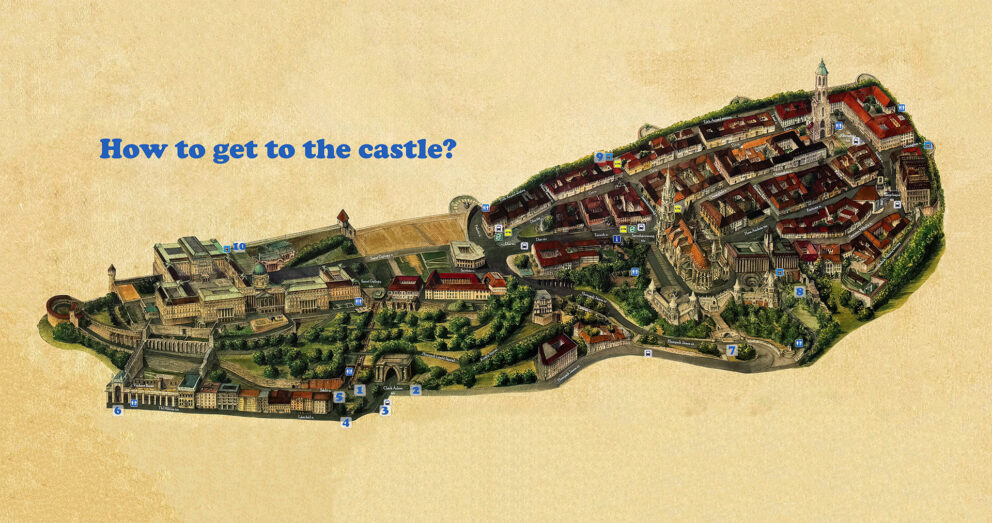
How can we get up to Buda Castle hill?
- Buda Castle Funicular
The 153-year-old Buda Funicular is the most spectacular means of transportation, mainly a spectacular solution for tourists. Budapest residents rarely use it due to its steep price. An adult return ticket costs 4000 HUF (around $13), while a child ticket is 2000 HUF (about $6.5). One-way tickets are not available. Tickets can only be purchased at the bottom of the hill! The funicular covers a distance of 95 meters over a 50-meter elevation. - Royal Staircase (the secret staircase)
You need to be in good shape if you choose this route. There are many steps to climb to reach the castle. However, the good news is that halfway up, there’s a small rest area with a large terrace that offers a beautiful panorama of the Pest side. The 70-meter elevation difference can be covered in 10-20 minutes. You’ll end up at the funicular’s final station. I highly recommend this route for those who are up for it. - By Bus
You can take either bus number 16 or 216 to the castle. They follow the same route until Disz Square, where they split. I recommend bus 16, which starts from Deák Square and, due to its smaller size, can navigate the narrow streets of the castle better, enhancing our experience. Remember, you need to buy a ticket for each boarding, or it’s worth using a day ticket for unlimited travel. If you prefer not to climb stairs, this is another option I gladly recommend! - By Electric Mini Bus
The daily ticket price is 6000 HUF (about $20) for adults and 4000 HUF (about $13) for children (6-16 years). It’s free with the Budapest Card! Available every day from 9 am to 5 pm (until 4 pm in winter). With the day ticket, you can use the bus all day to move quickly within the castle. The mini bus does not go to the western part, which can only be reached on foot. - Sikló Road (0 km stone)
This route starts from the zero kilometer stone, from which the distance of roads starting from Budapest is measured. The road is quite long with many cobblestone sections, so high heels are not recommended. This road is currently under renovation and is not usable. We arrive at the Buda Castle Funicular’s final station. The path is quite steep, taking 10-20 minutes to ascend. - Elevator, Escalator, or Many Stairs
The Castle Garden Bazaar (the westernmost part of the castle) can also be approached. The simplest way to get here is by tram number 19. You have three options: A. If the escalator, which is Europe’s longest covered escalator, is working, we can reach the first level with it (currently free). B. If the escalator to the first level is not working, we can either take the elevator or the stairs. From this level, a few steps and then an elevator take us further, with another elevator reaching the top of the castle. This route is not recommended if you prefer to avoid stairs (20-30 steps). C. The Water Carrier’s Staircase is also an option. - On Foot from Fisherman’s Bastion
You can arrive on foot or by car. You can also take bus number 16 or tram number 19 (from which there is quite a walk). All things considered, this is a journey of more than half an hour. Recommended for hikers only! - On Foot from Hilton Hotel
This route is also challenging as it requires reaching the hotel somehow (bus 16, tram). You can also park in the surrounding streets if you arrive by car. The good news is that instead of the wooden staircase, you can choose the “school” elevator, saving 80-100 steps. - Elevator at the Rock Hospital
This approach could be a good choice if you plan to visit the Rock Hospital and then go up to the castle. It’s easy to find parking in the surrounding streets by car. - Elevator (with bicycle storage)
Located at the back northern part of the castle, precisely opposite each other are two larger elevators. They take us up to the Stockl stairs. For those who dislike stairs, don’t worry. Passing in front of the main guard’s red brick wall, we find another elevator that takes us all the way to the castle. This elevator is mainly used by those arriving by car, bicycle, or tourist bus. Parking conditions in the streets around the elevator’s lower station are much more favorable than in the castle. If arriving by bicycle, there’s a bicycle storage at the elevator where we can securely leave our bike. This route is also a perfect choice for wheelchair users or those with mobility impairments, as stairs and ramps facilitate movement. - By car
If we opt to approach the castle by car, it’s crucial to be aware that the castle area is a protected zone. The maximum duration for entry and exit by car is limited to 15 minutes. After this period, a fee must be paid. It’s also important to note that while parking might be free in other zones, it’s chargeable here! If you’re determined to go by car, considering a taxi or a private driver might be worth your while.
The history of the castle
The Castle District stretches over one and a half kilometers. To visit every place, we’d need to walk about 14 kilometers. The castle district is over 800 years old (construction began in 1243), situated on the banks of the Danube (70 meters high, with an altitude of 165 meters above sea level) and offers a stunning view of the Pest side.
For us Hungarians, the Buda Castle District holds significant importance. It has withstood sieges, fires, earthquakes, and even world wars without being destroyed. We take particular pride in its inclusion on UNESCO’s World Heritage list.
The royal seat was not always in Buda Castle. Then Mongol tribes had invaded Hungary. However, the endless devastation of the Mongol invasion made King Béla IV realize the need for a safer, more siege-resistant royal residence, leading to the choice of Buda Castle in 1255. The following three hundred years passed in relative peace.
Around this time, the cave system underneath the castle hill was discovered. The buildings under construction were connected to these underground corridors over several floors, which, if necessary, provided (and still provide) access to the Danube.
The true golden age of the historical castle came during the reign of Matthias Corvinus. Artists and architects from Italy helped the city’s population reach 8,000 people.
Known as “Golden Apple” by the Turks (Kizil Elma), Buda fell into Turkish hands 50 years after Matthias’ death, beginning 150 years of Turkish rule. During this time, beautiful churches were converted into mosques and minarets. Gorgeous statues, ornate gardens, and crosses were replaced with crescents atop towers. The Turks neglected the castle entirely. It took 150 years and a massive 75-day bombardment by a united Christian force to recapture Buda from the Turks. The population of the castle was then only 300. The new inhabitants rebuilt the castle from the remnants of the old buildings, many of which are still visible today. The castle saw action again during the 1848-49 revolution and was heavily damaged in World War II. Completely encircled, German troops entrenched themselves here. This was the 31st siege of the castle! And the medieval royal palace survived: after the war, the castle was rebuilt again. Since then, the Buda Castle District has been continuously restored and beautified.
I will describe the Buda Castle District in the following parts:
- Castle Garden Bazaar and its surroundings
- Royal Palace and its surroundings
- Holy Trinity Square and its surroundings
- Vienna Gate Square and its surroundings
Buda Castle tickets
Visiting the Castle District is free of charge. The Buda Castle offers a wealth of fascinating sights and tourist attractions.
However, there are fees for museums and guided tours.
Here’s what you need to pay for in the Buda Castle District:
- Castle Museum admission: 12 EUR
- National Gallery in the Buda Castle District: 12 EUR
- Rock Hospital under Buda Castle: 15 EUR
- Labyrinth under Buda Castle: 12 EUR
- Fisherman’s Bastion viewpoint: 3 EUR (free until 9 AM)
- House of Houdini: 13 EUR
1. Buda Castle Funicular
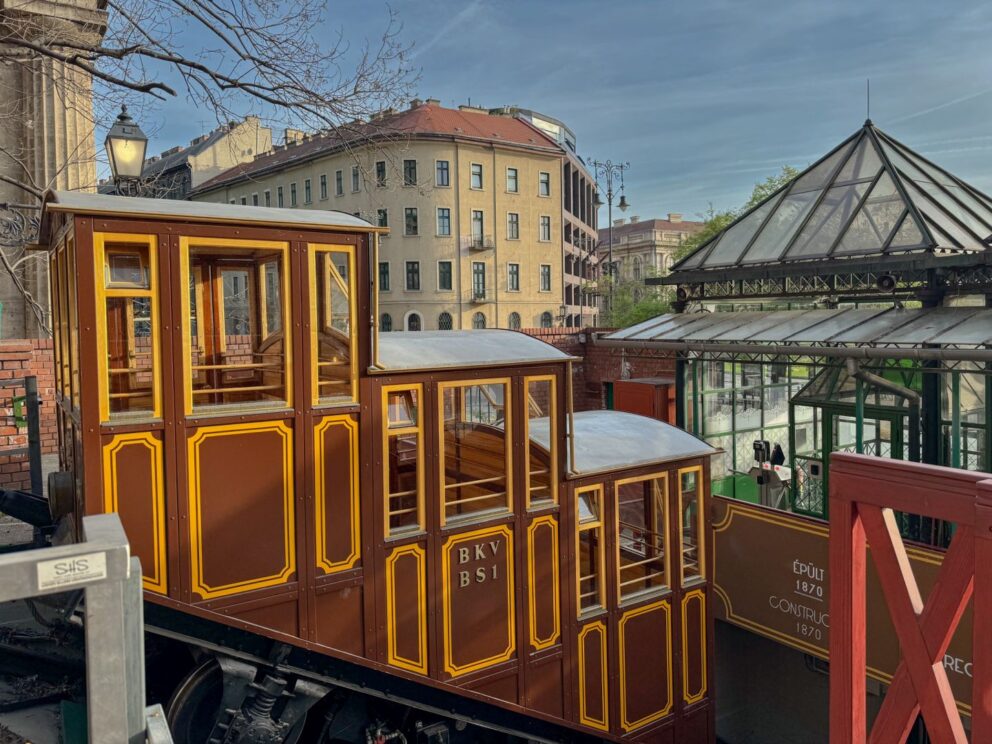
The Buda Castle Funicular commenced its operation on March 2, 1870, connecting the Danube bank with the Buda Castle District. It starts from Clark Ádám Square and goes up to the Turul statue. The journey is 101 meters long, with an elevation of 50.5 meters, which translates to a 30-degree incline. Each car can accommodate 24 passengers.
At the time of the Funicular’s construction, there was a so-called “Pleasure House” operating on top of the Tunnel, likely demolished in the 1970s.
Tickets can only be purchased at the bottom station, and only return tickets are available. The return ticket system is due to the Funicular’s two cars, named Margit and Gellért, being connected in a pendulum-like manner, meaning they counterbalance each other. As one car descends, the other ascends.
Upon its launch in 1870, a 35-horsepower steam engine located at the lower station powered the vehicle. This engine essentially assisted the haulage, as the two cars pulled each other.
The Buda Castle Funicular was the second of its kind to be commissioned in the world, presenting a significant challenge to engineers. After its completion, it was tested continuously for several days, and the ropes were even cut to test the emergency brake.
The Funicular has had only one accident in its operation, in 1896, attributed to unfortunate circumstances. Overloading occurred, the engineer’s shift ended, and he left the operation to the stoker, who braked too late, causing the cars to crash into the wall. The passengers only suffered minor injuries.
At that time, it was possible to purchase first and second-class tickets for the funicular. Nowadays, only one type of ticket is available.
During the World War II bombings in 1945, the Funicular was hit. The restored funicular resumed operation on June 3, 1986, now powered by electric motors. The 54-kilowatt electric motor is placed in the machine room below the upper station.
Open every day from 08:00 – 22:00. It’s advisable to inquire in advance about the opening hours, as it often undergoes maintenance.
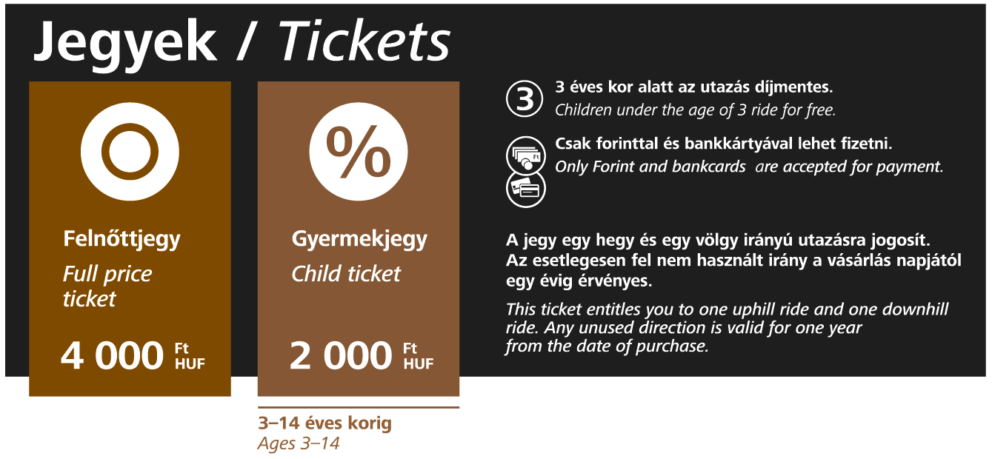
Maintenance occurs every odd week on Monday, except if it falls on a public holiday or celebration. In such cases, maintenance is performed on the first working day following the holiday, causing the Funicular to be out of service for several days.
Online tickets are also available, saving time as there’s no need to queue at the location.
2. Labyrinth of the castle of Buda

The Buda Labyrinth currently has one main entrance. Of course, there are several secret and less-secret entrances as well, which are closed.
You can enter the Buda Labyrinth without a guide, with yellow arrows helping with navigation. It takes about half an hour to walk through the labyrinth. It’s important to note that only cash is accepted for ticket purchases! The labyrinth can be visited in casual street clothes. However, be prepared for the temperature inside the labyrinth to be around 16-18 degrees Celsius!
The cave system under the castle was not excavated by humans but formed naturally as spring water carved its way through the rock layers in the mountain. However, it was indeed humans who later connected them into a system. The cave system has been hidden within the mountain for centuries, witnessing many secrets over time!
The caves were used by the population as storage spaces as early as the 13th century. They brought down their grain reserves and wine stocks for storage.
The Turks used the tunnel as a refuge and connected it to their houses’ cellars. These connections were later walled up due to numerous robberies occurring through the caves.
At the end of the 1800s, the caves were reopened and made accessible to the public.
3. Matthias Fountain in Budapest Castle
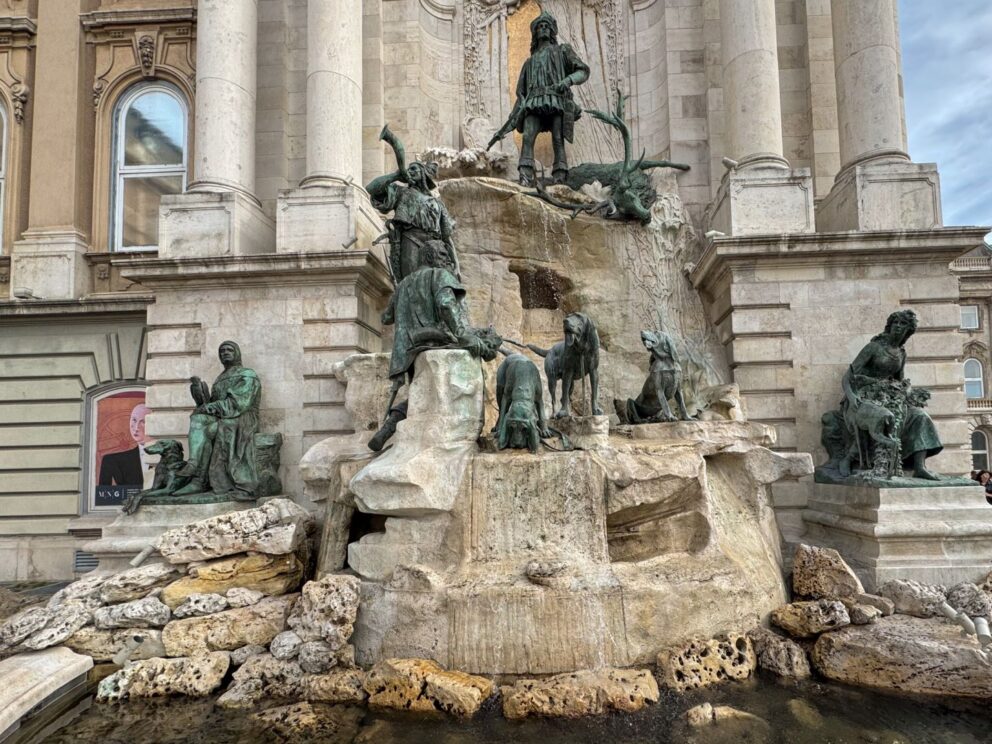
Budapest has its own version of Rome’s Trevi Fountain, located in the Hunyadi Courtyard of the Buda Castle! The Matthias Fountain is one of the most beautiful and impressive fountains in Hungary, gracing the north side wall of the former chapel of Buda Castle since 1904.
Legend has it that King Matthias often roamed the country in disguise to get a true picture of the people’s conditions. One story tells of Matthias, dressed as a hunter, roaming the forest with his entourage when he met a young woman with whom he fell in love, yet he did not reveal his identity. Later, Ilonka came to Buda to meet her beloved, who was returning from a victorious campaign, dressed in full royal splendor. Ilonka recognized the king in the hunter and realized that their beautiful meeting could not continue. The young woman’s heart was consumed by hopeless love and sorrow, and she eventually died from it. This legendary tale is brought to life at Matthias Fountain. At the top of the rock spring, the scene centers on the king dressed as a hunter, surrounded by his entourage and hunting dogs. To the left is Galeotto Marzio, the king’s famous Italian poet, holding his notes and a hunting falcon on his arm. On the right side of the fountain is the delicately sculpted figure of beautiful Ilonka, as her gentle deer nuzzles up to her.
Interestingly, the artwork features a total of ten animal depictions, yet most people only spot eight. The missing two are actually on the chief hunter’s spear, represented by two opposing boar heads. Another point of interest is that during World War II, one of the hunting dogs (a vizsla) disappeared and had to be replaced later.
Interesting fact:
If you observe the statues around Budapest closely, you’ll notice an interesting thing. Most of these artworks are covered with a green layer. These pieces are generally made from a yellowish metal or its alloy. This outer coating, called patina or noble rust, develops due to the weathering effects of the open air and precipitation. This layer, unlike ordinary rust, actually protects the creations and perhaps even enhances their beauty. It is not recommended to remove this layer as doing so would also strip off the sculpture’s top layer, thinning the material and dulling the details.
4. Turul Bird on the Walls of the Castle District
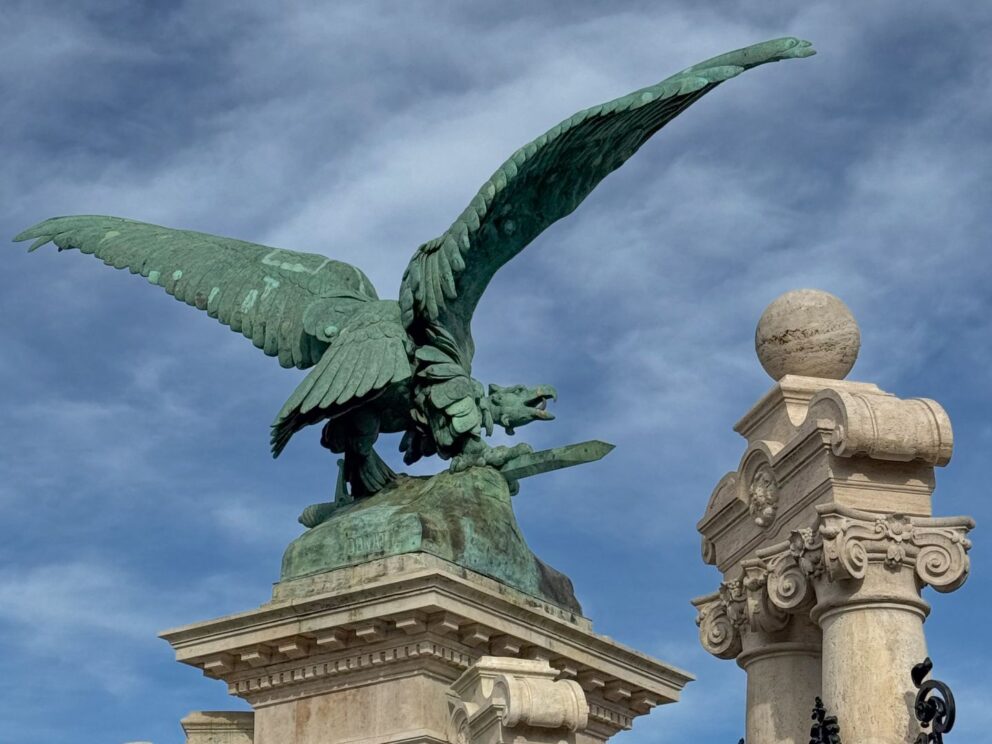
The Turul statue is one of the most popular attractions in in Budapest old town. Created by Gyula Donáth in 1905, it was restored in 2021. The statue stands 5 meters tall, spans 7 meters wide, and weighs 9 tons (9000 kg). A massive 60-ton crane was used to lift the statue into place from the Hunyadi Courtyard side.
The sculptor depicts the bird with its wings outstretched (the wings were reinforced with iron during the renovation to better withstand the wind) as it gazes down from the top of Castle Hill, clutching a sword in its talons. According to legend, during the conquest of the homeland, our ancestors were led by a Turul, and they were to settle where the Turul dropped the sword.
5. Sándor Palace and the Changing of the Guard at the Castle
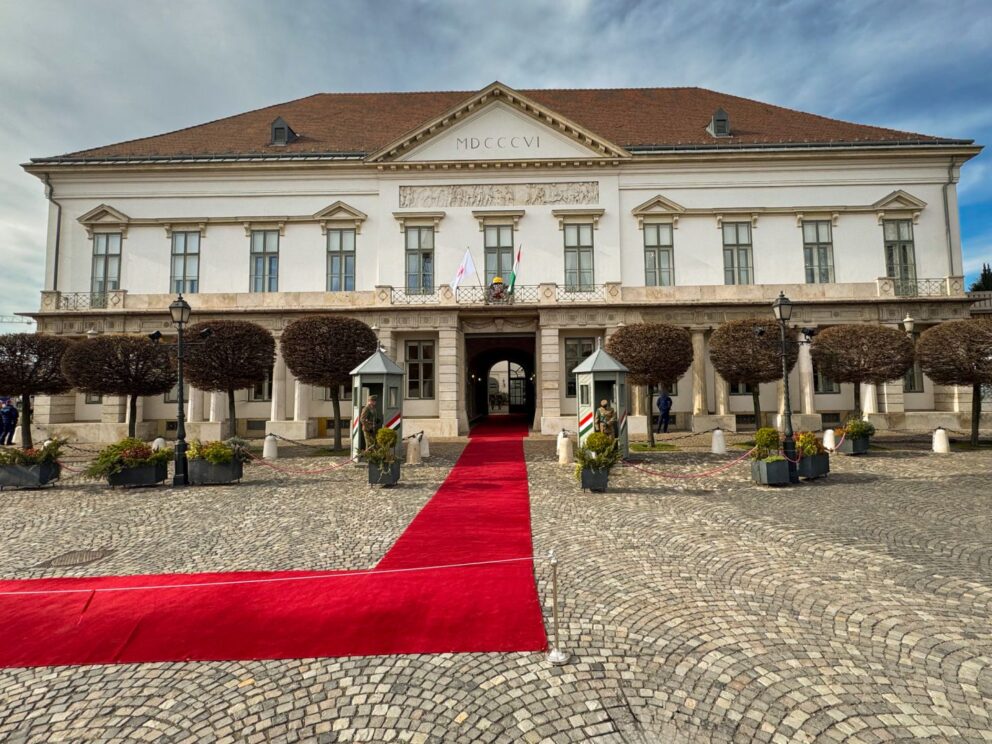
Sándor Palace, designed by Johann Aman and Mihály Pollack in the neoclassical style, was built around 1806 and restored in 2002. The façade of the palace displays the year of its construction in Roman numerals (MDCCCVI) 1806, below which the Hungarian coat of arms is placed. Flanking the coat of arms are two flags: the red, white, and green Hungarian national flag, where red symbolizes strength, white fidelity, and green hope; and the European Union flag, blue with yellow stars representing the member states.
The palace is named after Count Vince Sándor, whose family once owned the land where this magnificent white palace now stands. Following the extinction of the Sándor family, the palace underwent several renovations and for many years served as the home of Hungary’s prime ministers. Prime Minister Gyula Andrássy lived here and later secured ownership for the state from the Pallavicini family.
One of the most famous members of the Sándor family was Móric Sándor, known as “the devil’s horseman” and the son of Count Vince Sándor. Móric offered half a year’s income from his estates for the construction of the Chain Bridge.
Who was the devil’s horseman? Móric Sándor, the count’s son, was frail and weak from birth, so his father protected him from even the slightest risks. Móric only rode a horse for the first time at the age of 17 (after his father’s death), and he rode as though born in the saddle, performing daring stunts on horseback. He cared for nothing but riding, even riding his horse up the castle stairs. A hereditary mental illness later manifested in him. He often deliberately rode into stone walls, and his dangerous stunts frequently resulted in broken bones, dislocated knees, or concussions. In his old age, his mind completely deteriorated, and he is remembered by posterity as “the devil’s horseman.”
Today, the palace serves as the office of the President of the Republic. When foreign political dignitaries visit Hungary, the President receives them in the grand halls of Sándor Palace.
Tourists cannot visit the Gobelin or Boucher Room, also known as the Neo-Baroque furnished Blue Reception Salon, the Red Salon, or the Rococo Mirror Room, where the most imposing protocol events and banquets for diplomatic corps representatives are held.
Thus, tourists can only witness the ceremonial changing of the guard. The Presidential Guard performs this duty, with a formal changing of the guard taking place every noon. The palace guards change hourly from 10 AM to 5 PM.
6. Rock Hospital under the castle in Budapest
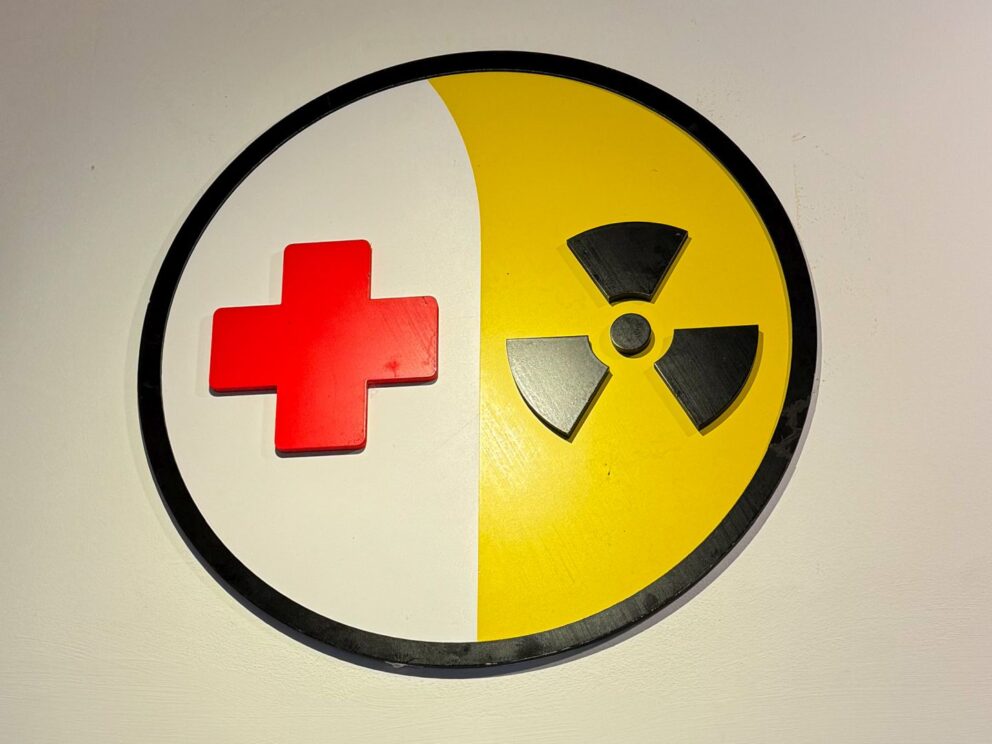
The Rock Hospital is located beneath the Castle District, with its entrance under the castle walls. Officially known as the Rock Hospital Nuclear Bunker Museum, it is a site I wholeheartedly recommend to everyone, whether you’re visiting the museum or just exploring the Buda Castle District. It’s not by chance that it is one of the most visited museums in not just Budapest, but all of Hungary.
The Rock Hospital uses original objects and equipment to bring its past to life. The massive cave system underneath the Castle District is divided into three separate parts:
- Rock Hospital
- Castle Labyrinth
- Natural corridors and cave systems preserved in their original state
The Rock Hospital is located deep within Castle Hill, spanning over 2,300 square meters in a 10-kilometer-long cellar system. The Rock Hospital has three major sections:
One part of the exhibition talks about the medical work that took place here during World War II and the events of 1956. Visitors can walk on the original flooring, between the original walls, and see the rooms in their original function, furnished with wax figures and authentic objects from the 1940s to the 1980s.
Interesting fact:
Interesting fact: During the 1956 revolution, seven babies were born in the Rock Hospital—six boys and one girl!
Another part is the engine room where you can learn more about nuclear warfare. The shelter was also prepared for a nuclear attack, but, unfortunately, it would not have provided refuge for everyone.
In the 1930s, a telephone exchange operated here, and in 1941-42, the place was expanded into a shelter for the castle’s residents. The hospital construction began in 1943. Initially designed to accommodate sixty patients, the hospital was equipped to European standards with water and fuel storage available.
The Rock Hospital officially opened on February 23, 1944. During World War II, it could simultaneously treat up to 300 wounded soldiers. Everyone in need, including German soldiers, was cared for.
The Rock Hospital and nuclear bunker were opened to the public in 2007. Visits to the Rock Hospital are only possible through organized tours because its vast area could easily cause individual visitors to get lost. Tours start every one to two hours. For Hungarian tourists, I recommend the 2 PM program, which is an extended 90-minute tour instead of the usual 60 minutes.
Tickets should always be purchased online.
6. Statue of the Virgin Mary and Lookout in Buda Castle, Budapest Hungary
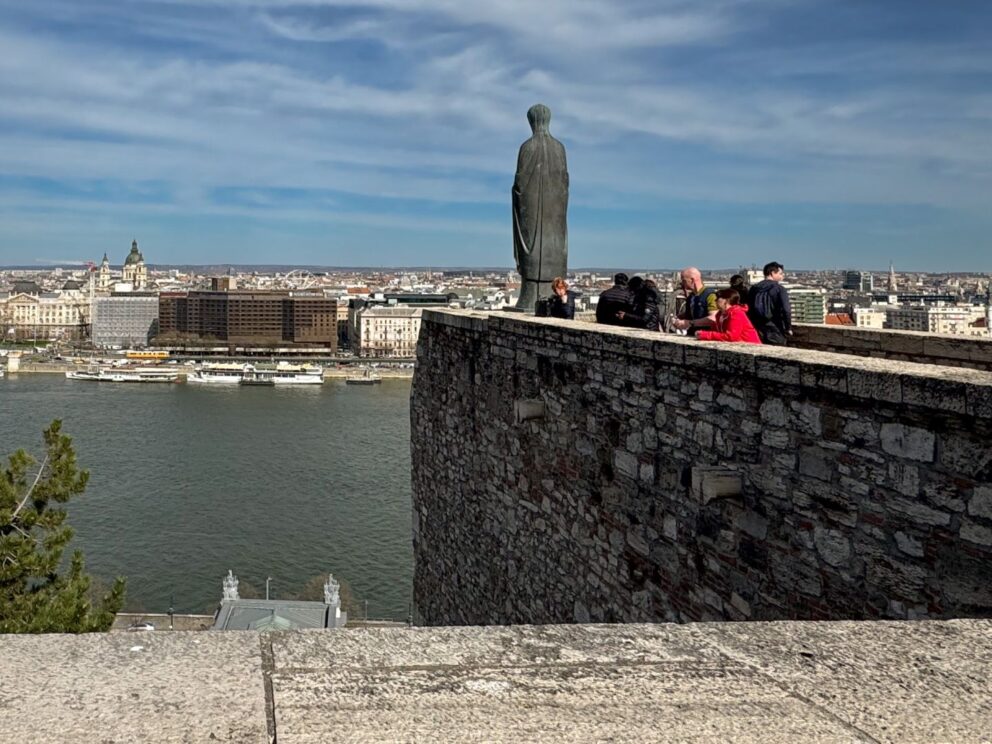
Since the end of 2013, a 4-meter-tall (403 cm) bronze statue of the Virgin Mary has stood on the southern side of the castle, on the top of the Corinthian protective wall, facing the Danube. This newly renovated part of the castle functions not only as a scenic viewpoint but also as a resting spot and a popular place for taking selfies. If you’ve taken the stairs instead of the lift from the Danube up to this point, it’s a perfect place to rest and enjoy the fantastic panorama.
There is also a life-sized replica of this statue, which is occasionally displayed within the castle district. Interestingly, the Virgin Mary’s arms do not touch the little Jesus in the sculpture. Virgin Mary is also referred to as the Divine Mother bringing victory. The figure of the Victorious Mary has become historically intertwined with Buda Castle.
Legend has it that during the siege of the castle Budapest, which was then in Turkish hands, a wall crumbled suddenly revealing an image of Mary, which inspired the Christians for their final assault and utterly confused the Turks.
8. Fisherman’s Bastion: The Watchful Eye of the Castle

Fisherman’s Bastion is one of the most visited tourist attractions in the castle. It offers a stunning panorama of Pest and is an ideal spot to watch the sunrise.
Important!
During the day, you need to purchase a ticket to enjoy the panoramic views. However, outside of specified times, the gates are open and can be visited for free:
From January 2 to May 31: 9 AM to 7 PM
From June 1 to September 30: 9 AM to 9 PM
From October 1 to December 23: 9 AM to 7 PM
It’s worth checking the sunrise times and securing the perfect spot at the edge of the bastion half an hour earlier!
Fisherman’s Bastion was constructed to commemorate the 1000th anniversary of the Magyar conquest of Hungary, not for defensive purposes. It was designed partly to frame the centuries-old Matthias Church beautifully, and partly to create a viewing terrace from which everyone could admire how beautifully Pest, across the Danube, had developed by the time of the millennium celebration.
Fisherman’s Bastion was built on the site of the old castle walls, and it got its name because this part of the wall was historically protected by the fishermen’s guild during sieges, with a fish market operating at the foot of the hill. The seven towers of the bastion symbolize the seven chieftains of the Magyars.
Indeed, the view from Fisherman’s Bastion towards Pest is breathtaking.
9. Statue of Saint Stephen: The Most Beautiful Statue in the Castle
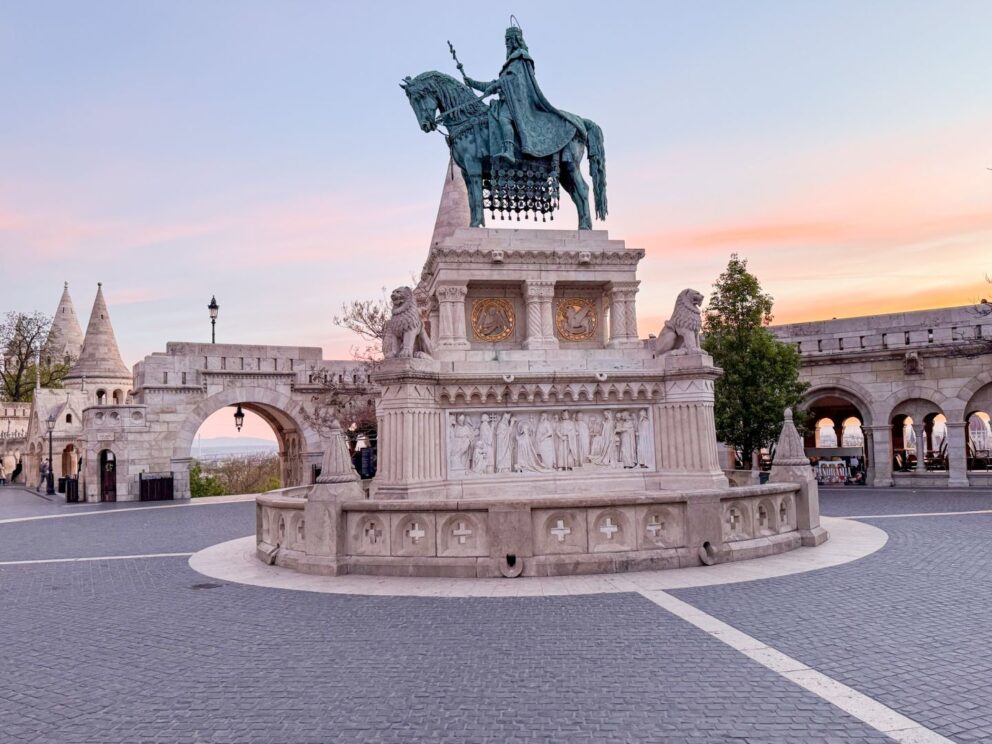
The statue of Hungary’s first king, Saint Stephen, is located near Matthias Church, at the base of Fisherman’s Bastion. The sculptor, Alajos Strobl, created this equestrian statue of Saint Stephen in 1906.
The statue portrays King Stephen on a richly adorned steed. He wears the Holy Crown on his head and holds the Apostolic Cross in his hand. The halo above the king’s head reminds us that Stephen was canonized as a saint 45 years after his death.
The base of the monument features four rounded bastions, each representing a significant moment in Saint Stephen’s reign:
- Front side: Legislation
- Left side: The submission of Vienna
- Right side: The coronation of Stephen as king
- Back side: The founding of the cathedral in Székesfehérvár
Above these, a stepped pedestal rises, guarded at each corner by four limestone lions.
Between the columns, symbols of the four evangelists from the Bible are visible: the Angel for Matthew, the Bull for Luke, the Eagle for John, and the Lion for Mark.
At the front, the Lamb of God is depicted, and at the back, the double cross is displayed.
10. Trinity Column

Following the liberation of Buda Castle in 1686, the settlers were struck by a plague epidemic in 1691. During the epidemic, the citizens vowed that if the “Black Death” passed, they would erect a statue of the Holy Trinity in gratitude. Funds were hard to come by, and it was only the recurrence of the epidemic in 1699 that accelerated the fulfillment of the vow to build the column.
At the very top of the statue is the Holy Trinity: the Father, the Son, and the Holy Spirit, represented by a dove. The column, adorned with clusters of clouds, features angels (putti). The base is decorated with statues of the Virgin Mary and saints who are protectors against the plague. The memorial column has three reliefs:
One depicts King David praying to God to end the plague.
The second recalls the memory of the epidemic.
The third commemorates the work of the column’s builders.
The sculpture was created by the sculptor Fülöp Ungleich, and the carvings of the reliefs and crests were done by Antal Hörger.
The Trinity Column was recarved based on the original, as well as contemporary photographs and descriptions, which is why it appears so new. The original column is preserved in the Kiscelli Museum.
The column gained its current form in 1856! This year is represented by a “chronosticon,” which is a type of puzzle where letters within the Latin texts above the shrine praying to the Holy Trinity and below it appealing to the Immaculate Virgin are read as Roman numerals that sum up to 1856.
11. Matthias Church
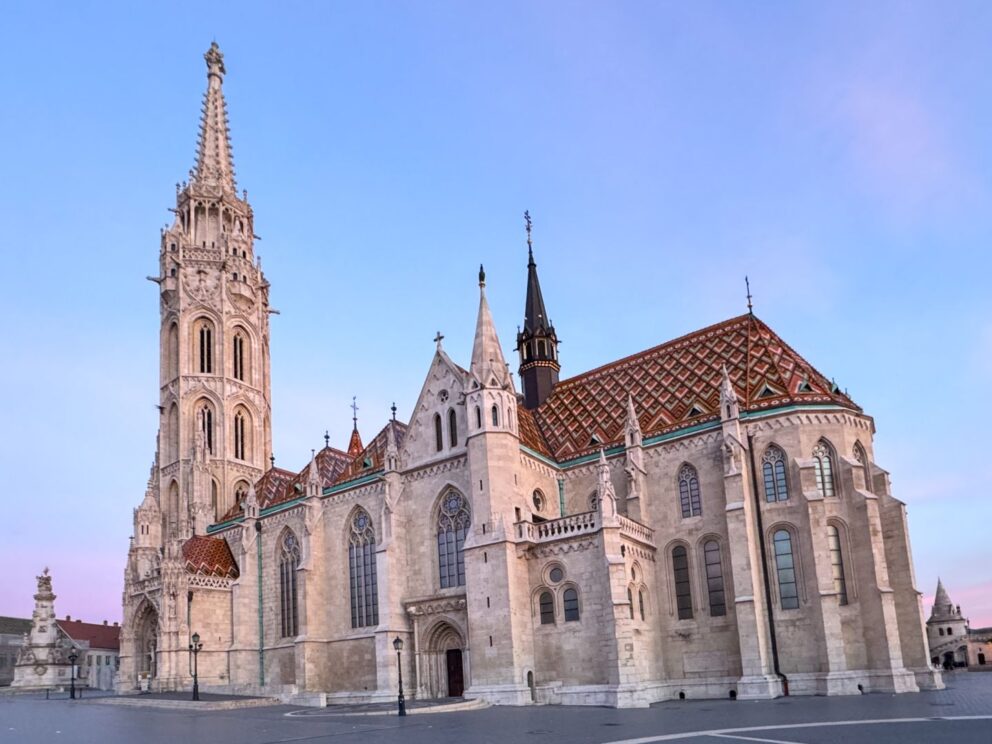
The Church of Our Lady, commonly known as Matthias Church, is the only functioning Catholic church in the Castle District and boasts a rich history. It is one of Hungary’s most famous buildings, with its spire forming an integral part of the Budapest skyline. It’s a perfect tourist attraction, offering not just a masterpiece of Gothic architecture but also stunning views for those visiting. However, stepping inside is equally rewarding as the walls tell nearly eight hundred years of history, during which the church’s collection has been enriched with numerous art treasures.
The church was originally built under the reign of King Béla IV. It is dedicated to the Virgin Mary, revered in medieval religious culture as “Our Lady of Great Blessing.”
Matthias Church has served as the venue for various significant events, including coronations, royal weddings, national councils, and the blessing of flags before battles.
King Matthias himself was married twice in this church—first to Catherine and then to Beatrice.
After Buda fell into Turkish hands, the church was immediately converted into a mosque. As the Islamic faith prohibits the depiction of human figures, the altars and sacred images were destroyed, and everything was removed from the building, leaving only the bare walls. Paintings and flags were burned, and the two beautiful candlesticks that adorned the church’s altar were sent by the sultan to Istanbul, where they still decorate a mosque today.
After 150 years of Turkish rule, the Habsburgs converted the mosque back into a church, during which it was referred to as the “German Church.”
The church’s roof is adorned with beautiful hexagonal-patterned, colorful tiles made from pyrogranite by the famous Zsolnay porcelain factory.
Numerous gargoyles decorate the church. On the octagonal Matthias Tower, two rows of eight dragons each channel and spit out rainwater. Other parts of the church feature gargoyles in the forms of bats, witches, dogs, and pig-like creatures.
From the top of the church, visitors can enjoy a breathtaking view of the entire city.
12. Tactile and Invisible Relief
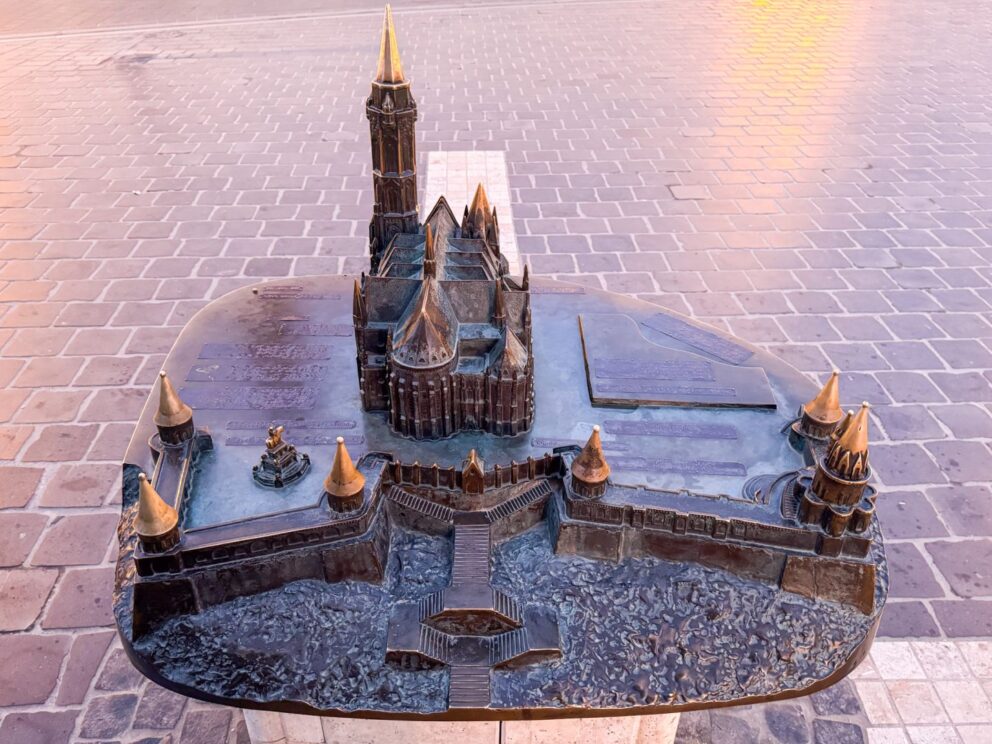
This relief sculpture was created specifically for the blind and visually impaired. It depicts Matthias Church and its surroundings. Between the buildings, important information about the relief and the depicted area is provided in Braille. This enables those who are visually impaired to touch and feel the layout and architecture, offering a sensory experience of the historical site.
13. Árpád Tóth Promenade with Cherry Trees
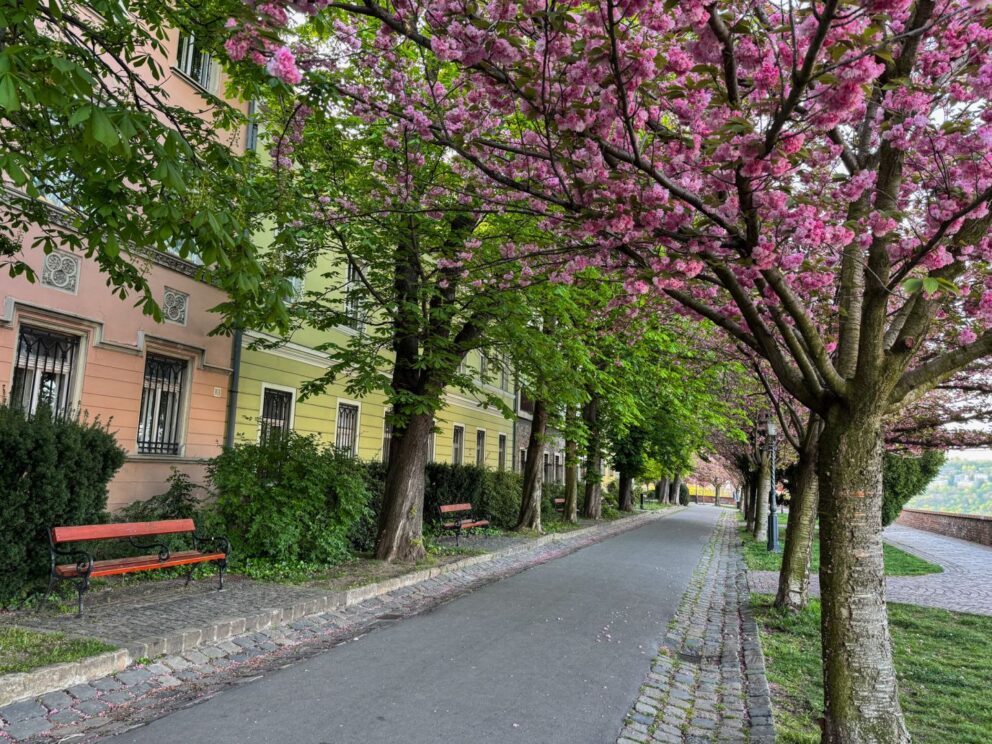
Budapest’s first and arguably most beautiful avenue of trees is a jewel of the Castle District. Originally, the area behind the castle walls served military purposes. The promenade was established only after the castle’s fortification features were decommissioned. It was planted with trees in the 19th century and then opened to the public. It’s one of the most beloved parts of the Castle District, offering stunning views of the Buda hills and parts of the palace. In April and May, during the cherry blossom season, the sight is particularly breathtaking.
The promenade is named after the famous poet and translator, Árpád Tóth, who was a resident of the Castle District.
14. Pavilion on Árpád Tóth Promenade
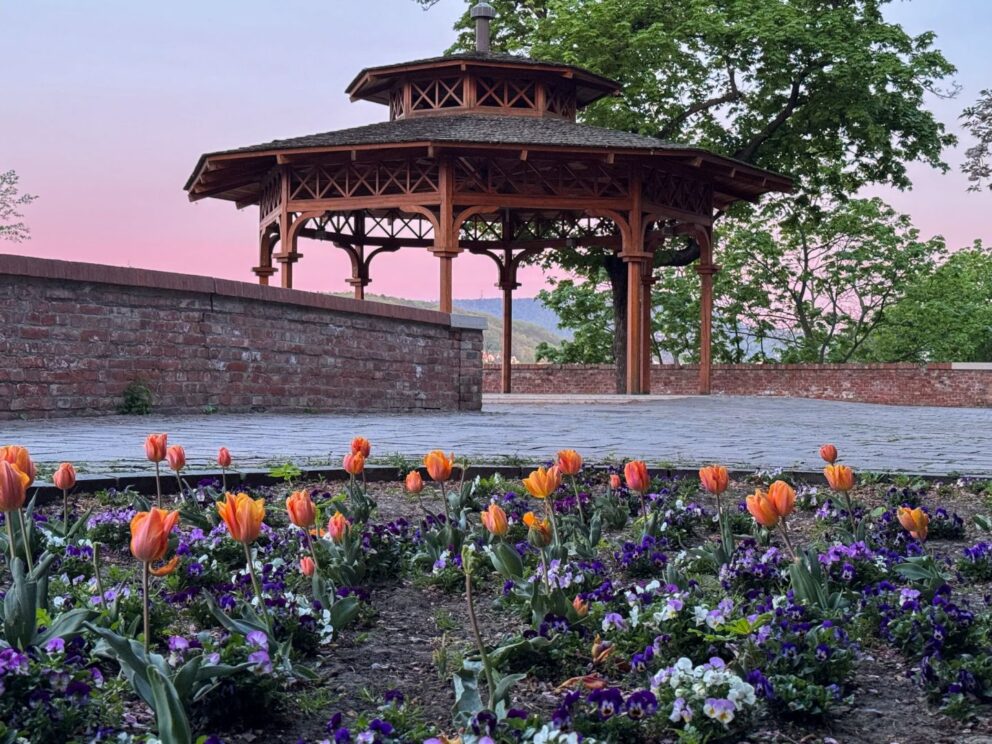
Along the Árpád Tóth Promenade, you can find a wooden pavilion located on one of the rondels. Its original Turkish name, Eksi as Kuleszi, means “sour juice.” This is why it is also sometimes referred to as the “Sour Soup Bastion.” The interior of the tower conceals vaulted casemates, underground spaces that were once filled with cannons.
In the early 20th century, the pavilion hosted a band that played every Sunday, providing entertainment for those strolling along the promenade. The pavilion was rebuilt in the 2010s, restoring its historical charm and continuing its legacy as a delightful spot for visitors to enjoy music and relaxation in the heart of the Buda Castle District.
15. Transylvanian Second Hussar Regiment Memorial
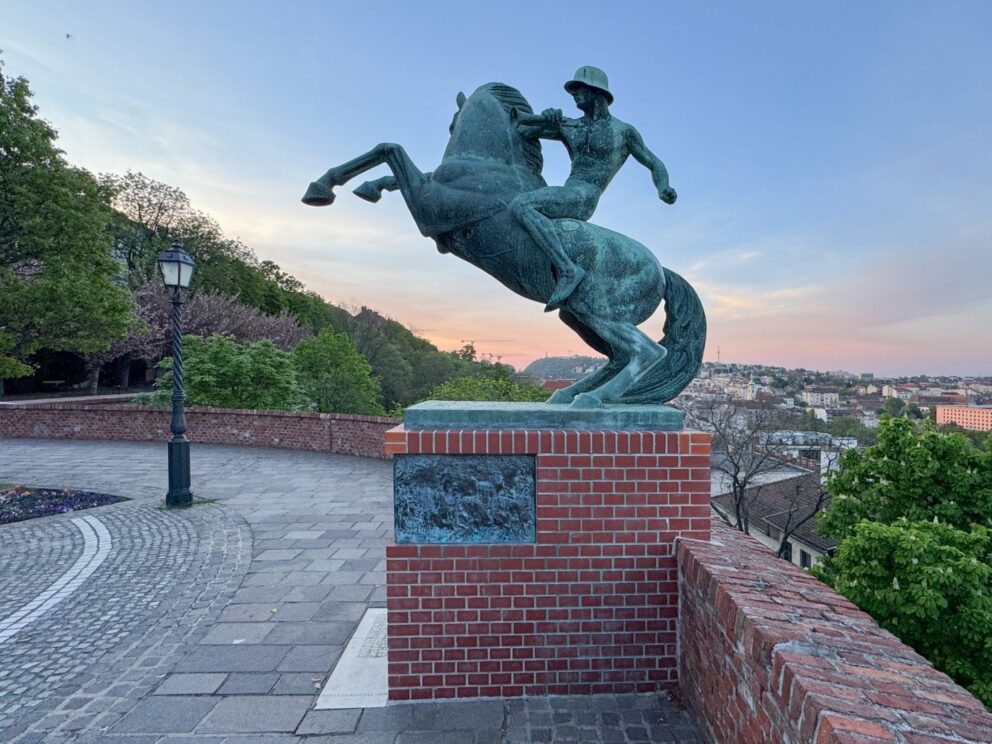
Located at Veli Bej Bastion, the memorial dedicated to the Transylvanian Second Hussar Regiment honors their service in World War I. The bastion itself is named after the Turkish Veli Bej, who is also associated with the famous Veli Bej Bath nearby. This site serves as a poignant reminder of the sacrifices made by the regiment during the war, encapsulating both historical and cultural significance within the Castle District.
Interesting Fact:
An interesting note about equestrian statues: it is often said that if the horse has both front legs in the air, the rider died in battle; if the horse is standing with all four legs on the base, it signifies that the rider died of natural causes. While the truth of this lore may vary, it’s undeniable that the more a horse’s pose deviates from all four legs on the ground, the more challenging it is to balance and secure the statue.
16. Old Buda Town Hall
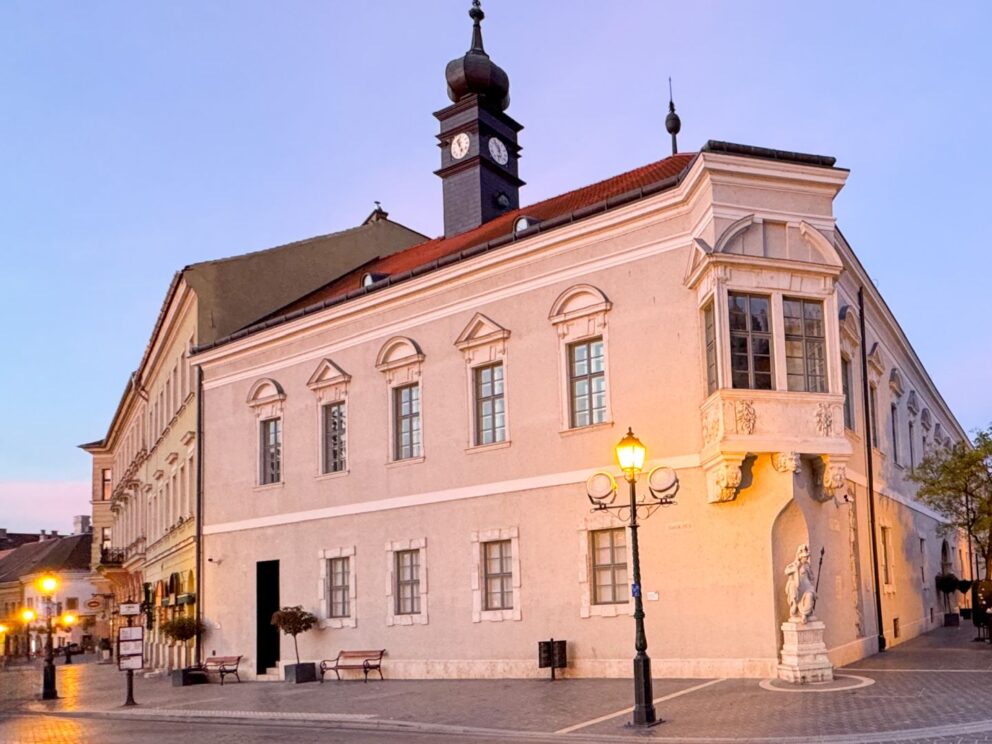
The Old Buda Town Hall is one of the oldest buildings in Buda, boasting a history of 800 years. After the recapture of Buda in 1686, it was constructed on the remnants of 13th-century houses. One of its distinctive features is the ornately carved corner balcony, beneath which sits a limestone statue. This sculpture depicts Pallas Athena, the Greek goddess who was a protector of cities. In her right hand, Athena holds a shield adorned with the coat of arms of the city of Buda, and in her left, a spear.
The statue is a replica made in 1965; the original is kept in the Budapest City Hall. Beneath the building, a trapdoor provides access to the labyrinth, and the area underneath the house once served as a prison.
17. Ruszwurm Confectionery
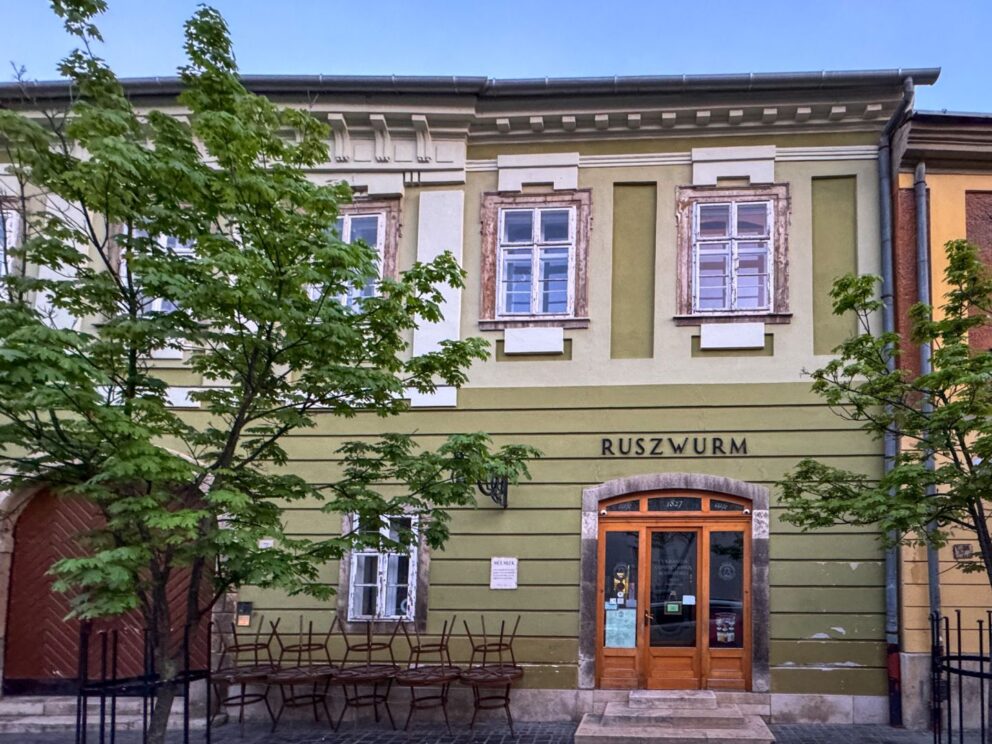
Operating continuously since 1827, Ruszwurm Confectionery is the city’s oldest and most distinguished pastry shop, located in this very building. Over the years, it has served dukes, princes, and even members of the royal family, who enjoyed sweets delivered from here. The confections were transported in boxes adorned with miniature images of Matthias Church or Buda Castle.
Ruszwurm’s mint sticks were so famous that they were even shipped to Vienna. Remarkably, the original furnishings of the confectionery have survived the tumult of the 1849 revolution and the sieges of World War II, making it not only a culinary landmark but also a piece of living history.
18. King Matthias Relief on the Wall of Nicholas Tower
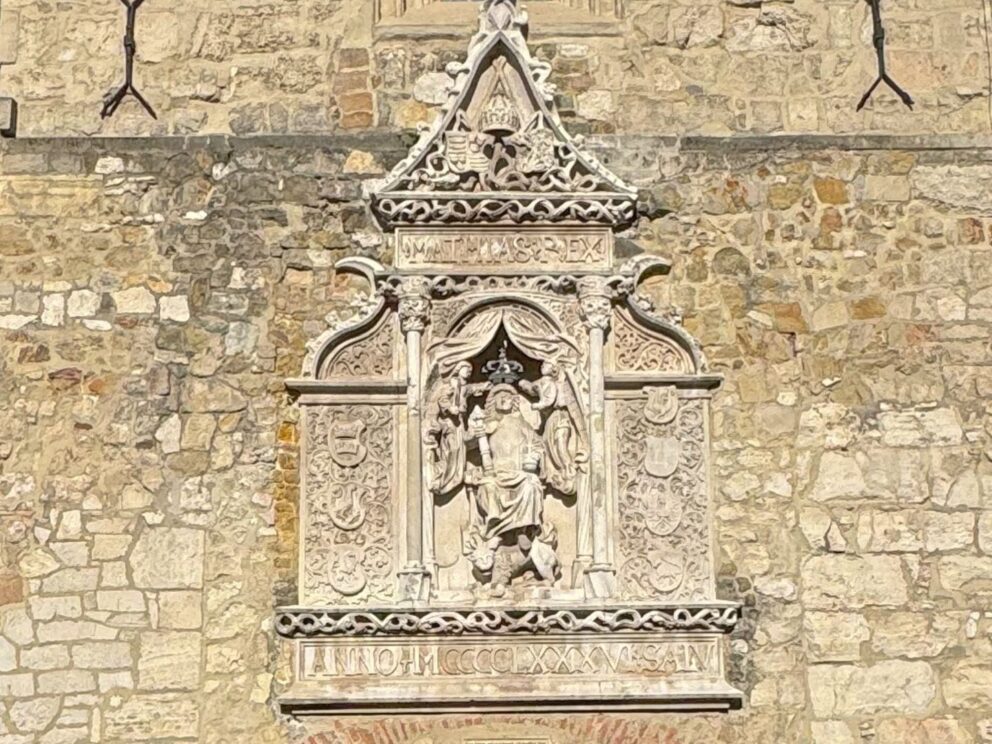
This artwork is considered the most beautiful and authentic depiction of King Matthias. It is a replica of a relief originally created in 1486, which was placed on the gate tower of Ortenburg, a German town.
The monument stands 9 meters high and 4 meters wide. At the top field are the Hungarian and Bohemian coats of arms. The upper band reads “MATHIAS REX,” and the lower band “ANNO MCCCCLXXXVI SALV[TIS],” which translates to “In the year of salvation 1486.”
The style and heraldic symbolism are partly based on the king’s majestic seal from 1464. The king is seated under a canopy, resting his feet on a reclining lion. Two floating angels hold a crown above his head, which is notably close to the portrait. The figure is flanked by two columns and framed by foliage.
The replica was crafted by Kálmán Lux in 1930.
19. Vienna Gate
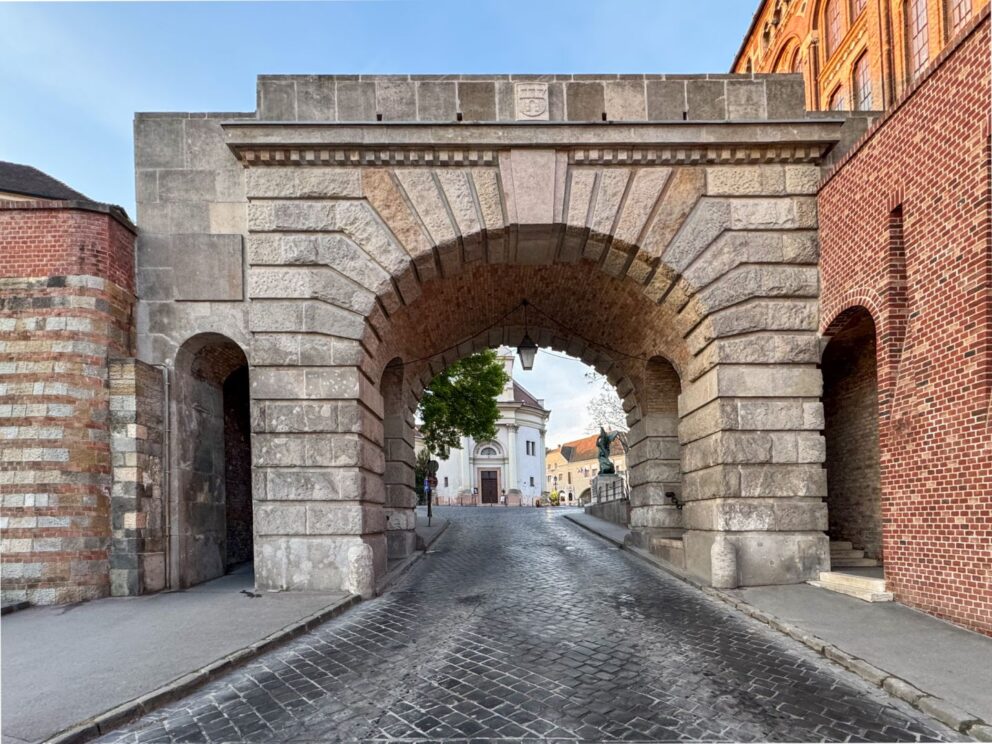
In the past, entry into the city was secured through gates located in the city walls. None of these gates have survived in their original form to this day. However, entrance to the Buda Castle District is still through gates, with the northern gate known as Vienna Gate. It received its name because it led to the road to Vienna.
In the Middle Ages, this location was where the weekly markets were held on Saturdays, hence the area was known as “Saturday Market Square,” and Vienna Gate was also referred to as “Saturday Gate.”
On the castle-side of Vienna Gate, there is a statue depicting a rushing angel, created by Béla Ohmann in 1936.
20. Europe Park at the Base of the Castle
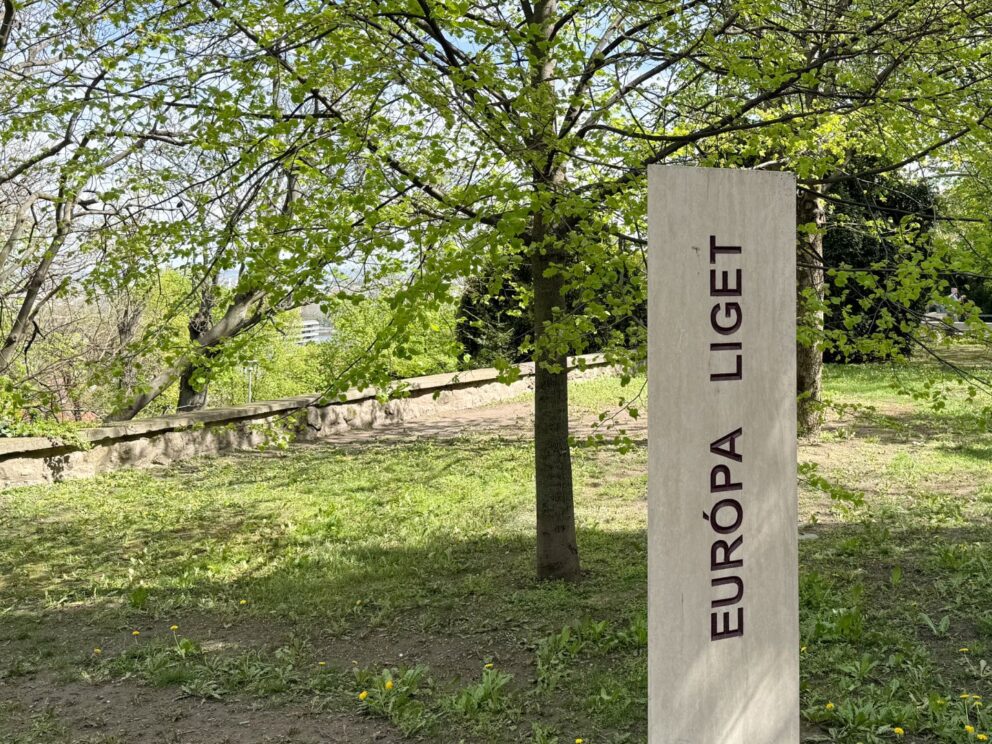
To the right of Vienna Gate lies Europe Park, a unique green space whose special trees were brought and planted by the mayors of various European cities in 1973, commemorating the centennial anniversary of Budapest’s status as a capital city. A notable feature of the park is a sculpture designed for children, which depicts beloved fairy tale characters: Mr. Bear and Miska the Fox.
21. Statue of Hedvig and Jagiello
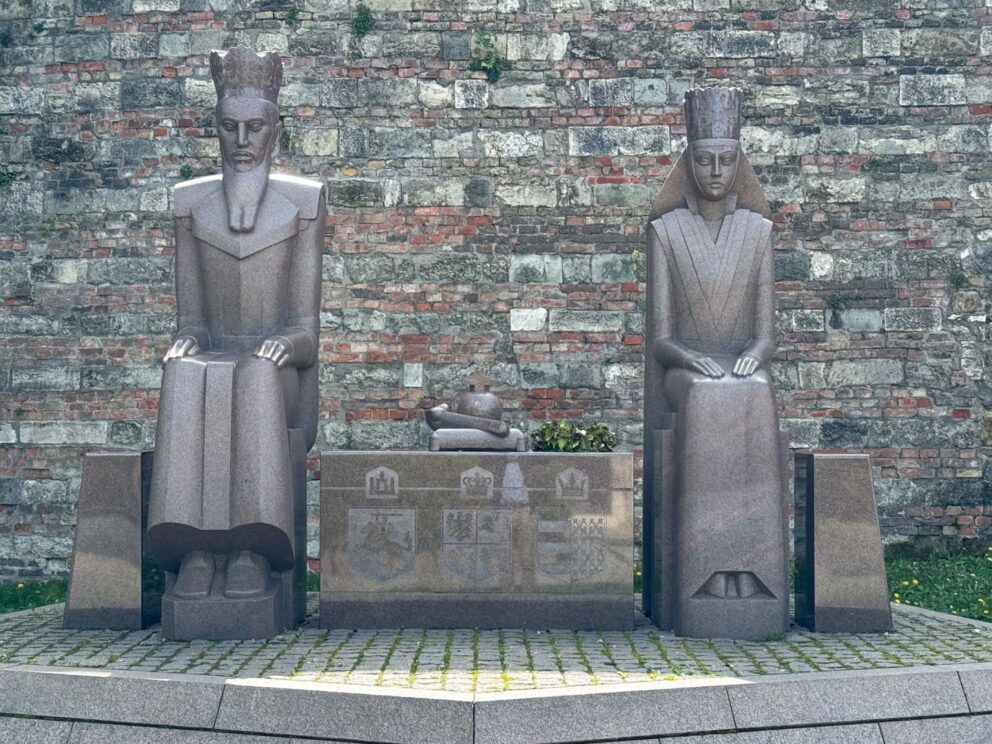
The monument located near the Vienna Gate honors the historical connections between Hungary, Lithuania, and Poland. In 1386, a significant marriage took place in Krakow: Hedvig, the Christian daughter of Louis the Great, who was both the Hungarian and Polish king, was wed to Jagiello, the ruler of Lithuania. This marriage enabled the young groom to be crowned King of Poland. Additionally, as a result of this union, Lithuania, the last pagan state in Europe, converted to Catholicism.
22. Siege of Buda Castle Relief
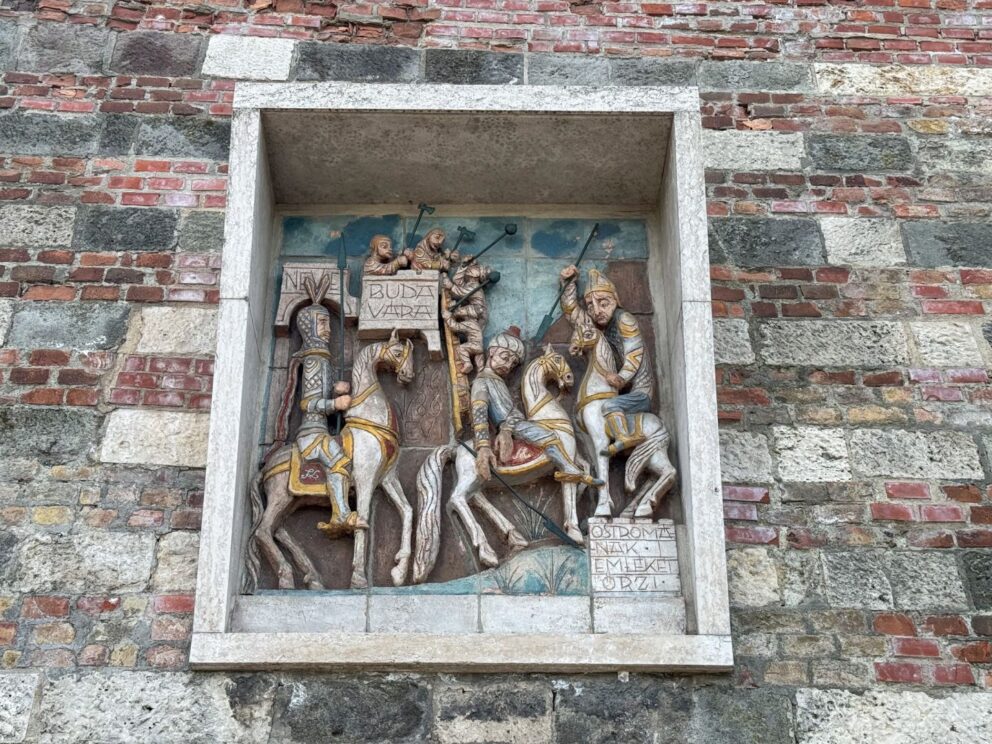
Restored in 2006, this relief commemorates the siege of the castle. It is located on the wall of the Buda Castle District, near the Vienna Gate. Made from colorful, sculptural ceramics, the relief measures 138×115 cm. This artwork serves as a vivid reminder of the historical events that shaped the area, capturing a pivotal moment in the castle’s storied past.
23. Statue of Zoltán Kodály
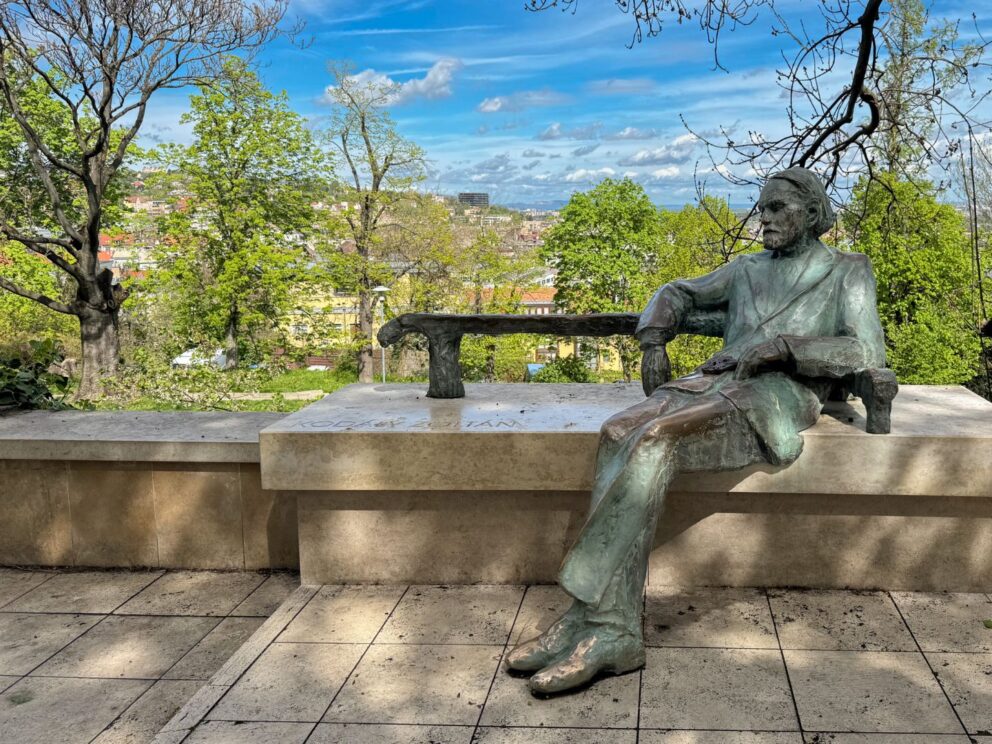
The statue of Zoltán Kodály, created by sculptor Imre Varga, was originally erected in 1982 in the Europe Park located next to Vienna Gate in the Castle District. In 2003, it was moved to the Bishop’s Garden due to renovations. It was initially planned to return the statue to the Bishop’s Garden after the renovations, but it has now been permanently relocated back to Europe Park.
Zoltán Kodály, fully named Zoltán Vilmos Kodály, was born in 1882 and is one of Hungary’s most famous composers. His contributions to music education and his profound impact on the Hungarian music scene make his statue a significant cultural landmark in the area.
24. Bear and Fox Statue
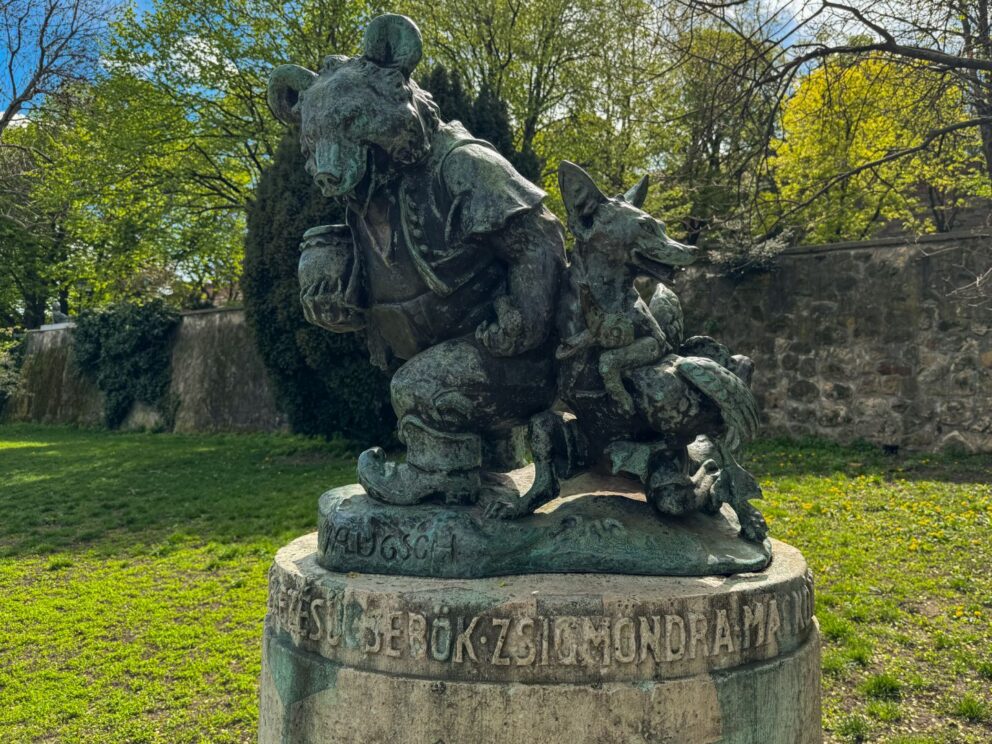
Yes, there’s a bear in the castle, and he’s with Mr. Fox! This statue, designed specifically for children, features these beloved characters from a popular tale. The sculpture was erected in memory of Zsigmond Sebők, for whom Mr. Bear was a cherished storybook figure. This playful and engaging statue adds a whimsical touch to the historic surroundings of the castle, delighting young visitors and offering a unique cultural nod to Hungarian children’s literature.
25. Statue of András Hadik on Horseback
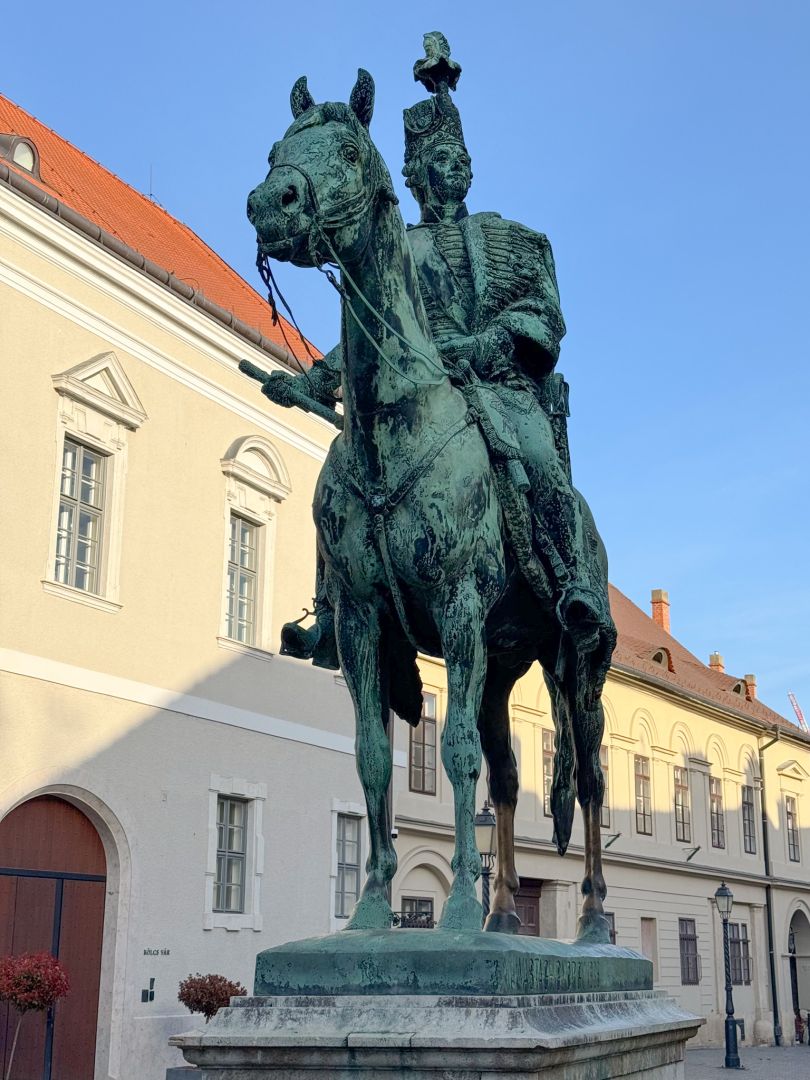
András Hadik, the dashing hussar, is depicted with his head adorned with a richly decorated hussar’s shako featuring a plume. In his right hand, he holds a marshal’s baton symbolizing power, while his shoulders are draped in a decorative mantle over an ornately braided dolman, and he wears spurs on his boots.
Encased in glass within the pedestal, there is a list of soldiers from the 3rd Hussar Regiment who have fallen since 1702, placed there by those who commissioned the statue.
The statue was unveiled on April 29, 1937, and was crafted by György Vass. A notable observation about the statue is its patina, a greenish noble rust covering the entire sculpture except for one area—the horse’s testicles. It is a tradition among engineering students at the nearby university to polish the horse’s testicles before their exams. This ritual is believed to bring them luck and good results.
Who Were the Hussars?
The term “hussar” originally referred to Hungarian light cavalry. Light cavalry units were composed of soldiers mounted on horses, equipped with minimal weaponry and protective gear. The designation of hussars dates back to the 1400s. The king required his subjects to send one mounted soldier for every 20 plots of land to serve in his army. Since other European countries did not have light cavalry within their armies, the structure of the hussar units was often established based on the Hungarian model in many countries, and they are still referred to as “hussars” in various languages to this day.
26. Statue of John of Capistrano
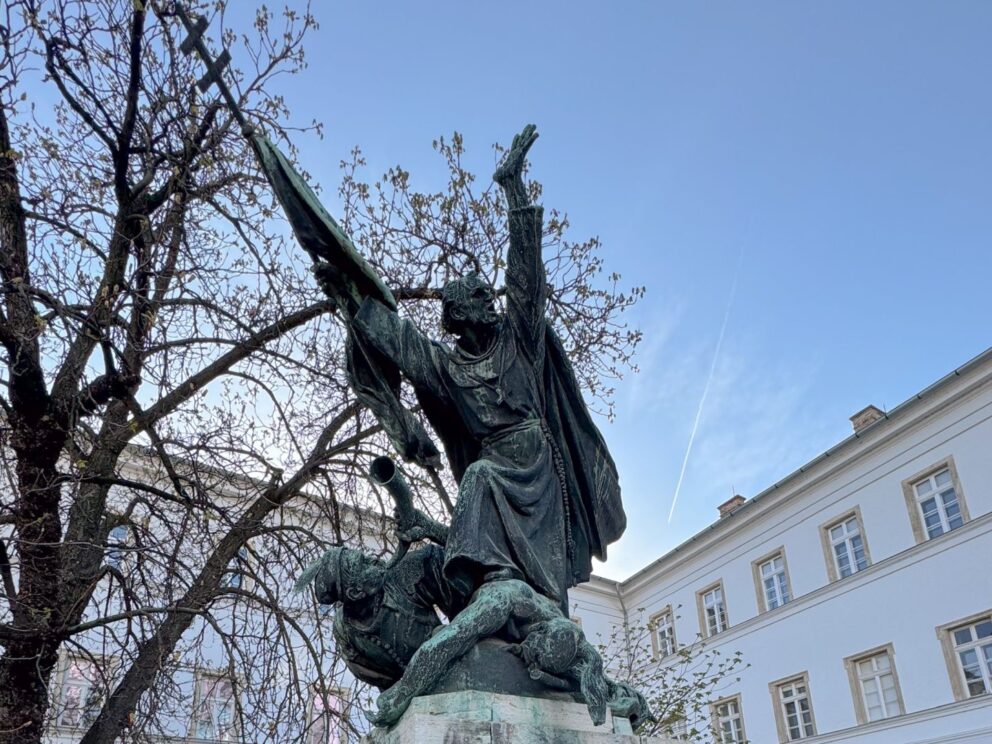
The statue of John of Capistrano, created by József Damkó in 1922, stands three meters tall with a base of 250 cm. It was erected in honor of the 465th anniversary of Capistrano’s death and the 700th anniversary of the Franciscan Order’s presence in Hungary.
The statue depicts a scene from the Battle of Székesfehérvár. It shows the hero in monastic clothing, inspiring the fighters to charge by holding the Apostolic Cross flag in his right hand. At his feet, a Hungarian bugler climbs onto a bastion, and a fallen Turk is visible, illustrating the fervor and drama of the battle.
27. National Archives of Hungary
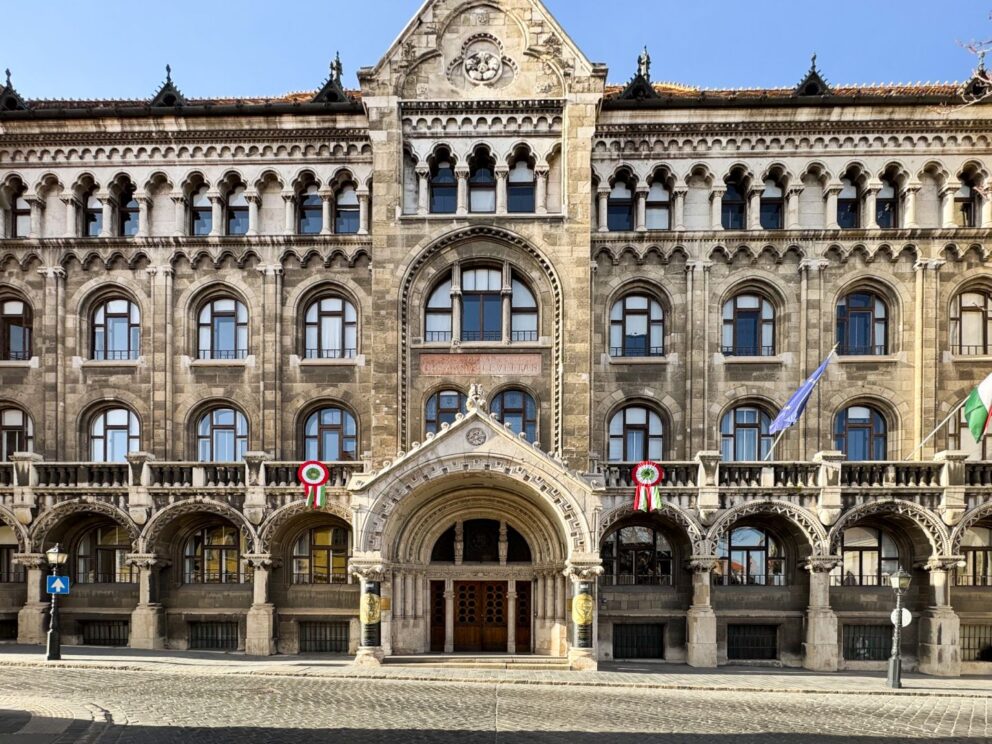
The National Archives of Hungary was designed by Samu Pecz and constructed specifically for archival purposes between 1913 and 1923. The National Archives serve as a repository for national treasures, holding the most extensive collection of fundamental charters, documents, and coats of arms created over the past thousand years of the country’s history. The oldest document preserved here dates back to 1109.
The building suffered significant damage during the siege of Budapest in the winter of 1945, receiving numerous artillery and bomb hits. As a result, a warehouse on the eastern side facing Vienna Gate was completely destroyed, parts of the western wing and the research room collapsed, and the tower was so severely damaged that it was beyond repair. The reconstruction efforts had not yet been completed when, on November 6, 1956, a tank shell struck the western wing, leading to a fire that completely destroyed one warehouse and spread to two others. Full restoration was completed by 1961. In the 1980s, the roof was re-covered with pyrogranite tiles similar to the original, produced by the Zsolnay factory in Pécs.
28. Military History Museum
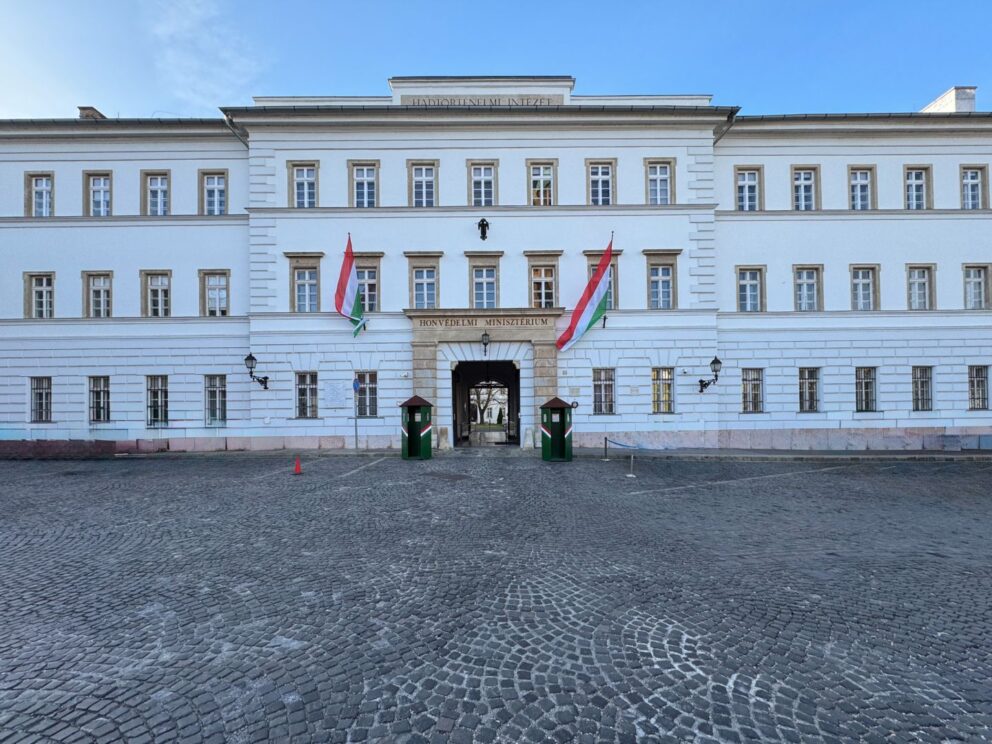
The Military History Museum has relocated to Székesfehérvár. However, the Military Historical Archives and the Military History Library remain accessible to researchers.
The museum’s collection includes over fifty thousand items. Among these are military uniforms and a collection of 28,000 coins and medals. As a result, tourists visiting the original location can only admire the magnificent building from the outside. To the left of the entrance, visitors can see cannonballs that were fired by the Hungarian army during the siege of the fortress in the spring of 1849.
29. Mary Magdalene Church
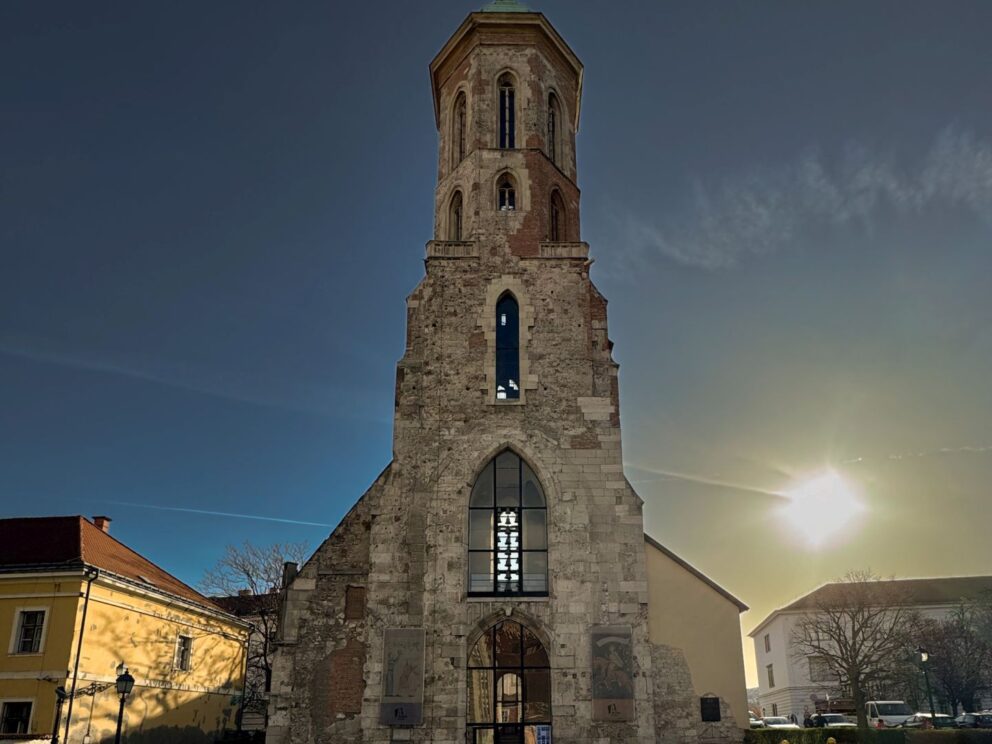
In the Buda Castle District, apart from Matthias Church, another church tower rises above the houses and the city itself. Today, this tower stands alone, as only the barely protruding remains of the former church walls remind us of the original building (except for the several stories high Gothic window that was reconstructed in the 1980s).
Mary Magdalene Church was built shortly after the Mongol invasion in the 13th century. At that time, the layout was already defined: the Royal Palace to the south, the Church of Our Lady (for German-speaking believers) in the center, and Mary Magdalene Church (for Hungarian believers) to the north.
The church was severely damaged during World War II and was subsequently demolished. Only one symbolic stone window was rebuilt. The remaining tower offers a stunning panoramic view and allows visitors to listen to the play of the country’s largest carillon, which operates with 24 bells. The smallest bell weighs 8 kg and the largest nearly 35 kg. The bronze bells are sounded by an electromagnetic striking mechanism controlled by a computer-driven custom electronics system. The carillon’s control equipment, located on the first floor of the tower, is accessible to visitors.
Currently, the carillon is not operational due to damage from a lightning strike in 2020 that affected its most sensitive and unique parts.
Interesting Fact:
The noon bell ringing. In 1456, John Hunyadi’s defenders and John of Capistrano’s crusading forces achieved victory over the Sultan’s armies at the Siege of Belgrade. This decisive victory on the battlefield helped Hungary and Europe avert the threat of Turkish expansion for many decades. Since then, the noon bell reminds the Christian world of Hunyadi’s triumph.
30. Coronation Robe
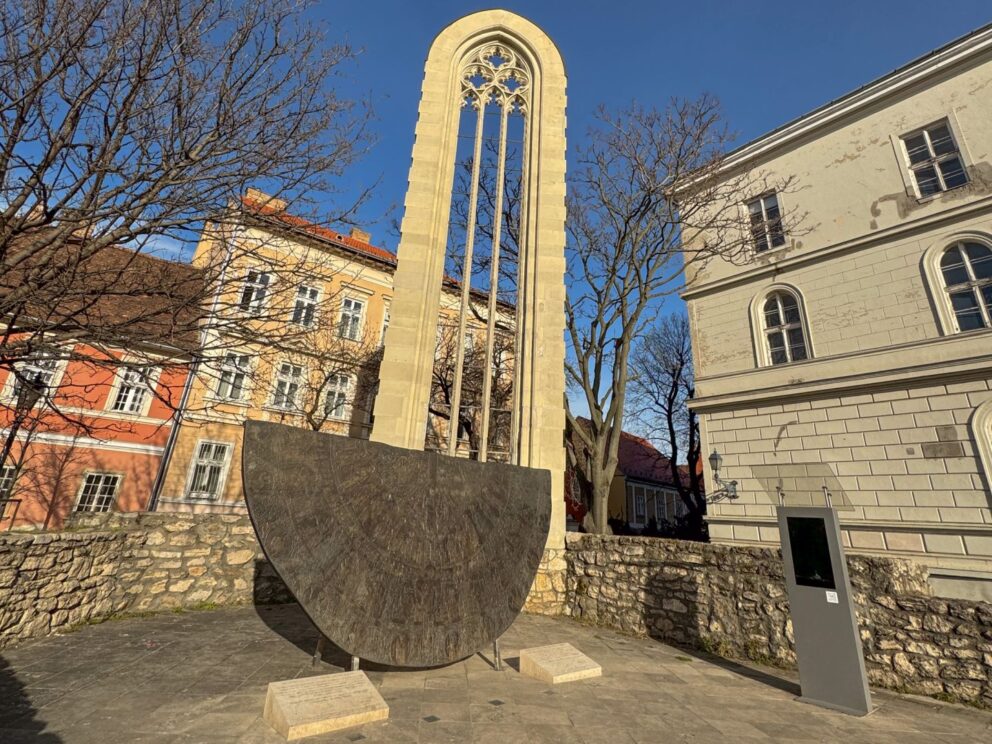
Originally a bell-shaped, closed chasuble, the coronation robe was commissioned by the first Christian King of Hungary, Saint Stephen (997–1038), and Queen Gisela. They donated it to the Church of the Virgin Mary in Székesfehérvár. Around 1200, it was modified and then used for several centuries during the coronation of Hungarian monarchs. The original can be seen at the Hungarian National Museum.
The bronze relief was created by sculptor Tibor Rieger in 2012. What makes this artwork unique is that it does not merely replicate but reinterprets and brings to life in three dimensions the originally flat representations, giving personality and face to each figure depicted on the richly adorned national relic.
31. Red Hedgehog House
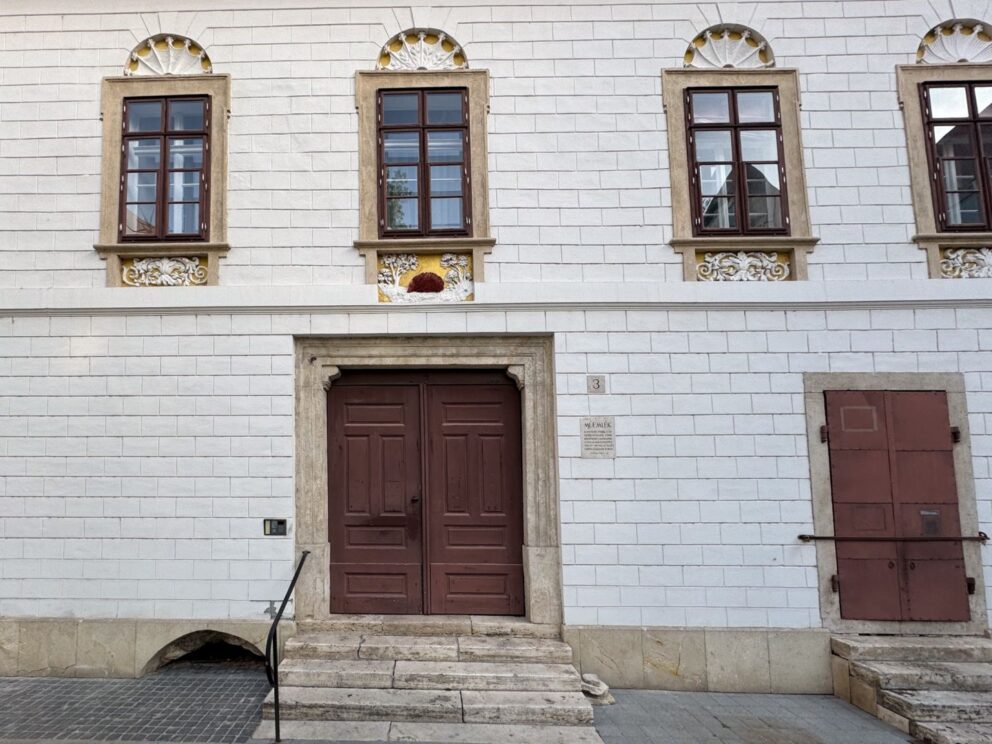
The Red Hedgehog House is Budapest’s oldest house still inhabited today. Constructed in the second half of the 1200s, it was referred to in the second half of the 1300s as the house guarding the body of Saint Paul the Hermit because it held one of his relics.
During the Ottoman period, the building suffered significant damage, and it was near this house that Buda’s last Turkish governor, Abdurrahman Abdi Arnaut Pasha, fell. After the recapture of Buda, the building was restored, and in 1696 the Red Hedgehog Inn opened on the street-facing side, becoming for a long time the only inn in the Buda Castle District.
By the end of the 1700s, the Red Hedgehog Inn was considered too small and outdated. The local authorities urged the owner to expand the building, but he was unable or unwilling to comply. Subsequently, the house served as a dental clinic.
Between the two world wars, it operated as a brothel. In 1959, it was renovated, largely maintaining its neoclassical style.
32. Statue of Pope Innocent XI
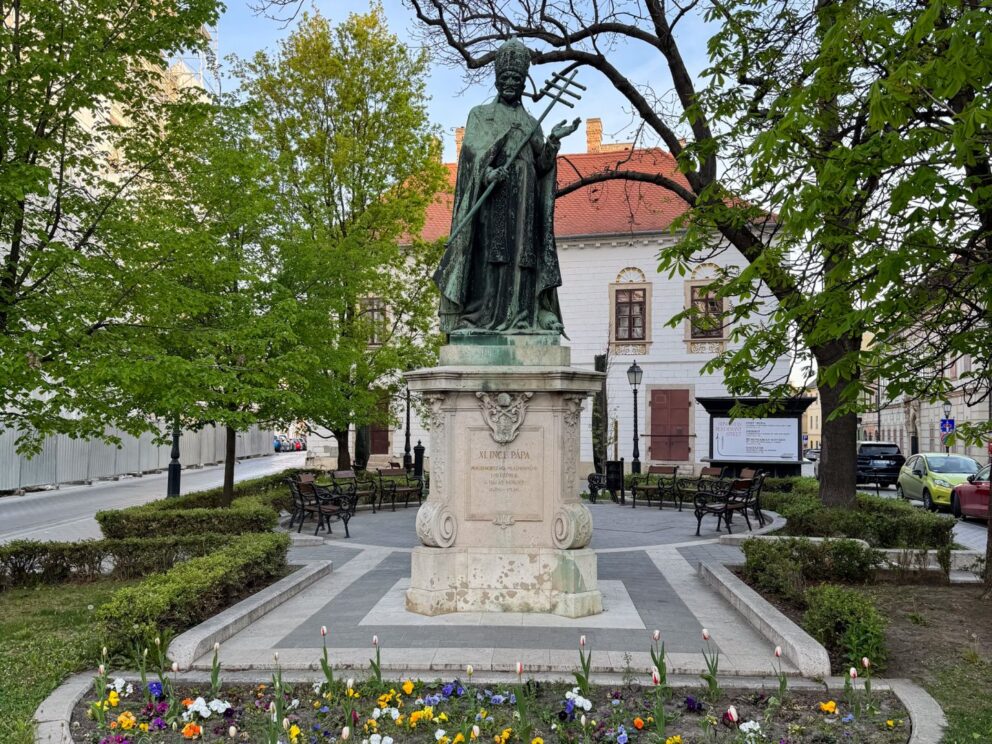
The statue depicts Pope Innocent XI, head of the Catholic Church, holding a large cross symbolizing papal authority. Pope Innocent XI played a crucial role in organizing the Holy League in 1684, which was instrumental in driving the Turks out of Europe. On the back of the statue’s pedestal are images of the leaders of the states that formed the Holy League. One side of the pedestal depicts the pope delivering the papal bull proclaiming the Crusade, while on the other side, a Hungarian hajduk is shown being the first to plant the Hungarian flag on the ramparts of Buda Castle.
The location of the statue is significant: it marks the spot where Abdurrahman Abdi Arnaut, the last Ottoman governor of Buda, was killed during the recapture of the castle.
The statue was erected on the 250th anniversary of the recapture of Budapest castle and was crafted by János Damkó in 1936.
33. Houdini House
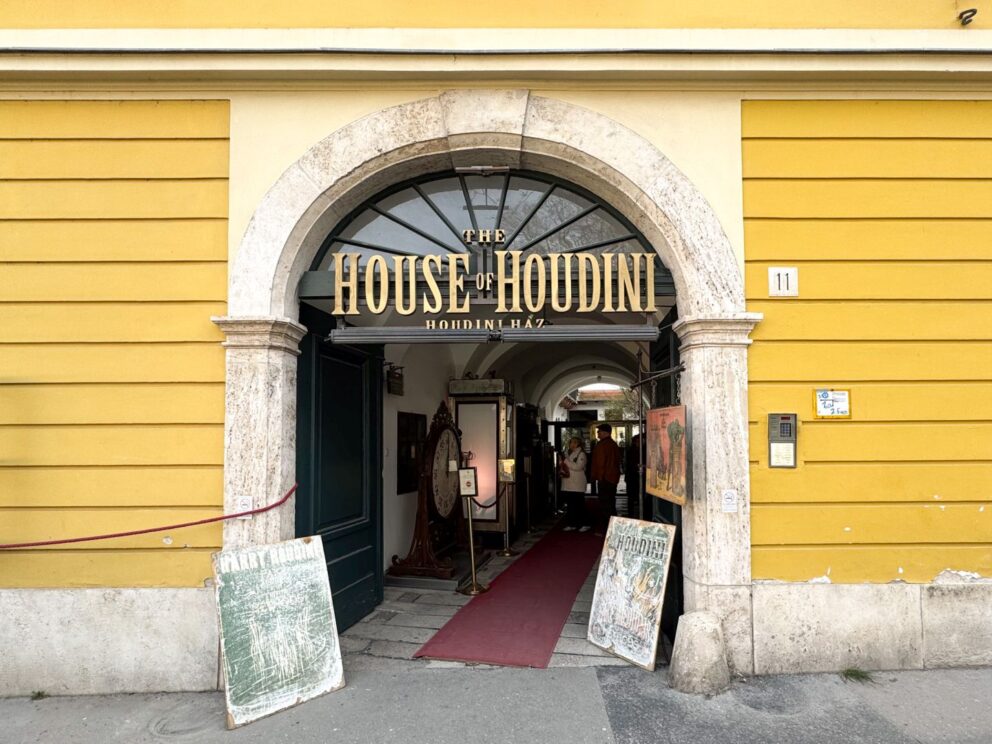
The enigmatic, mysterious, and inscrutable secrets of the escape artist Harry Houdini may never be fully uncovered. However, a visit to Houdini House can bring you a bit closer to the magician. Arrayed in front of the entrance are some of Houdini’s famous tools. This foyer is a favorite spot for tourists to take photos, with many capturing themselves attempting to escape from one of Houdini’s special contraptions. Those interested in seeing more of the magician’s array of tools will need to purchase a ticket.
Harry Houdini had Hungarian roots. He was born in Hungary and emigrated to the United States with his family at the age of four. (Although he always claimed he was born in America.)
34. Angelic Hungarian Coat of Arms
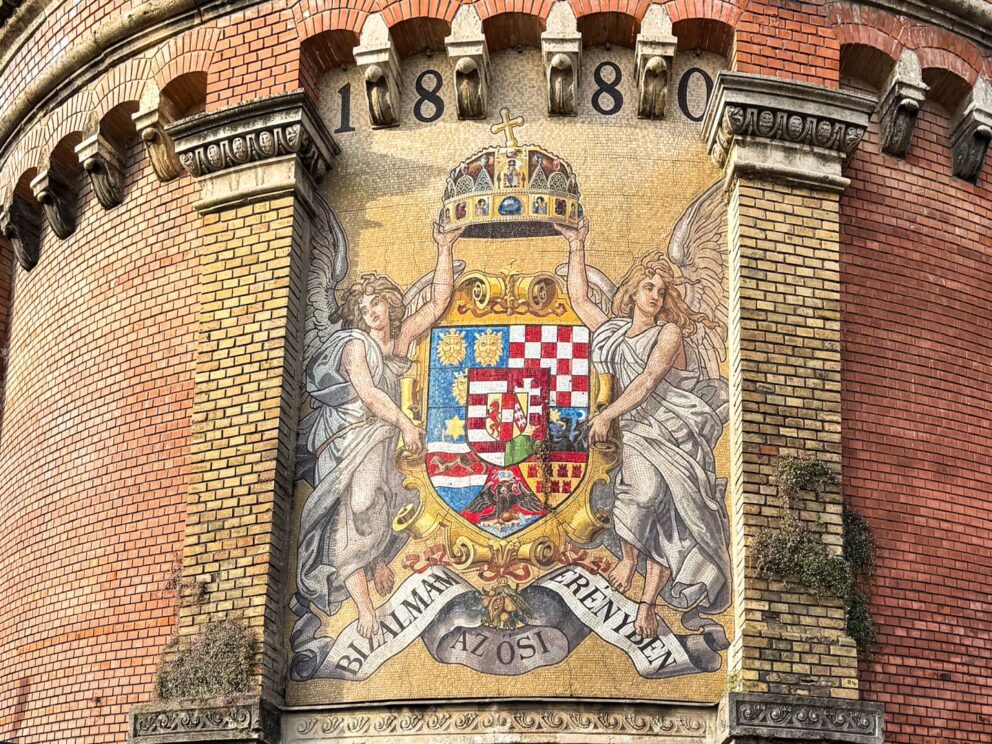
Located near the lower station of the funicular, the main ornament of the red brick wall is the angel crest, where two angels hold the Hungarian crown above the grand unified coat of arms of Hungary. This crest was the symbol of the Kingdom of Hungary during the existence of the Austro-Hungarian Monarchy from 1867 to 1918, following the Compromise of 1867.
The inscription on the crest reads “1880 and my trust in ancient virtue.” This quote was the motto of Emperor Franz Joseph I, which also appears on several contemporary coins. During the communist era (1950), the crest was walled up but has since been restored and now adorns Clark Ádám Square.
35. The 0 Km Stone
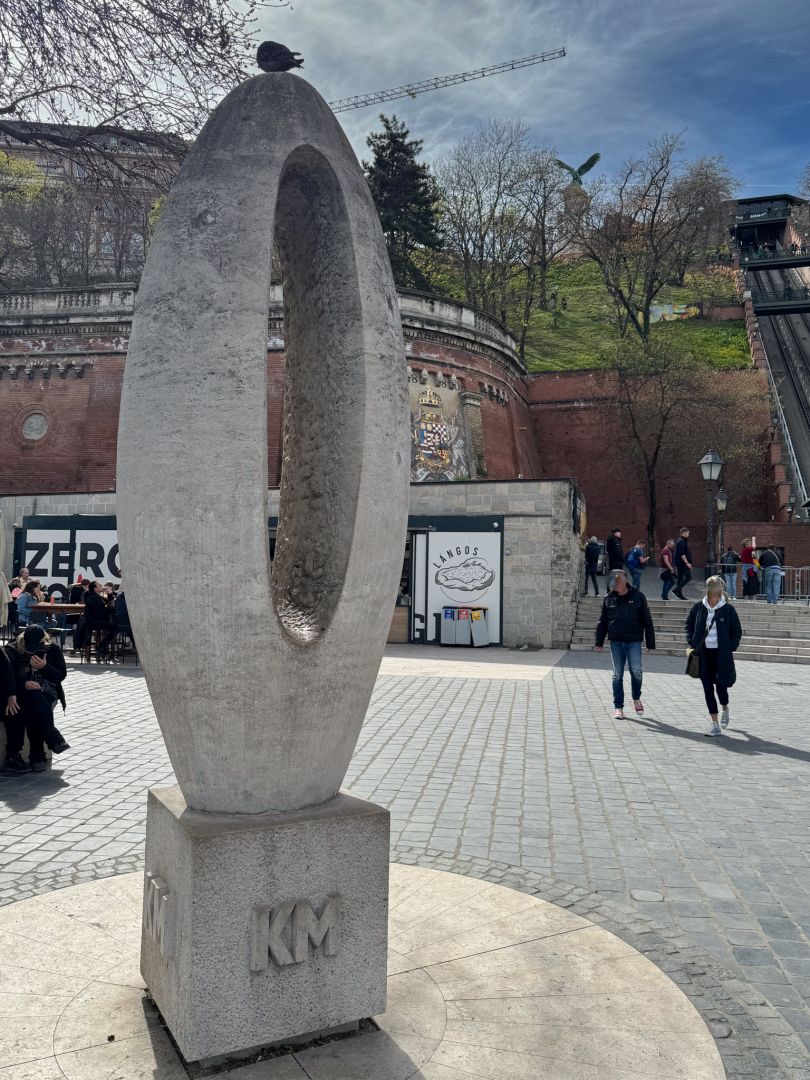
This site features an oval-shaped numeral “0,” reminding us that nearly every single-digit main road in the country starts from this point, except for the number 8 main road, which begins near Székesfehérvár. This stone serves as a central reference point from which distances to other parts of Hungary are measured.
36. Riding Hall
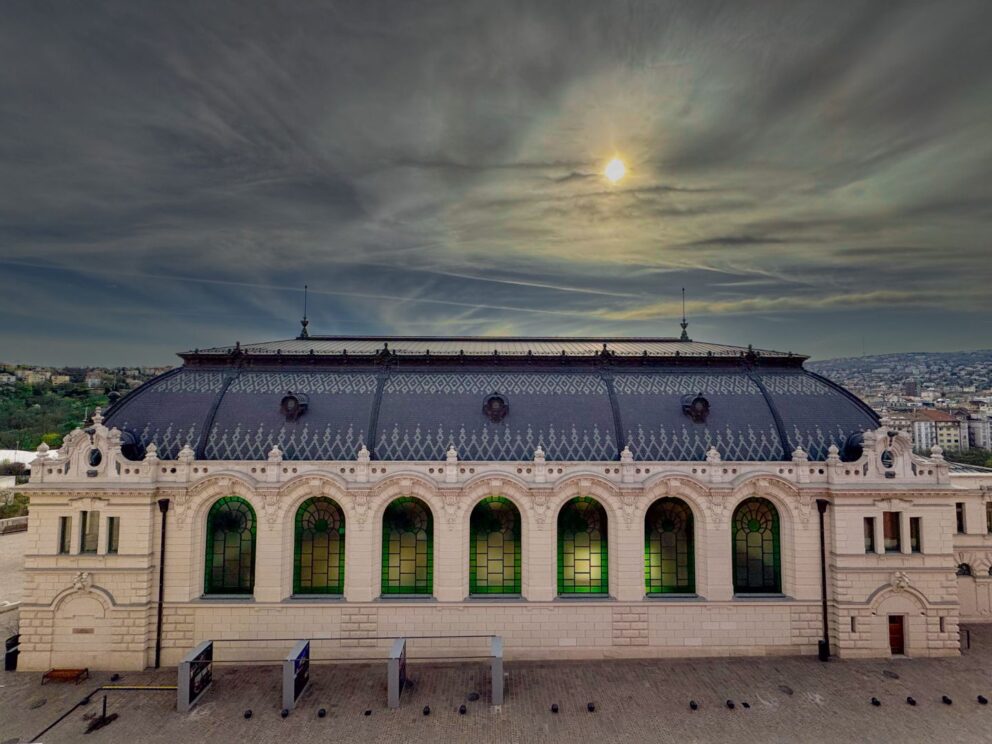
Constructed in 1901, the riding hall suffered only minor damage during World War II. Despite this, it was demolished under communist rule. It was rebuilt according to the original turn-of-the-century plans and completed in 2022.
The riding hall functions not only as a venue for equestrian activities but also as one of Budapest’s most modern and elegant event centers.
One of the most decorative features of the riding hall is its large stained glass windows, which are the work of Miksa Róth.
37. Karakas Pasha Tower
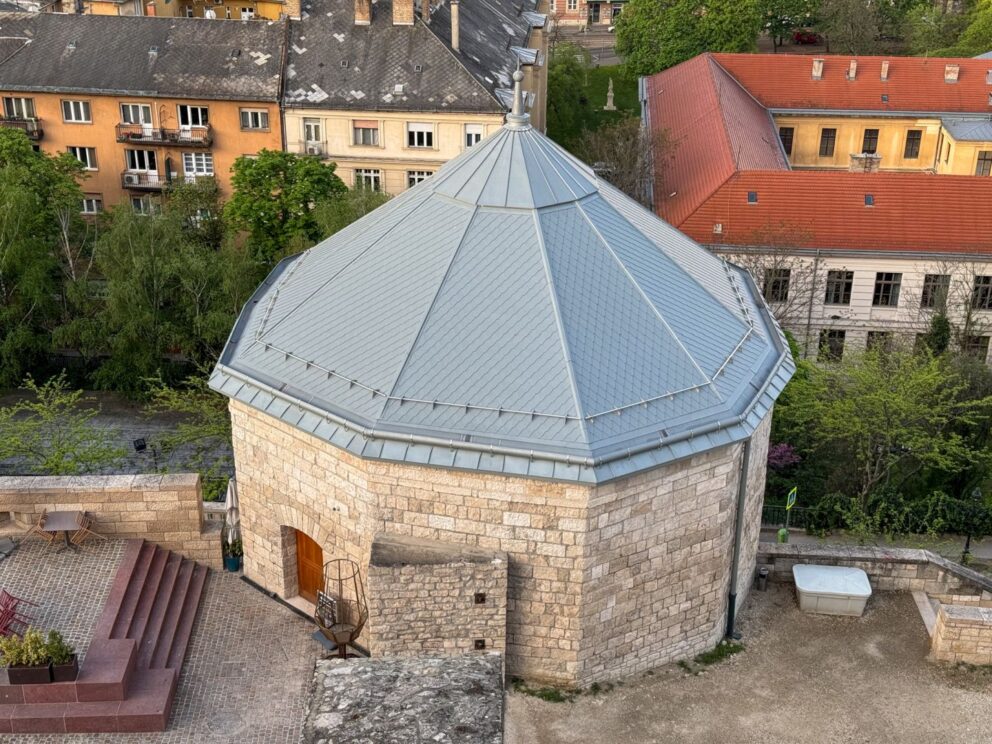
Karakas Mehmed Pasha, the governor of Buda, built this tower around 1620. It was restored after World War II during a series of renovations. Next to the tower, a small green area has been developed as a resting place. The tower itself houses facilities including restrooms, a café, and a souvenir shop.
38. Bronze Gate of the Guardhouse
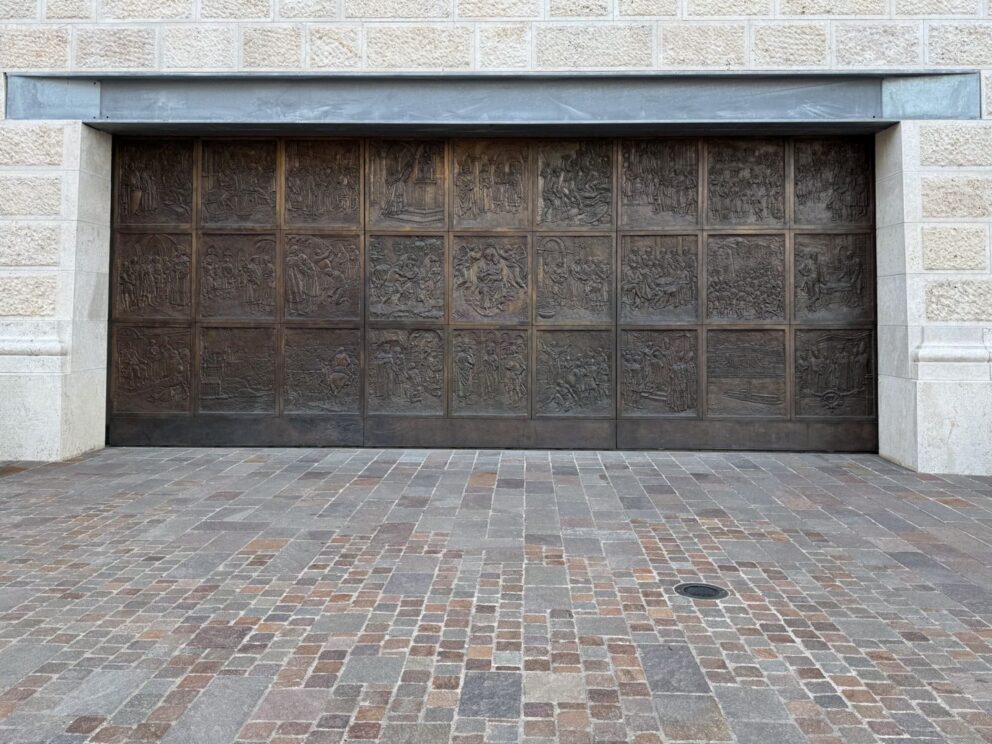
This imposing bronze gate, which measures 7 meters in width and 3.2 meters in height, adorns the Guardhouse building. The gate leads to an underground archaeological space where remnants of the medieval Sigismund Palace, destroyed in the explosion of 1686, can be viewed.
Created by sculptor Ferenc Farkas, the gate features a total of 27 reliefs arranged in three rows. These reliefs depict various events related to the history of Buda Castle, offering a visual narrative of the castle’s rich past.
39. Stöckl Steps
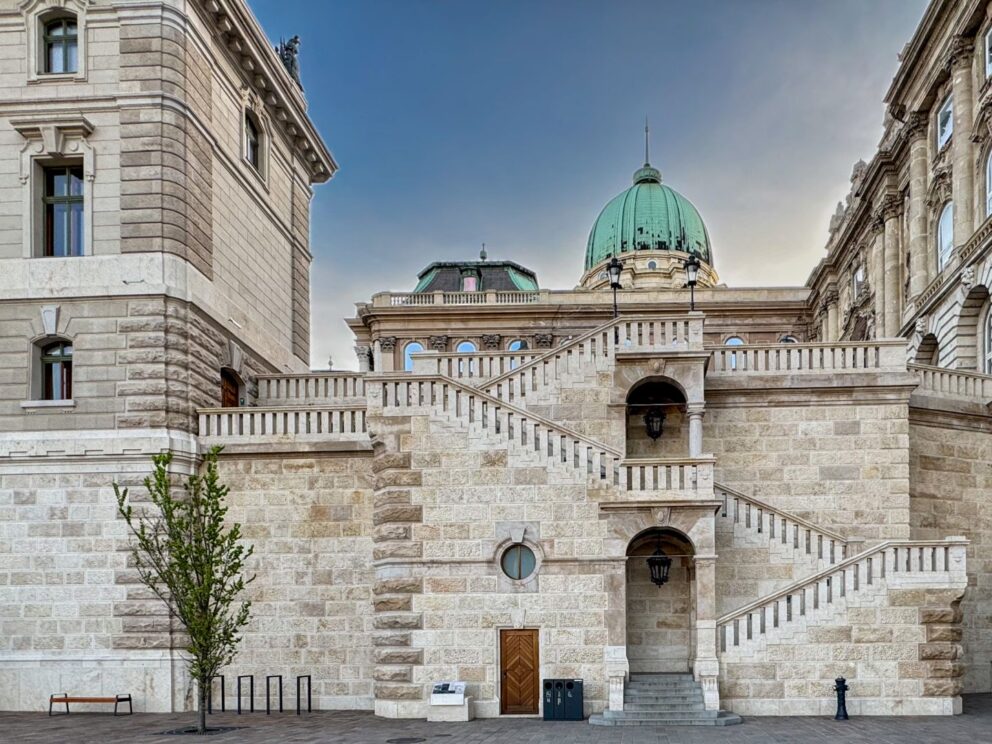
The Stöckl Steps begin at Csikós Court and lead up to the level of the castle, guiding visitors to the Lion’s Court. A unique feature of these steps is that they are integrated with the adjacent Guardhouse building, resulting in entrances to the Guardhouse both at the bottom and the top of the steps.
The steps are covered with ashlar stones and are adorned with Renaissance-style balustrades, which highlight their construction during the era of Neo-styles. In 1971, the Stöckl Steps, along with the Guardhouse, were demolished but were later reconstructed together with the Guardhouse.
40. Guardhouse Building
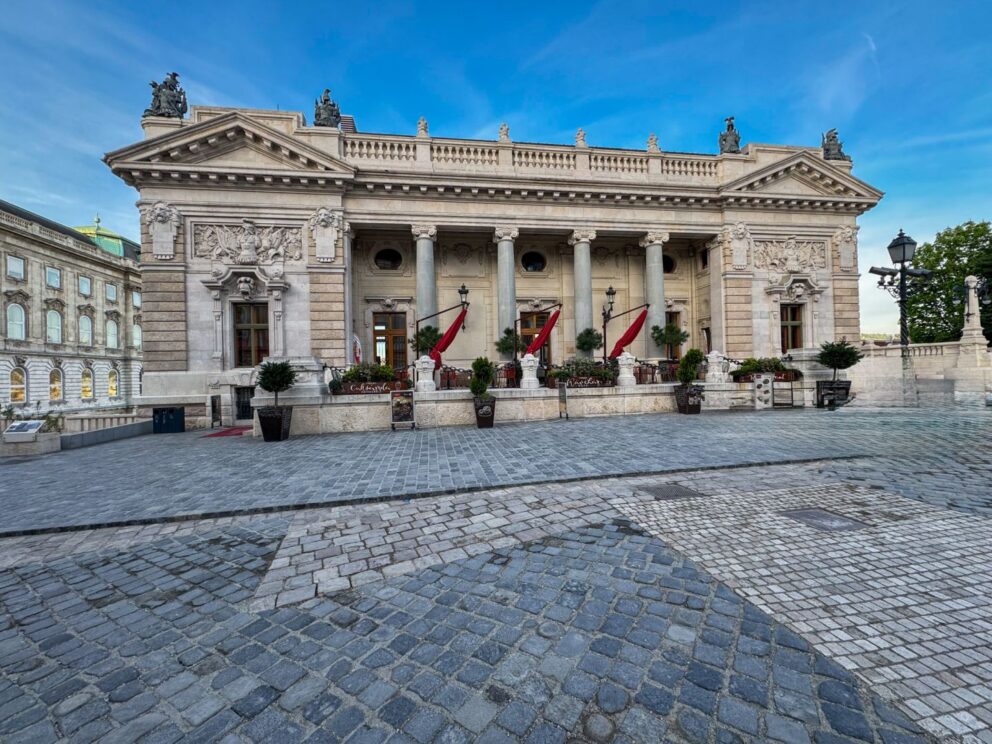
Originally, in the 1800s, the castle superintendent’s two-story house stood here. By the early 1900s, it had been repurposed to accommodate the Hungarian Royal Guard. The building was reconstructed in 2020, and a distinctive feature of the architecture is the Roman statues on the roof.
On the ground floor of the building operates the Royal Guard Café, while the second floor houses an exhibition dedicated to the Hungarian Royal and Noble Guard. The exhibition showcases the history of the guard starting from its foundation in 1760, featuring uniforms, helmets, and weapons from the collection, highlighting the rich military heritage of Hungary.
41. Roman Statues on the Roof of the Guardhouse
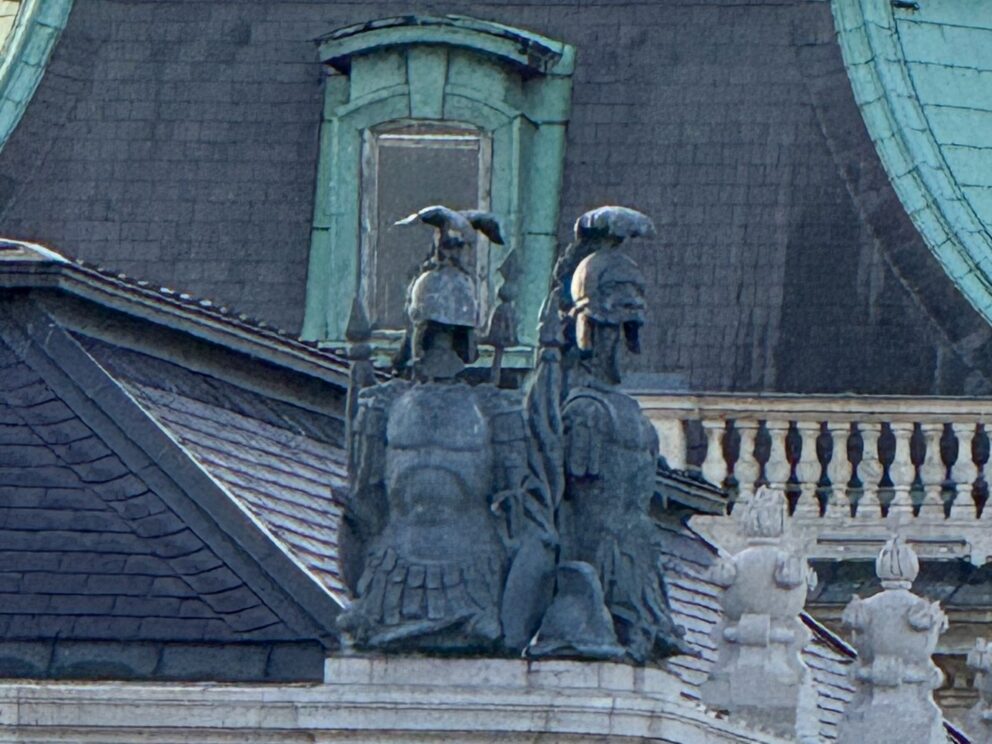
The statues located on the roof of the Guardhouse are the works of Péter Bukovszki. There are a total of 12 statues, essentially consisting of four different variations. These statues evoke a tradition from the Roman Empire, where after a conquest, trophies or victory memorials were constructed from the captured weapons and armor. The statues depict figures without bodies, symbolizing the remnants of vanquished foes.
The birds seen on the helmets represent strength and power, adding a symbolic layer to the historical reference of the statues, connecting the past victories of the Roman Empire with the architectural grandeur of the Guardhouse.
42. Statue of the Old Hussar
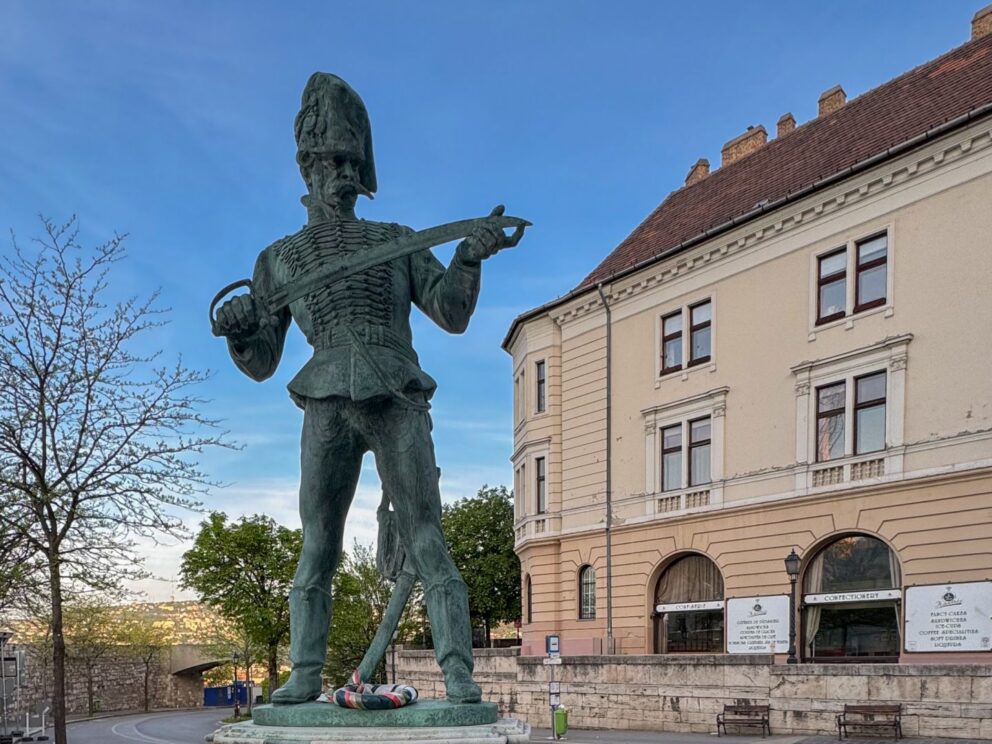
This bronze statue, standing 230 centimeters tall, portrays an elderly hussar dressed in the uniform from the era of Maria Theresa, intently examining his sword. The statue was created to commemorate the 300th anniversary of the formation of the world’s first regular hussar regiment. This piece not only celebrates the rich military heritage of the hussars but also pays tribute to their enduring legacy in military history.
43. Horse-Herdsman Statue
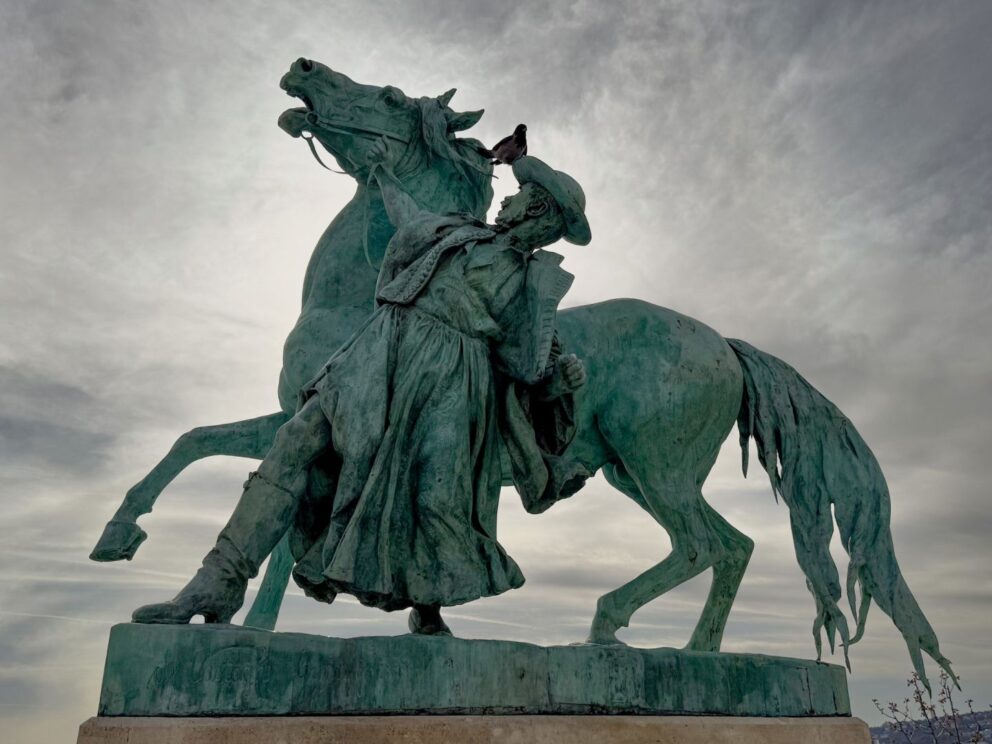
This statue is unique because unlike most public statues that are made from bronze castings, the Horse-Herdsman statue is crafted from embossed bronze elements. This technique requires significantly more work and attention from the sculptor. Initially modeled in clay, the artwork was then shaped from 0.8 mm thick sheets, embossed and hammered out, and the small pieces were riveted together.
Interestingly, the sculptor designed a maintenance hatch on the horse’s back just large enough for a small child to fit through. It is presumed that someone crawled inside the horse to work from within while another person assembled the parts from the outside. This method, while intricate, is not ideal for the statue’s longevity because water can seep into the sculpture through the seams during rain, sometimes remaining inside for days.
An intriguing detail is that in the 1970s, the statue was missing its scrotum, which was restored during a 2019 renovation.
Beyond the technical brilliance, the value of the Csikós statue is further enhanced by the dynamic harmony between the horse and its herdsman. Regardless of the viewing angle, neither the horse nor the rider obscures the other. The horse stands at a height of 380 cm.
The sculptor, György Vastagh Jr., won a gold medal for this statue at the 1900 Paris World Exhibition, highlighting its exceptional craftsmanship and artistic merit.
44. Honvéd Statue
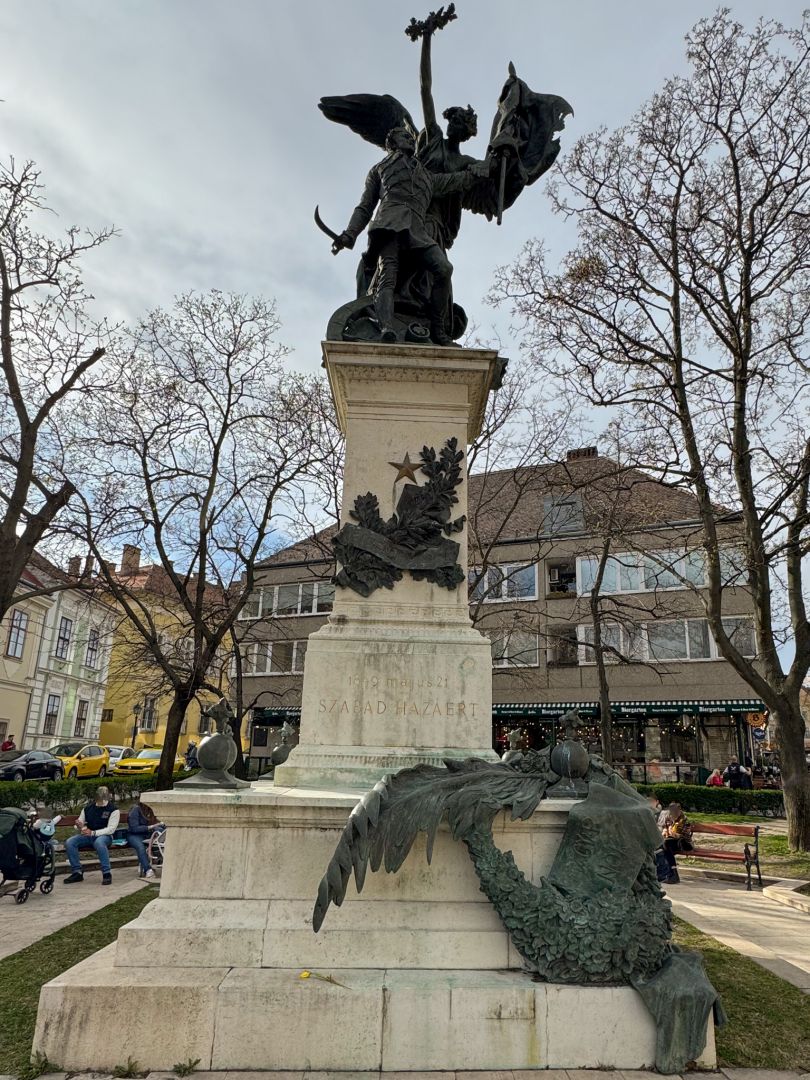
The Honvéd Statue commemorates the Hungarian National Defence Force that captured Buda during the 1848-49 War of Independence. Crafted by the sculptor György Zala in 1893, the statue depicts a honvéd holding a sword in his right hand and a national flag raised high in his left.
The flag is adorned with an image of the Virgin Mary, who is considered the patron saint of Hungary, holding the infant Jesus. The banner on the flag reads “Freedom or Death.” At each corner of the pedestal, one can see a cast iron cannonball. The date inscribed on the statue’s base is May 21, 1849, marking the day when the Hungarian forces recaptured Buda from the imperial troops during the War of Independence. May 21 is also celebrated as Defence Day, a time to remember the heroes who defended our country.
45. Statue of István Bethlen
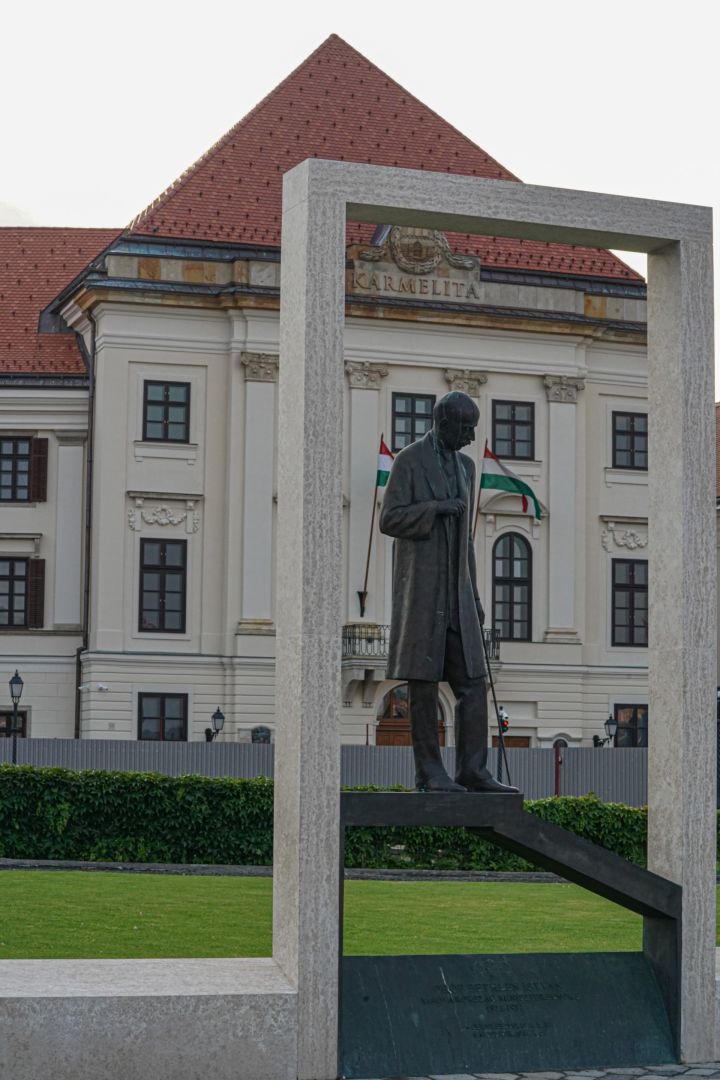
The statue of Prime Minister István Bethlen, created by Géza Stremeny in 2013, commemorates his significant contributions to Hungary. After World War I, Bethlen played a crucial role in stabilizing and revitalizing Hungary economically and culturally, helping to steer the country towards recovery during challenging times.
46. Saint George the Dragon Slayer
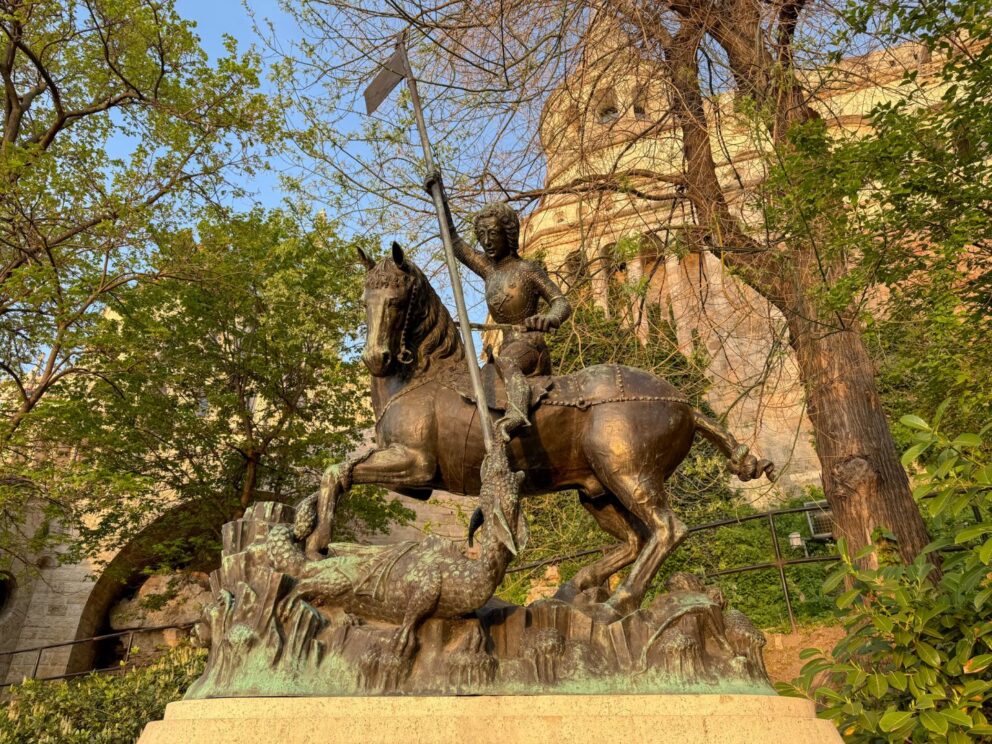
The statue depicts Saint George, a martyr who, according to legend, slayed a dragon. Typically represented as a gallant young man in armor, mounted on a horse, he is shown thrusting his spear into the monstrous beast. The legend of Saint George symbolizes the Christian belief in overcoming evil in all its forms and ending the dominion of demons.
Saint George is revered as a patron saint by several countries and cities, embodying the virtues of courage and protection against evil.
47. Statue of György Dózsa
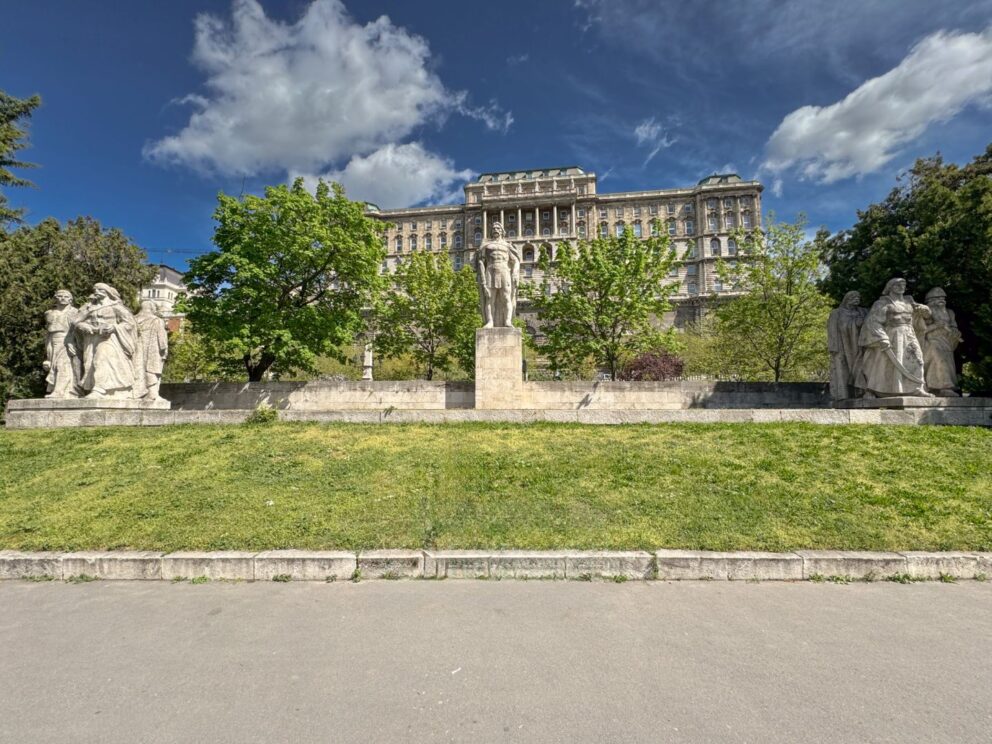
The György Dózsa sculpture group, created by István Kiss in 1961, is composed of three parts made from limestone. The central figure of the composition is the peasant leader György Dózsa. To his right and left, the sculptor depicted his loyal soldiers and fellow campaigners. The statue of Dózsa György stands nearly 5 meters tall, while the figures flanking him are each 4 meters high. This monumental sculpture honors the leader of the early 16th-century peasant rebellion in Hungary.
48. Statues of Six Women at the Royal Palace
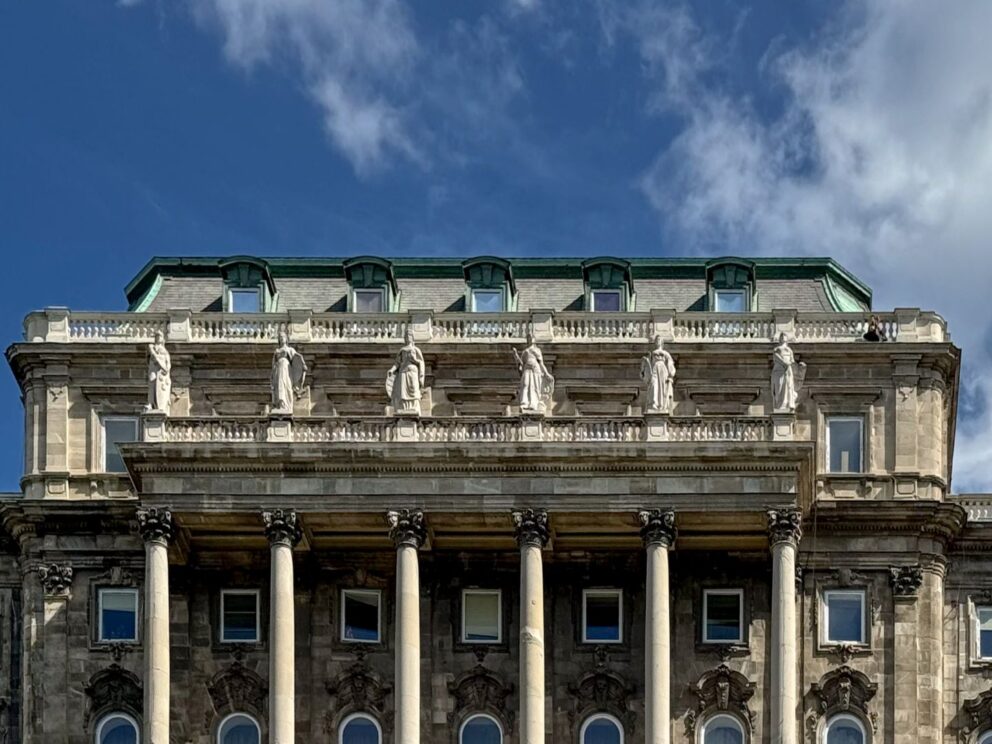
The statues represent several countries (provinces) of the monarchy: Hungary, Transylvania, Croatia, Slavonia, Dalmatia, and Fiume. Each statue holds a shield, onto which the coat of arms of each respective country is carved. These statues symbolize the unity and diversity of the territories under the monarchy, beautifully encapsulating their historical and cultural significance.
49. Statue of the Nun Flying Over the Wall
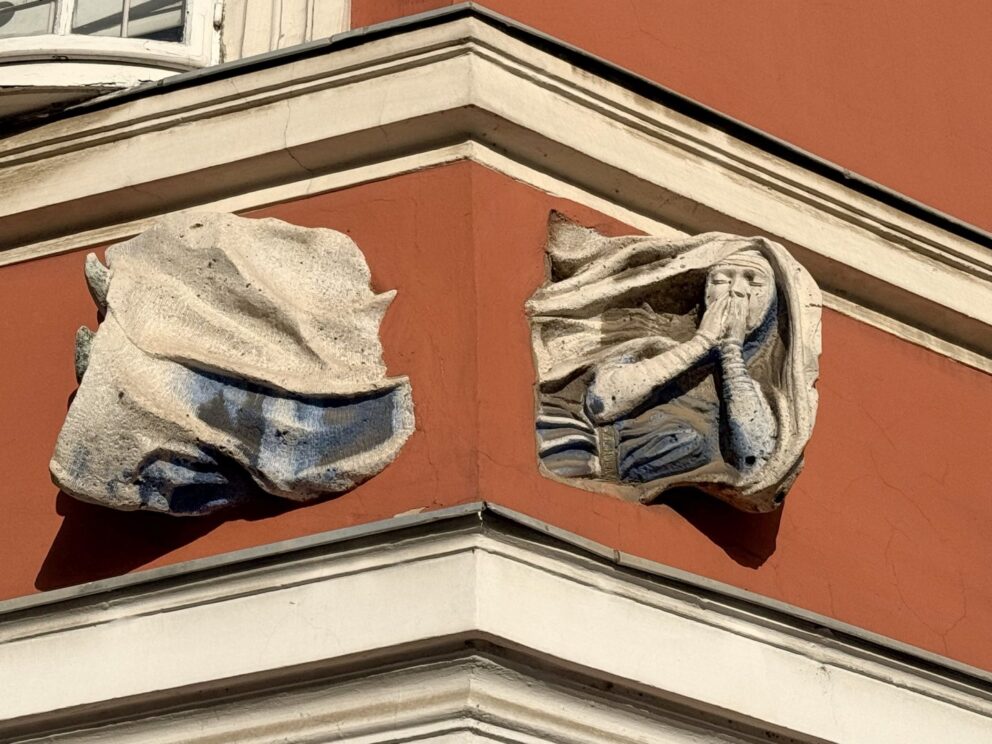
On the corner of Országház Street and Nándor Street, there is indeed a statue depicting a Clarissan nun flying over a wall. This relief is a painted stone sculpture created by Miklós Melocco in 1977. It is a fantastic and unique work of art, capturing a moment of mystical and symbolic significance with great artistic flair.
50. Mansfeld Péter “Falling Star” Statue
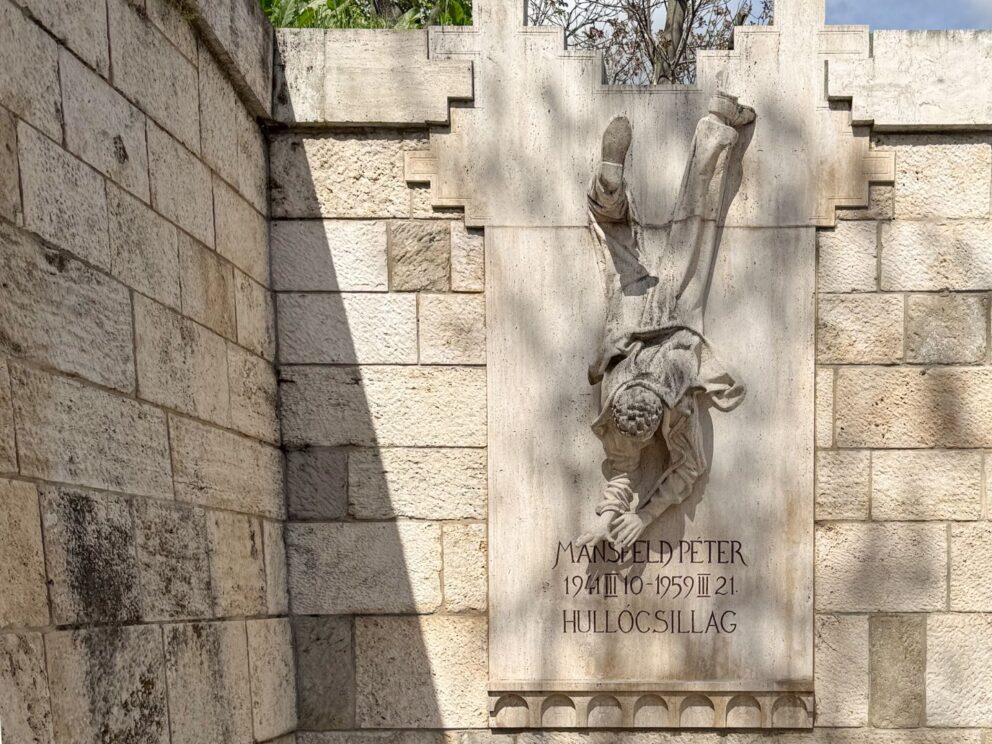
In October 1956, despite his young age, Mansfeld Péter joined the legendary resistance group at Széna Square led by “Uncle Szabó” (1897-1957), where he served as a driver for the insurgents. Mansfeld Péter (March 10, 1941 – March 21, 1959) is remembered as the youngest victim of the revolution. He was wrongfully convicted as a “common criminal” in a sham trial. Although initially sent away due to his age, he later became Uncle Szabó’s liaison driver. Peter did not commit any acts that would justify a death sentence; he did not fight with weapons during the revolution.
During his trial, it was stated, “In political terms, there are no younger or older defendants. They must be dealt with the utmost Draconian severity when sentencing.” Just days after his 18th birthday, on March 21, 1959, symbolically on the 40th anniversary of the Hungarian Soviet Republic, Mansfeld was executed. He was hanged at 9:22 AM in a building next to the Collection Prison.
It is noteworthy to mention the artist, Miklós Melocco, whose father, János Melocco (1909-1951), a journalist, was similarly executed by the merciless communist regime in a show trial by the Budapest Military Court under charges of disloyalty, akin to Mansfeld’s fate.
The statue is located on the wall of the Castle Quarter, at 2 Szabó Ilonka Street.
51. Ancestral Fountain – Zsolnay Decorative Fountain
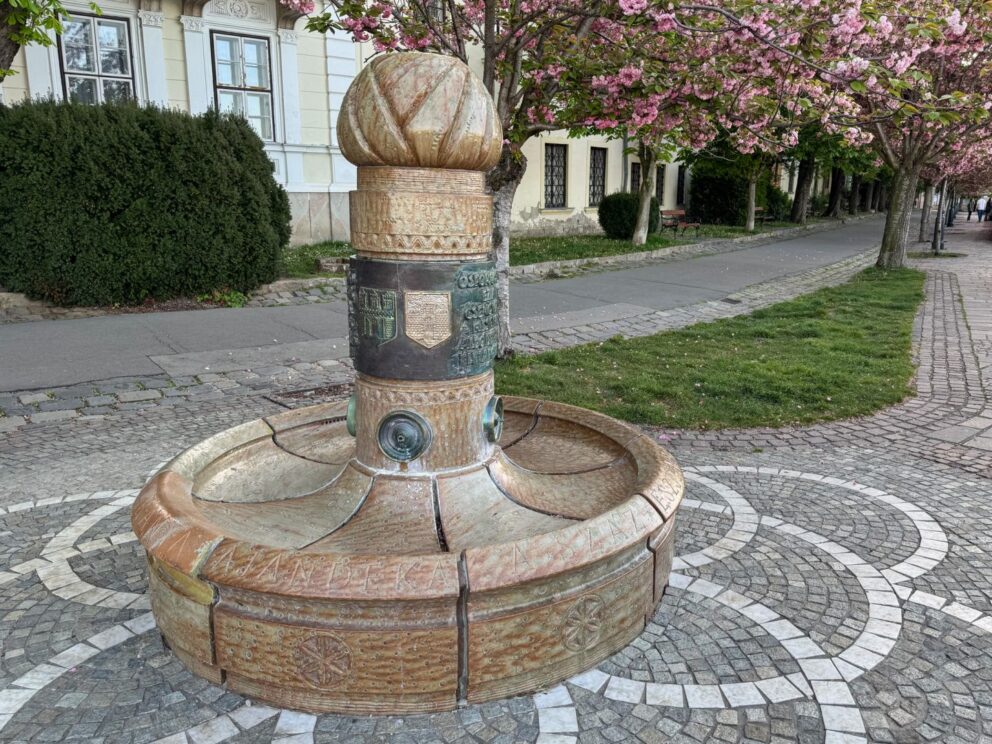
The Ancestral Fountain, a discus fountain, was created to commemorate the centennial of the unification of Buda, Pest, and Óbuda. It is crafted from Zsolnay ceramic and was a gift from the city of Pécs. Its design is said to have been inspired by the headstones of Turkish cemeteries, reflecting a unique blend of cultural history and artistic craftsmanship.
52. Turkish Cemetery, Memorial Site
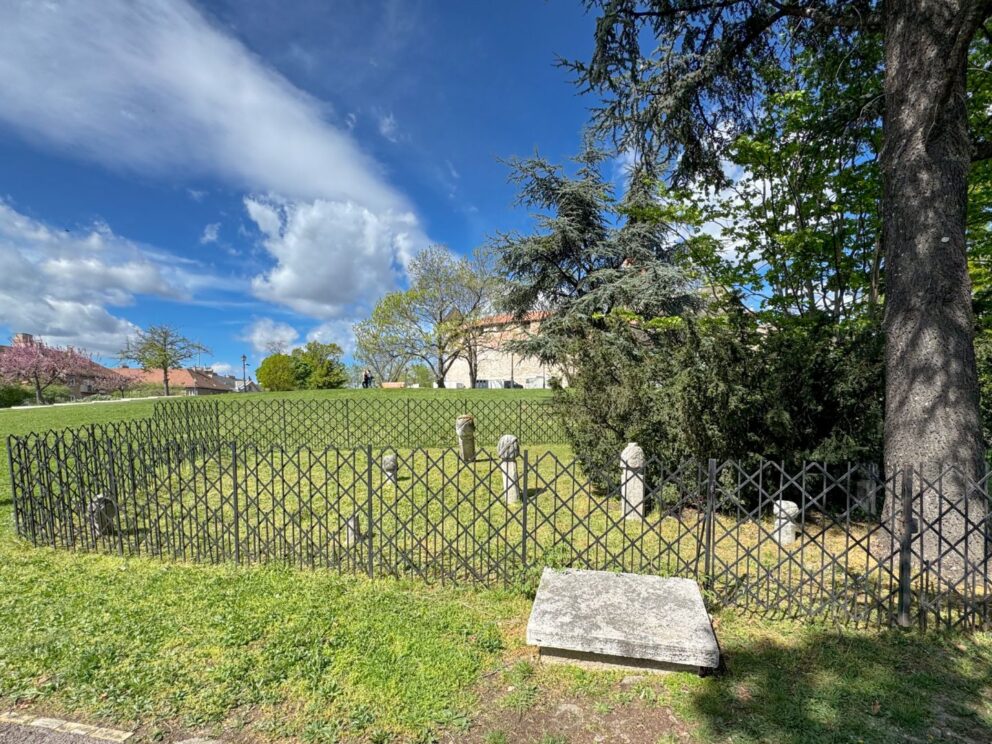
At the base of the large rondella, there are turban-topped tombstones from the Turkish era, although they have been gathered here from various locations only since the mid-1960s. Some of the tombstones placed here were discovered during excavations in the surrounding areas or were extracted from the walls of some of the old castle buildings. Uniquely Eastern plants have been planted next to the graves. Previously, there were about 20 tombstones at this site; today, those that remain are protected by a fence, preserving this piece of historical heritage within the area.
53. Statue of János Hunyadi
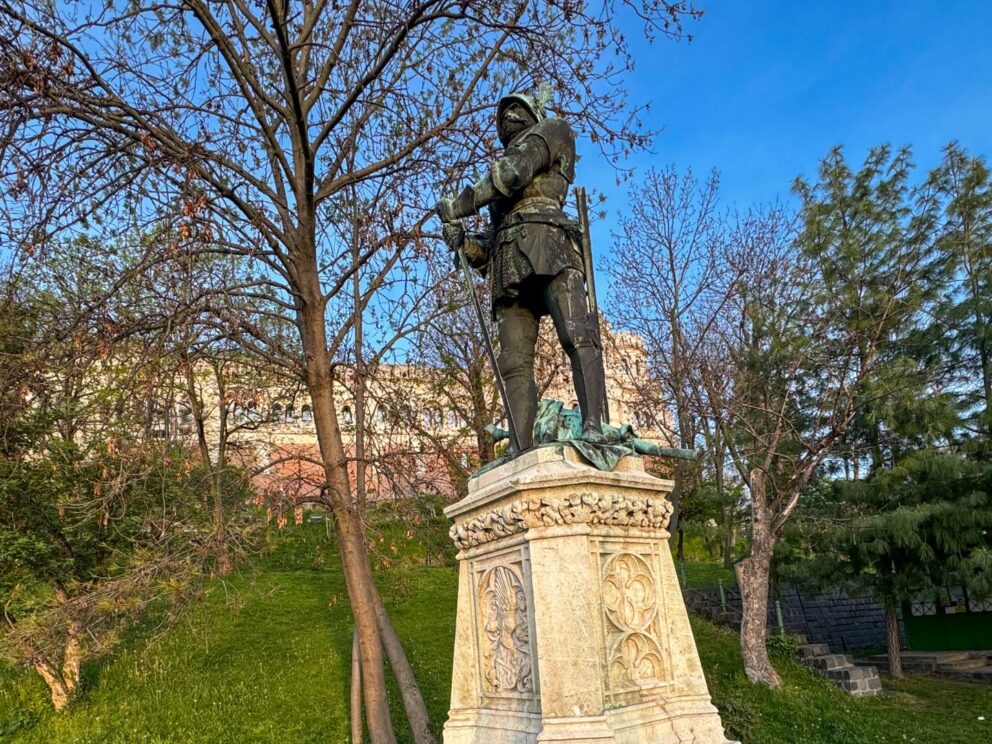
Unveiled in 1903, this sculpture by István Tóth commemorates János Hunyadi, known as the “Scourge of the Turks,” who triumphed over the Turks in the 1456 Siege of Nándorfehérvár (now Belgrade). At the base of the statue lie Turkish flags, symbolizing the defeated Turkish forces.
János Hunyadi was a former Regent of Hungary and is considered one of the greatest heroes of Christianity for his pivotal role in defending Europe from the Ottoman Empire. His legacy as a brilliant military leader and a defender of the Christian faith is captured in this monumental tribute.
54. Gazimestan
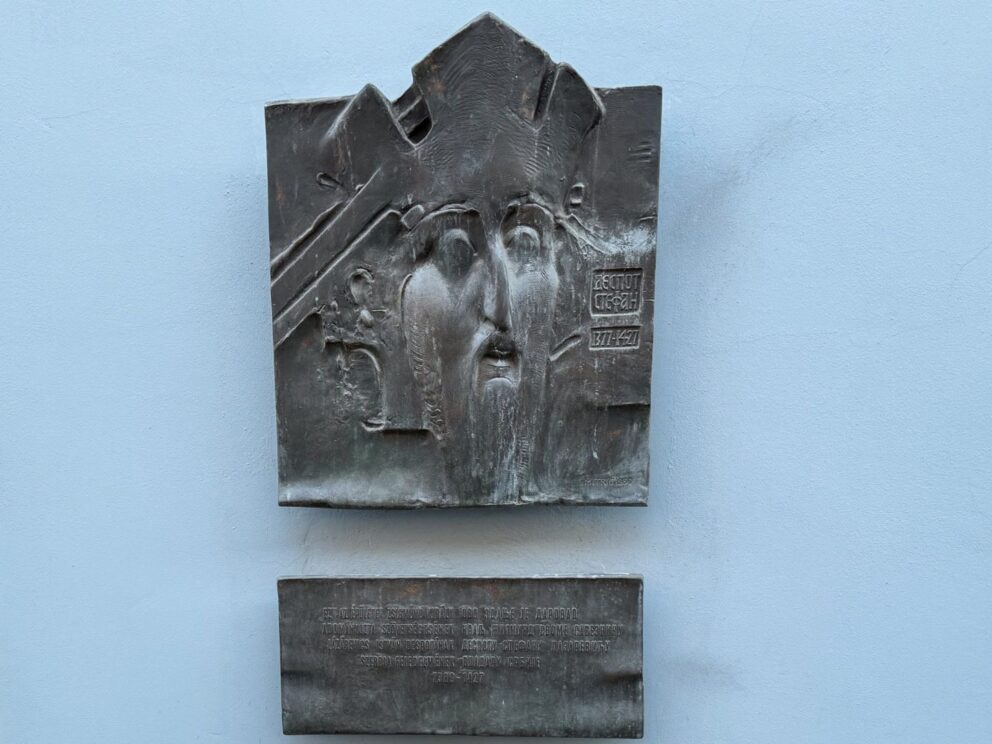
This is a memorial plaque dedicated to Prince Lazar of Serbia, known in Serbian as “Car Lazar,” commemorating the site of the Battle of Kosovo in 1389, where he famously led Serbian forces. This site, Gazimestan, is significant in Serbian history and culture, marking the struggle against the Ottoman Turks. The plaque honors the sacrifice of Prince Lazar, who died in battle, defending his country.
55. Statue of Márton Lendvay
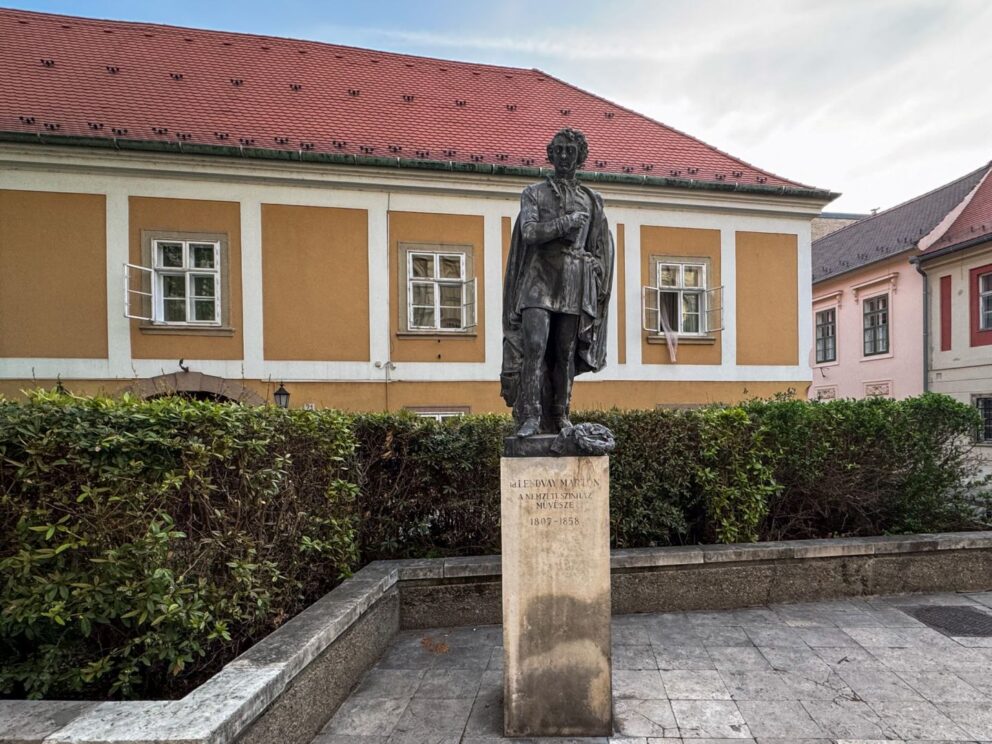
The statue of Márton Lendvay the Elder (1807–1858) is located in the Buda Castle. He was a prominent 19th-century actor at the National Theatre. This statue commemorates his significant contributions to Hungarian theatre and his legacy as one of the leading figures in the dramatic arts during his time.
56. Kazinczy Ornamental Fountain
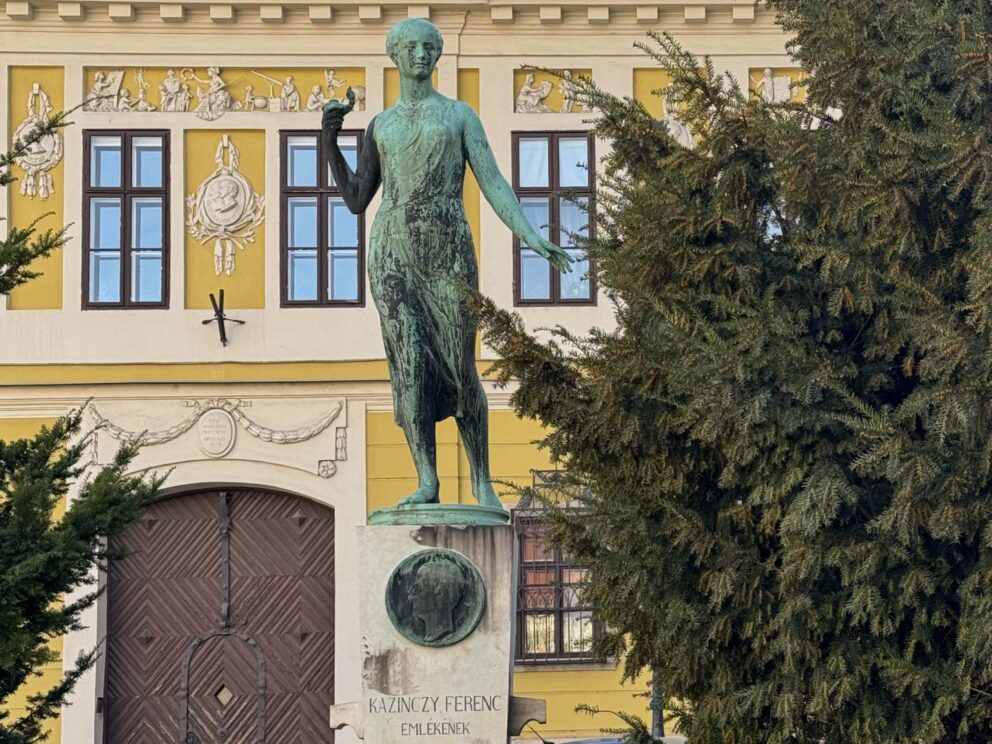
This sculpture was created to commemorate the 100th anniversary of the death of Ferenc Kazinczy. The female figure in the statue holds a torch in her right hand, symbolizing enlightenment and intellectual illumination. This tribute reflects Kazinczy’s significant influence on the Hungarian language and literature, celebrating his legacy as a key figure in the Hungarian Enlightenment.
57. The Striped House
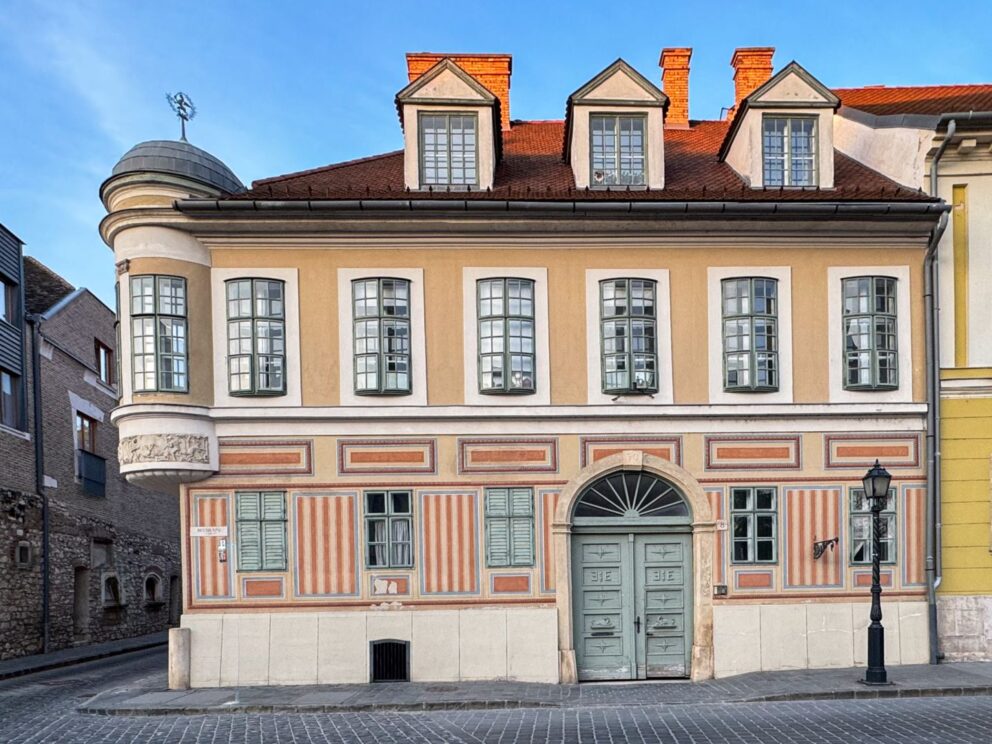
Located at 8 Bécsi Kapu Square, this “pajama-striped” house is notable for its corner balcony, which features a hunting scene. The courtyard of the house has been home to a grapevine since 1947, which has been under nature conservation protection since 1982. Additionally, the courtyard contains a secret air vent for a labyrinth of vents belonging to the National Bank’s bunker and vaults. This unique feature adds an intriguing layer of history and mystery to the already distinctive building.
58. The Tomb of Abdurrahman Pasha
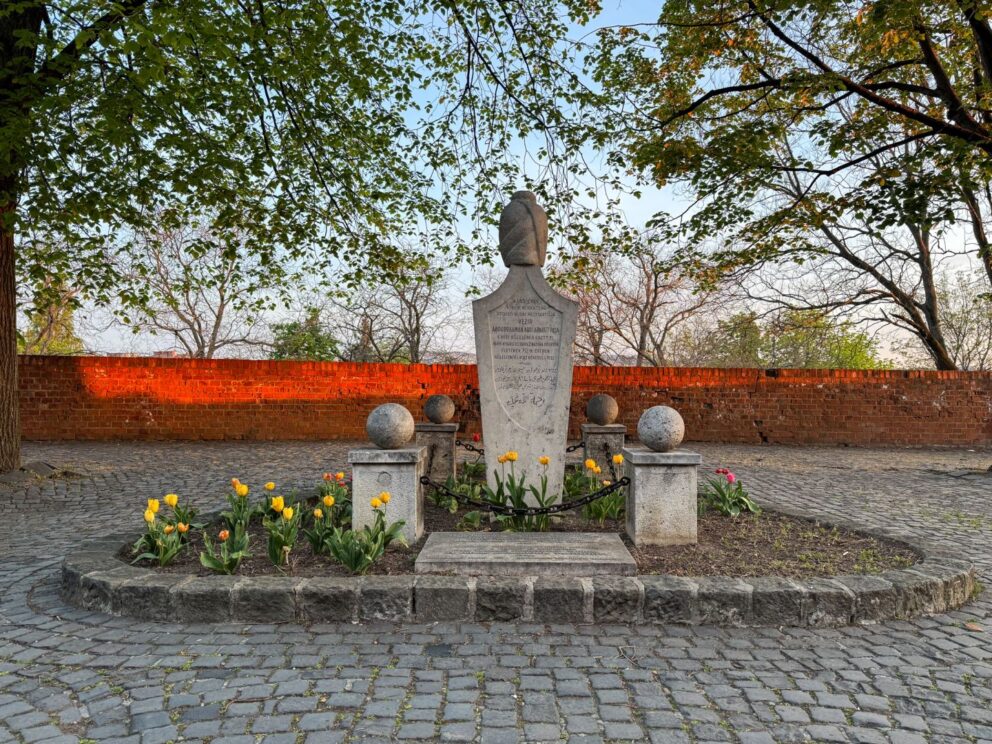
The tomb of Abdurrahman Pasha, the last Ottoman governor of Buda, is located on Anjou Promenade. Abdurrahman Pasha fell during the recapture of the castle. The inscription on his tombstone is written in both Turkish and Hungarian and reads: “He was a heroic opponent, peace be with him.” This respectful epitaph acknowledges his role in history and the respect afforded to him even by those who were his adversaries.
59. Statue of Saint Michael
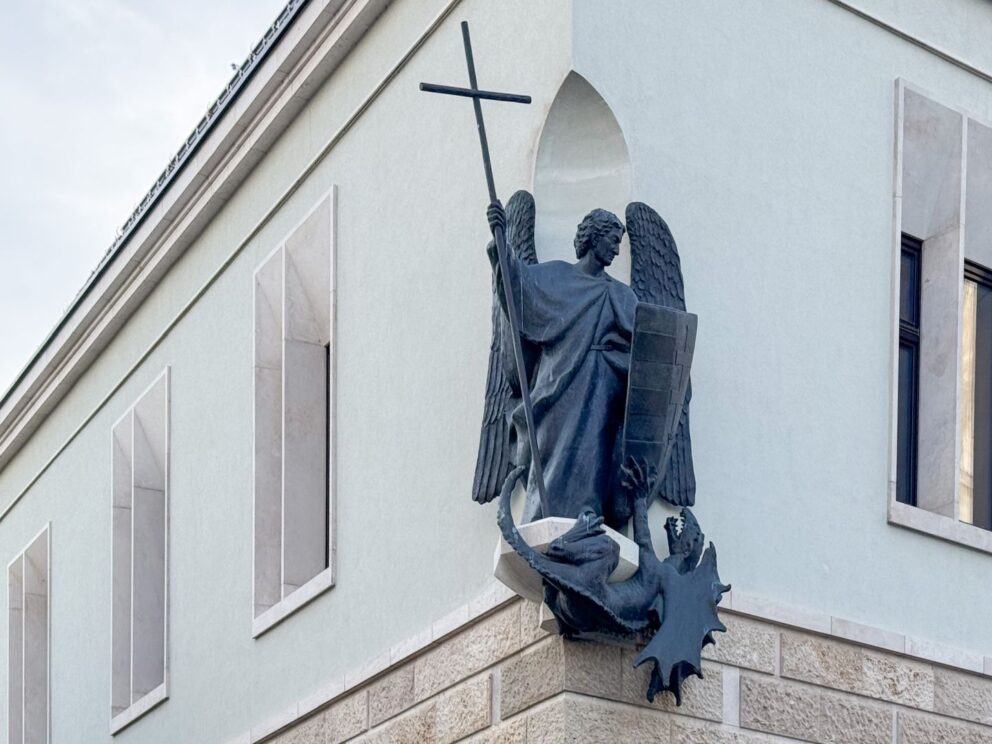
Created by Gábor Zoboki in 2018, the statue features a figure of Saint Michael slightly larger than life-size. In his right hand, he holds a cross, and in his left, a shield. At his feet, a dragon can be seen, symbolizing the evil that has been defeated or needs to be overcome.
Saint Michael has been venerated since the foundation of the Hungarian state. His enamel image is also found on the Holy Crown of Hungary, signifying his importance and protection in Hungarian history and culture.
60. Ornate Retaining Wall Below the Riding Hall
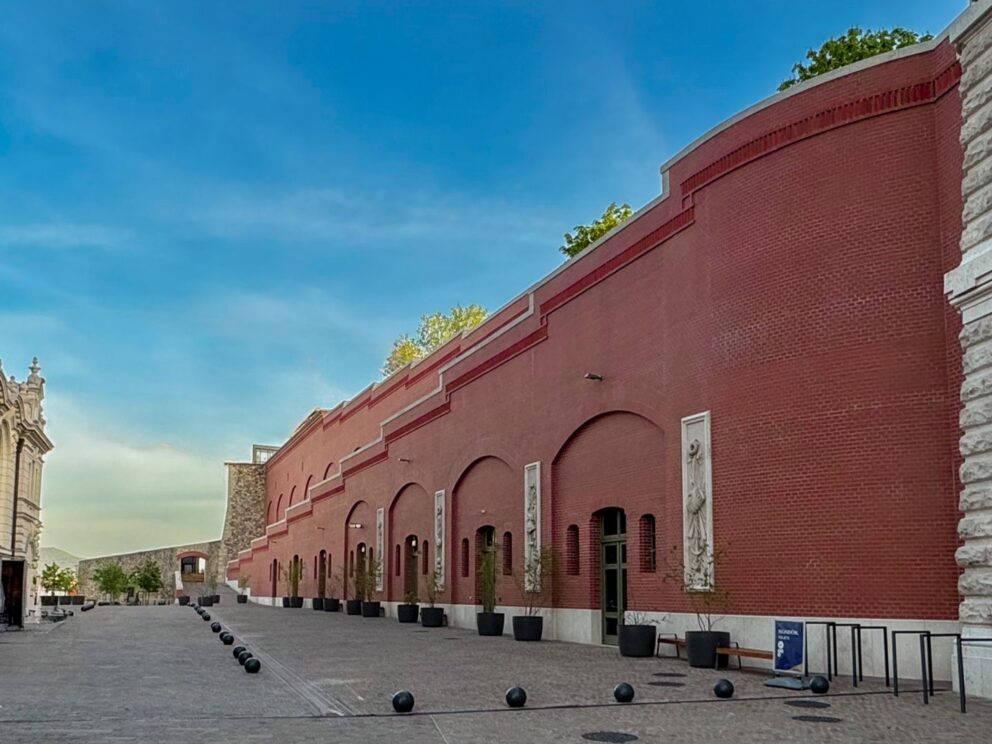
This retaining wall, covered in red brick, borders the eastern part of the castle. It is segmented by niches, each featuring a relief sculpture with military themes. The wall also functions as a ramp, providing an easy ascent to the castle for those who prefer not to use the Stöckl Steps. For those who desire even more convenience, an elevator next to the retaining wall is also available. This feature makes the wall not only a functional part of the castle’s infrastructure but also an artistic element that enhances the historical ambiance.
61. The Carmelite Monastery
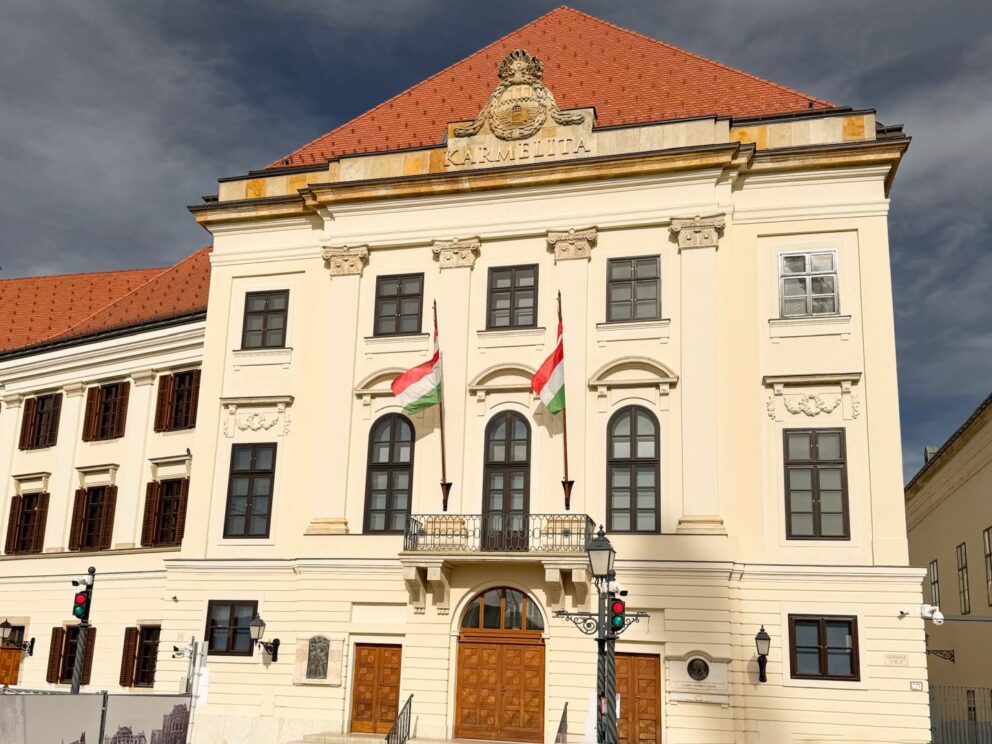
The Carmelite is currently the official residence of the President and the Prime Minister of Hungary. It is not open to tourists. This is also where red carpet receptions for delegations take place.
Historically, there was a church on this site, which the Turks converted into a mosque, and then the Carmelite monks (formally known as the Order of Our Lady of Mount Carmel) built a monastery on the plot, from which it derives its current name. Emperor Joseph II abolished the monastic order and closed the monastery.
The church was then transformed into Buda’s first theater, and the monastery into a casino. The theater opened on October 16, 1787. It primarily hosted performances in German, but the first Hungarian language troupe also debuted here in 1790 under the direction of László Kelemen. On May 7, 1800, Ludwig van Beethoven gave a concert at this venue.
After repairs from damage sustained in World War II, the former church space reopened to the public in 1978. The monastery buildings were used by various offices until 2014 when they were taken over by the Prime Minister’s Office.
62. Castle Museum
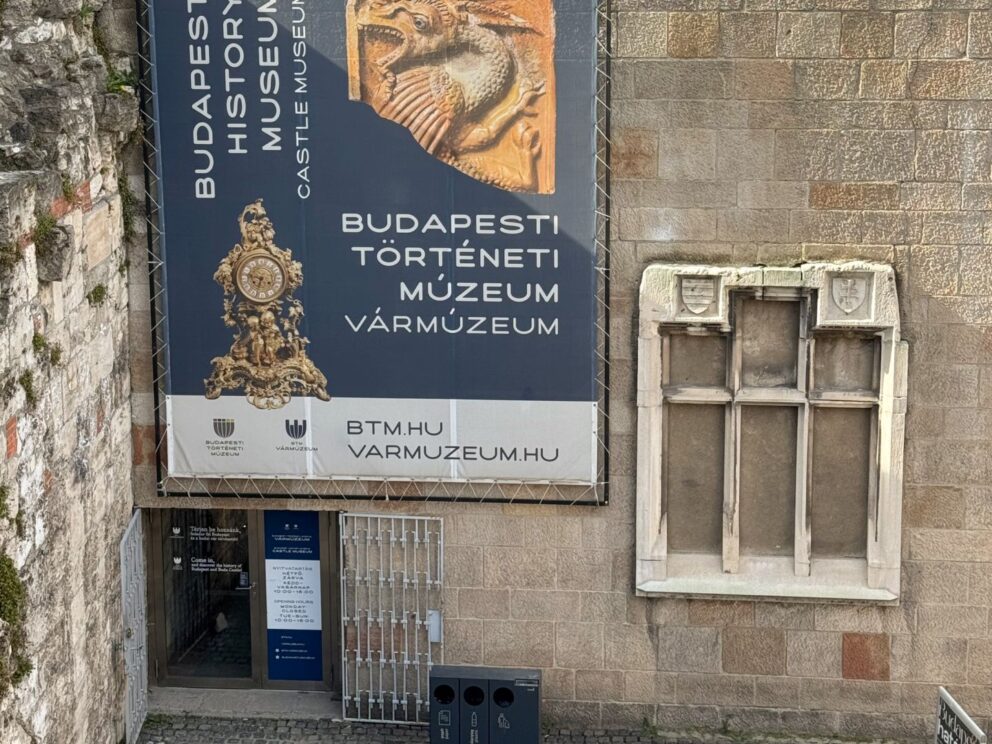
Located in the Castle District, the Castle Museum has two entrances. The more hidden entrance is located behind the statue of the Virgin Mary, while the other larger and more ornate entrance can be accessed from the Lion’s Court. This is worth noting when purchasing tickets. There is a combined ticket available that allows entry to both the Saint Stephen Hall and the Museum. If I recall correctly, the Saint Stephen Hall can be entered until 5:00 PM (the museum stays open until 6:00 PM) and the tickets are valid for a maximum of one hour (meaning you can stay inside for only one hour).
There are two exhibitions related to the visit to the Saint Stephen Hall. The first is about the hall itself, and the second covers the admonitions of Saint Stephen.
What can you see in the Museum? The museum houses archaeological findings (fragments of walls, decorations, remnants of statues), historical relics of the city, medieval treasures, and fine art pieces.
One should not miss the fantastic castle chapel within the museum, which was an impressive part of Sigismund of Luxembourg’s Gothic palace. The chapel was reconsecrated in 1990 in honor of Saint Stephen and is suitable for holding wedding ceremonies, with seating for 18 and standing room for forty. Importantly, the chapel is available for rent!
63. Lion’s Court at Buda Castle
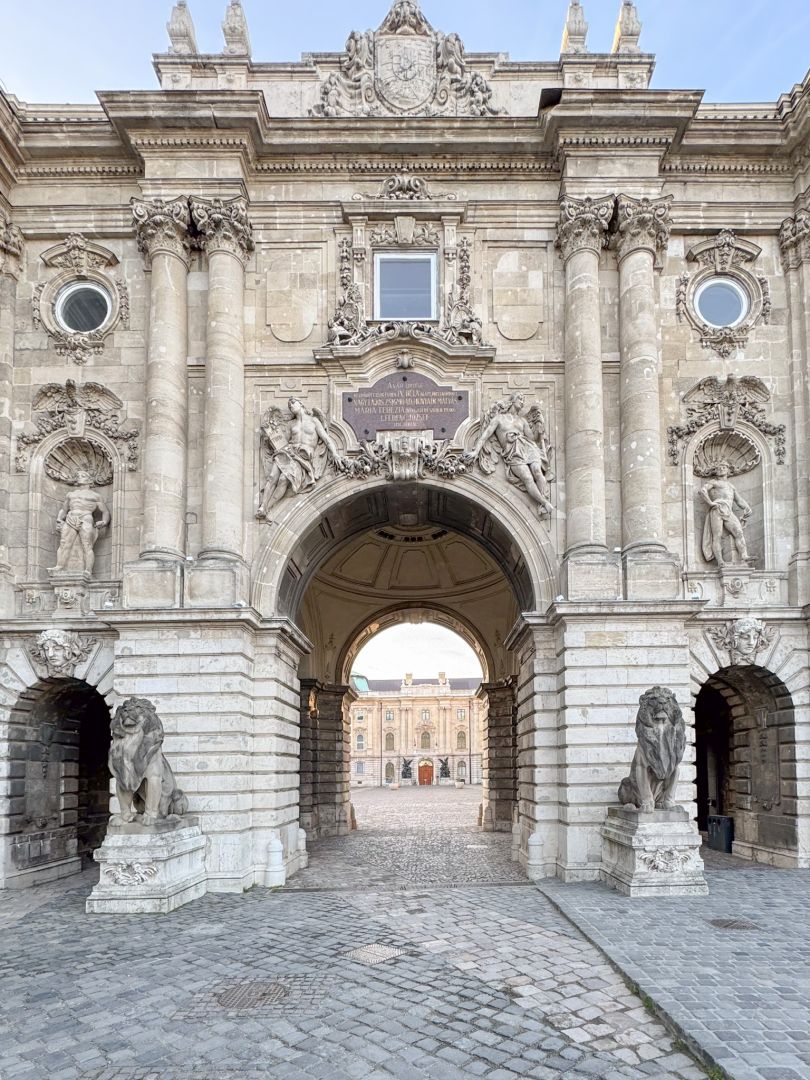
The Lion’s Court is named after the four lions that guard the entrance: two outside and two inside. The exterior lions proudly welcome visitors, while the interior gate lions resemble roaring wild animals.
The lions were sculpted by János Fadrusz in 1902 and inaugurated in 1903. The Lion’s Court is a 4,300 square meter enclosed cobblestone courtyard surrounded by the Hungarian National Gallery, the Budapest History Museum, and the National Széchényi Library.
The courtyard’s gray cobblestone pavement features lighter-colored stripes that indicate the outlines of the excavated and then reburied medieval palace walls. The Lion’s Court, especially under night lighting, presents a spectacular sight. Not surprisingly, it often serves as a venue for various events, adding to its historical and architectural significance.
64. War and Peace Sculpture Group
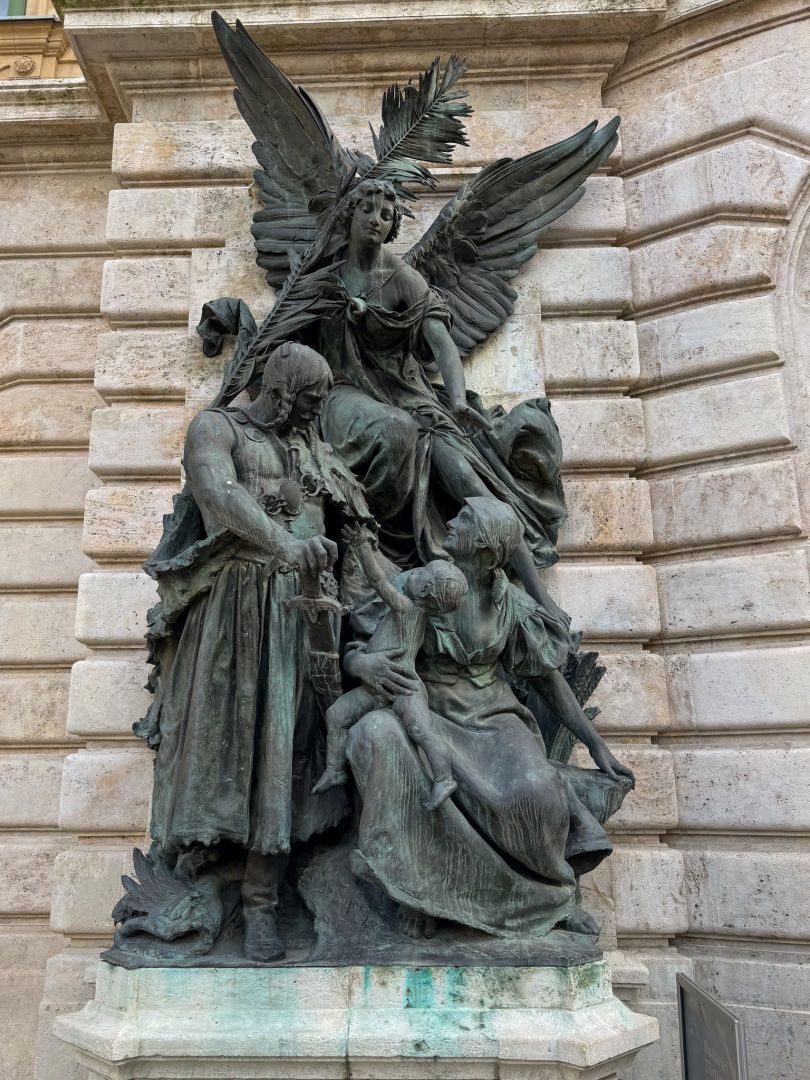
Located in the Lion’s Court near the entrance to the Castle Museum within the Buda Castle district, the “War and Peace” sculpture group was crafted by Károly Senyei.
The “War” sculpture features four figures. At the top, an angelic figure with a helmet blows a trumpet, symbolizing the call to arms. Below this figure, a victorious warrior wearing a helmet stands triumphant over a fallen soldier, whose defeat is further signified by a broken sword. Beside them, a figure representing an ancient Hungarian warrior embodies the martial virtues of the Hungarians.
The “Peace” sculpture group, in contrast to “War,” symbolizes abundance, good living, and tranquility. It consists of four figures: an angel bringing an olive branch, symbolizing peace, is positioned above a scene where a returning father is greeted warmly by his family, capturing a moment of joyful reunion. This group represents the serenity and prosperity that follow the resolution of conflict.
65. Hungarian National Gallery

The Hungarian National Gallery presents the development of visual arts in Hungary from the foundation of the state to contemporary modern art. After the nationalization of the capital city’s art collection in 1953, there was no longer sufficient space at the Museum of Fine Arts to exhibit all the visual arts materials. The idea of establishing a completely independent Hungarian museum of fine arts materialized after the revolution of 1956, leading to the founding of the Hungarian National Gallery in 1957.
Initially, the collections of the Hungarian National Gallery were primarily drawn from the New Hungarian Gallery of the Museum of Fine Arts, including its modern sculpture, medal, and graphic collections. At the time, the collection consisted of approximately 6,000 paintings, 2,100 sculptures, 3,100 medals, 11,000 drawings, and 5,000 prints. The Gallery opened on October 5, 1957, in the former Curia building on Kossuth Square.
In 1975, the Hungarian National Gallery moved to the Buda Castle Palace, where it opened its first exhibition in October of the same year. In 2005, the gallery’s exhibition spaces were expanded with further parts of the Buda Castle, allowing for even more exhibitions.
Today, the Hungarian National Gallery’s collection includes 110,000 works of art, with its notable pieces on display in permanent exhibitions. The museum also offers temporary exhibitions for a more comprehensive presentation of individual artists’ work.
A special feature of the Hungarian National Gallery is the panoramic viewing terrace, which can be accessed only after purchasing an entrance ticket.
Important
It’s important to note that the panoramic terrace is closed during the winter season, so visitors can only enjoy the view through the glass during that time.
66. National Széchényi Library
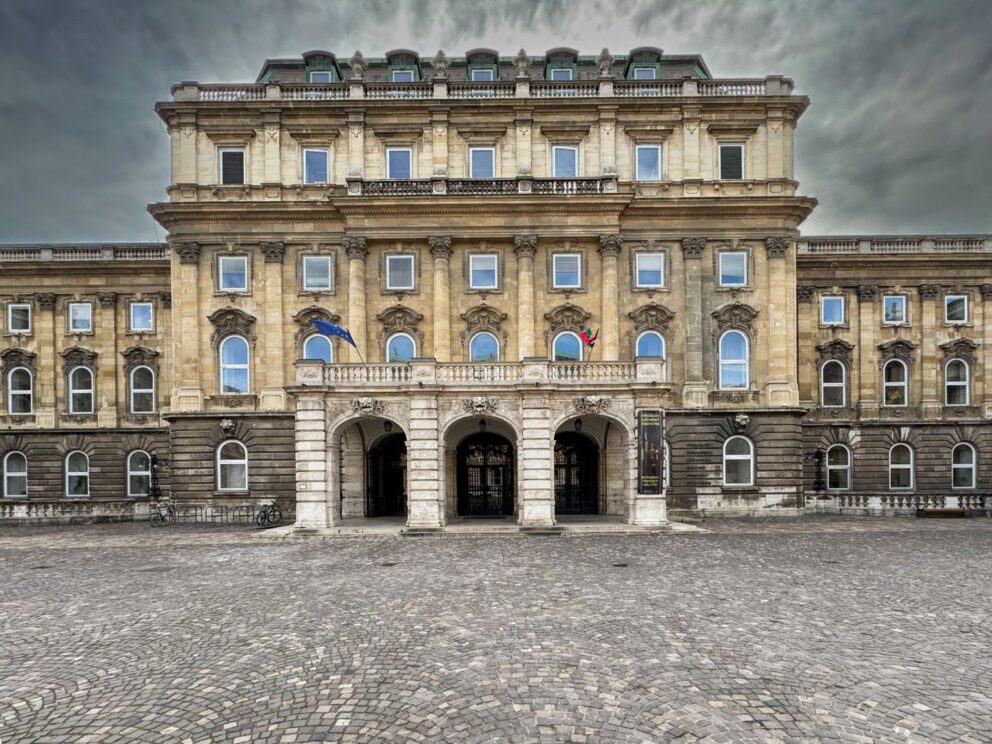
The National Széchényi Library is named after Count Ferenc Széchényi, the father of István Széchényi, often referred to as “the greatest Hungarian.” The library was founded on November 25, 1802, by Count Ferenc Széchényi and has been open to the public since 1803.
Covering a total area of 44,000 square meters, it is one of the country’s largest public buildings, with an interior volume of 260,000 cubic meters. The library shelves extend over more than 75 kilometers, and books are moved with the help of an electronic transport system that runs for over one kilometer.
A lesser-known aspect of the library is the legal deposit system, which obliges publishers to provide two free copies of their published works to the national library.
Currently, the library holds 10 million items, including more than 3 million books, 330,000 periodicals (newspapers), and over 1 million manuscripts. There are approximately 200,000 maps and 310,000 pictures and engravings. Additionally, the library houses around 3 million posters and flyers.
Among its treasures is the first work printed in Hungary, the “Chronica Hungarorum,” which was printed and published in 1473.
The size of the library is evidenced by its seating capacity; it has two large and several smaller reading rooms that can accommodate up to 700 readers at once. Most of the works available here are for reference only and cannot be checked out for external use.
67. Fountain of the Fishing Children
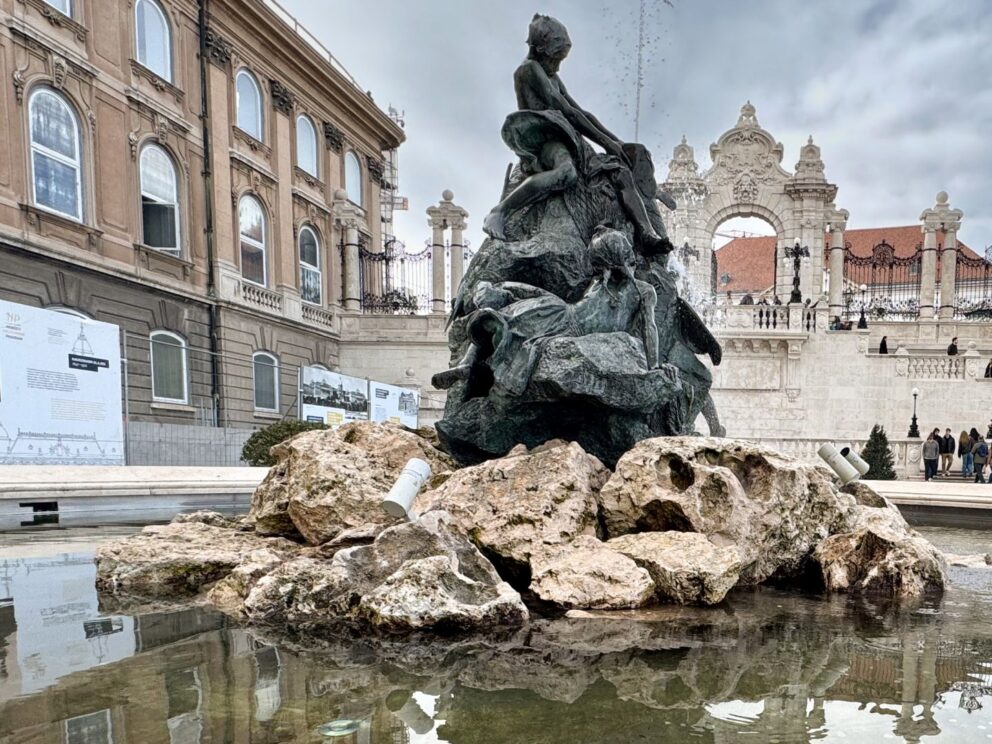
Located in front of the National Gallery, opposite the Habsburg Gate, is the “Fountain of the Fishing Children.” This sculpture was created by Károly Senyei, the artist responsible for the statues of Saint Stephen and Andrew II at Heroes’ Square. Unfortunately, Senyei did not enjoy the popularity of his work for long, as he passed away three years later at the age of 65.
The sculpture depicts children struggling with a giant catfish, surrounded by a large fountain. Tourists often throw coins into the fountain, hoping it will grant them a wish.
An interesting aspect of this sculpture is its history during and after World War II. It was damaged around the time of the war and was subsequently moved from the castle to in front of the market hall in the seventh district. The setting was quite fitting, as the boys appeared to be taking the freshly caught catfish to the market for sale. In 1976, a decision was made to restore the “Fountain of the Fishing Children,” and by 1977 it was returned to its original location at Buda Castle.
68. Habsburg Gate
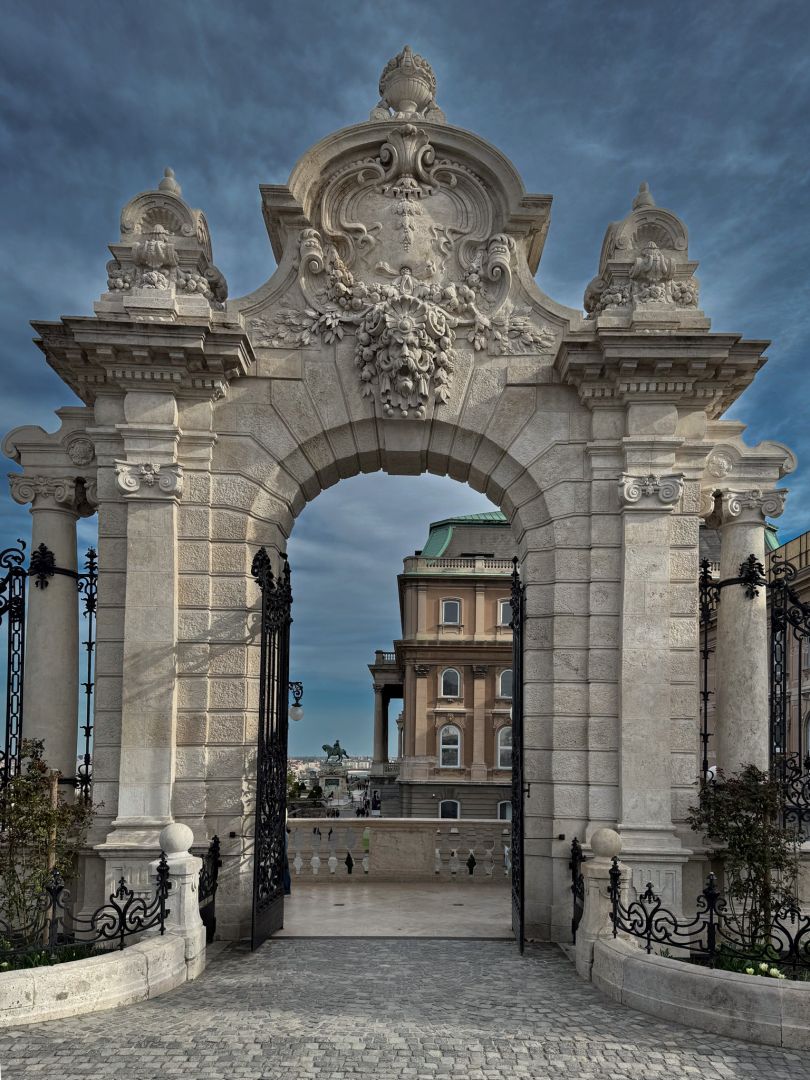
The path from Hunyadi Courtyard to the funicular passes through the stunning Habsburg Gate, also known as the Baroque Gate. This gate is associated with the architect Alajos Hauszmann and the ornamental blacksmith Gyula Jungfer. The sculptural group is perfectly complemented by Jungfer’s wrought iron fence and its motifs. Gyula Jungfer, awarded the French Legion of Honor, was born into a deeply-rooted family of blacksmiths on January 9, 1841.
Unfortunately, the gate was also damaged during World War II. The gate as seen today was restored by 1981. At the corner of the gate closest to the Danube, a statue of the Turul, a mythical bird prominent in Hungarian folklore, has been placed, enhancing the historical and cultural significance of the gate within the Buda Castle area.
69. Statue of Prince Eugene of Savoy

While Prince Eugene of Savoy did not personally raise the flag during the recapture of Buda Castle, his name is closely associated with the expulsion of the Turks due to his most brilliant victory at the Battle of Zenta. The statue presents the courageous commander in ornate attire and full armor, standing proudly. On either side of the statue are figures of an old and a young Turkish prisoner, symbolizing the defeated Ottoman Empire. At the front, the crowned Hungarian coat of arms is visible.
The statue was created by József Róna in 1900.
70. Casting Yard Courtyard
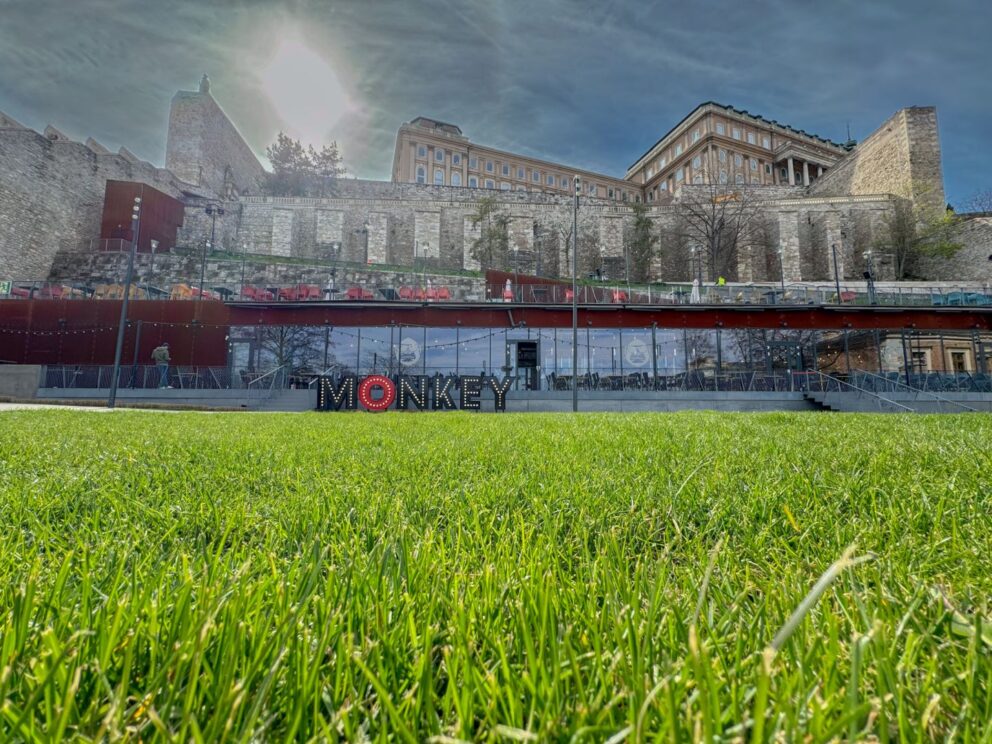
The Casting Yard Courtyard got its name during the medieval period when it was used for casting cannonballs. This courtyard has two interesting features. During their occupation, the Turks dug a massive well here in search of water. When they failed to find any, they started using the well as a garbage dump, much to the delight of modern archaeologists. Unbelievably, during World War II, the area served as a tennis court. Over the years, it has also been used as a warehouse, vegetable garden, parade ground, and later as a stone storage by the museum. Currently, a restaurant operates here and there’s a small park where visitors can relax. If you need to take an elevator within the castle, you can switch from the first elevator to a second one located in the corner of this courtyard. The edge of the Casting Yard Courtyard is also where you’ll find the Water Pouring Stairs.
71. Water Carrier Stairs
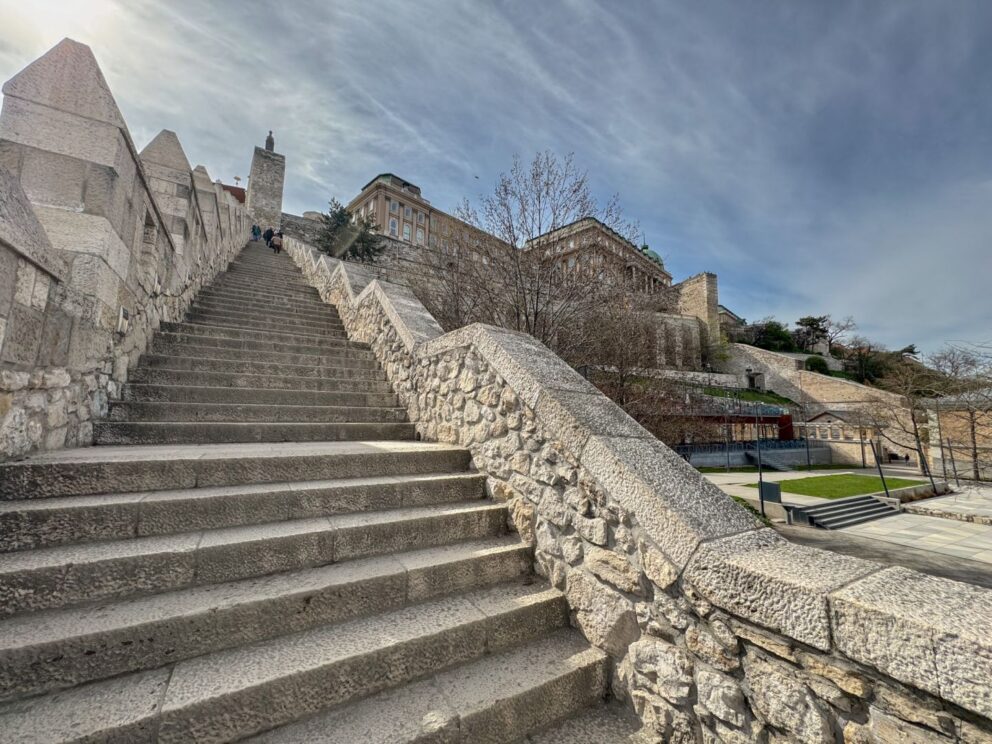
The Buda Castle is connected to the Danube by a wall known as the curtain wall. On each side of this curtain wall, there is a staircase. Unfortunately, many people are mistaken about which one is the Water Carrier Stairs. The Water Carrier Stairs are located on the side of the wall facing the Casting Yard Courtyard. On the opposite side of the wall, next to the escalator, another set of stairs leads up to the castle district. As the name suggests, the Water Carrier Stairs were named after the water carriers who, during sieges, used this protected route to transport water from the Danube to the castle residents.
72. Southern Rondella

Rondellas are strong artillery fortifications that are connected to the neighboring castle walls. They are rounded or circular, built from stone or brick, and primarily served to protect the castle, often with cannons placed on top. They were typically used in the 15th and 16th centuries. Unfortunately, rondellas also have a so-called “blind spot” which makes them vulnerable, and it was not possible to place many cannons on their tops. Therefore, by the 17th century, contemporary military technology could no longer take advantage of their benefits. In the Buda
73. Golden Eagle Pharmacy
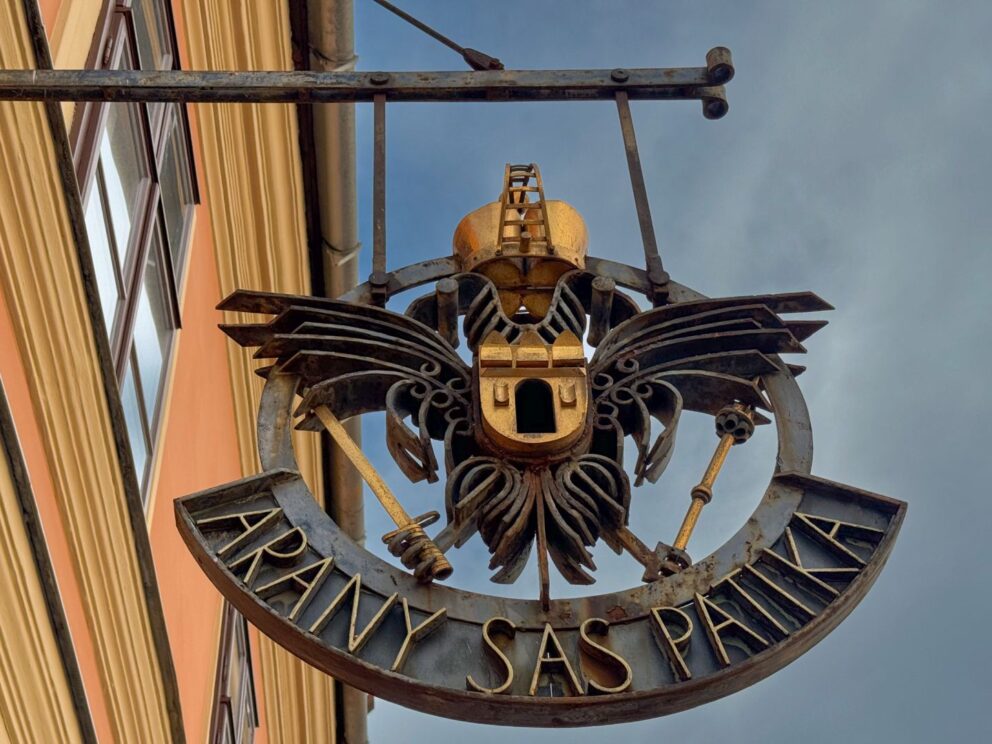
This pharmacy has been serving customers since the 18th century, located at Tárnok Street 18.
The old furniture and artifacts have been transformed into a pharmacy museum.
The Golden Eagle Pharmacy’s sign enriches the collection of beautiful signs found in the Buda Castle area.
74. Beggar’s Gate, or Raven Gate

In medieval times, the Beggar’s Gate likely stood on this site, earning its name from the prisoners and beggars who frequented this area, possibly begging as well. After the Ottoman occupation, the reconstructed gate on this side of the Buda Castle served as an entrance to the fortress. The gate was demolished in 1960, and its current version has been in place since 1995. The current gate features a spider web design topped with a raven. A notable feature of the gate is the miniature figures standing in place of the two doorknobs
75. The Triton Fountain – Neorenaissance Garden
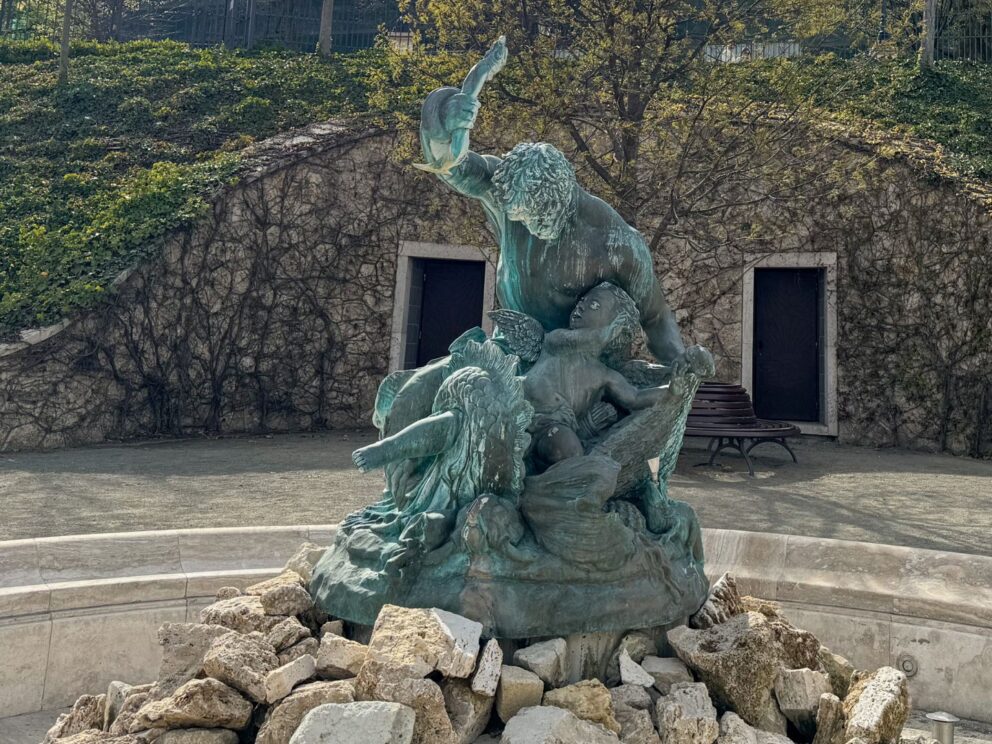
The Neorenaissance garden of the Várkert Bazár, built between 1874 and 1882, serves as the castle park of Buda Castle. This park, covering more than 5000 square meters, is adorned with a fountain that attracts visitors like a magnet during warm weather.
Since its beautiful restoration in 2014, it has provided a place for those wishing to walk and relax.
The Triton Fountain is inspired by Andersen’s fairy tale, “The Little Mermaid.”
In Greek mythology, Triton is the son of Poseidon (the sea god) and Amphitrite. He is depicted as half-man up to the waist and has a bifurcated fish tail below, with daughters who were mermaids.
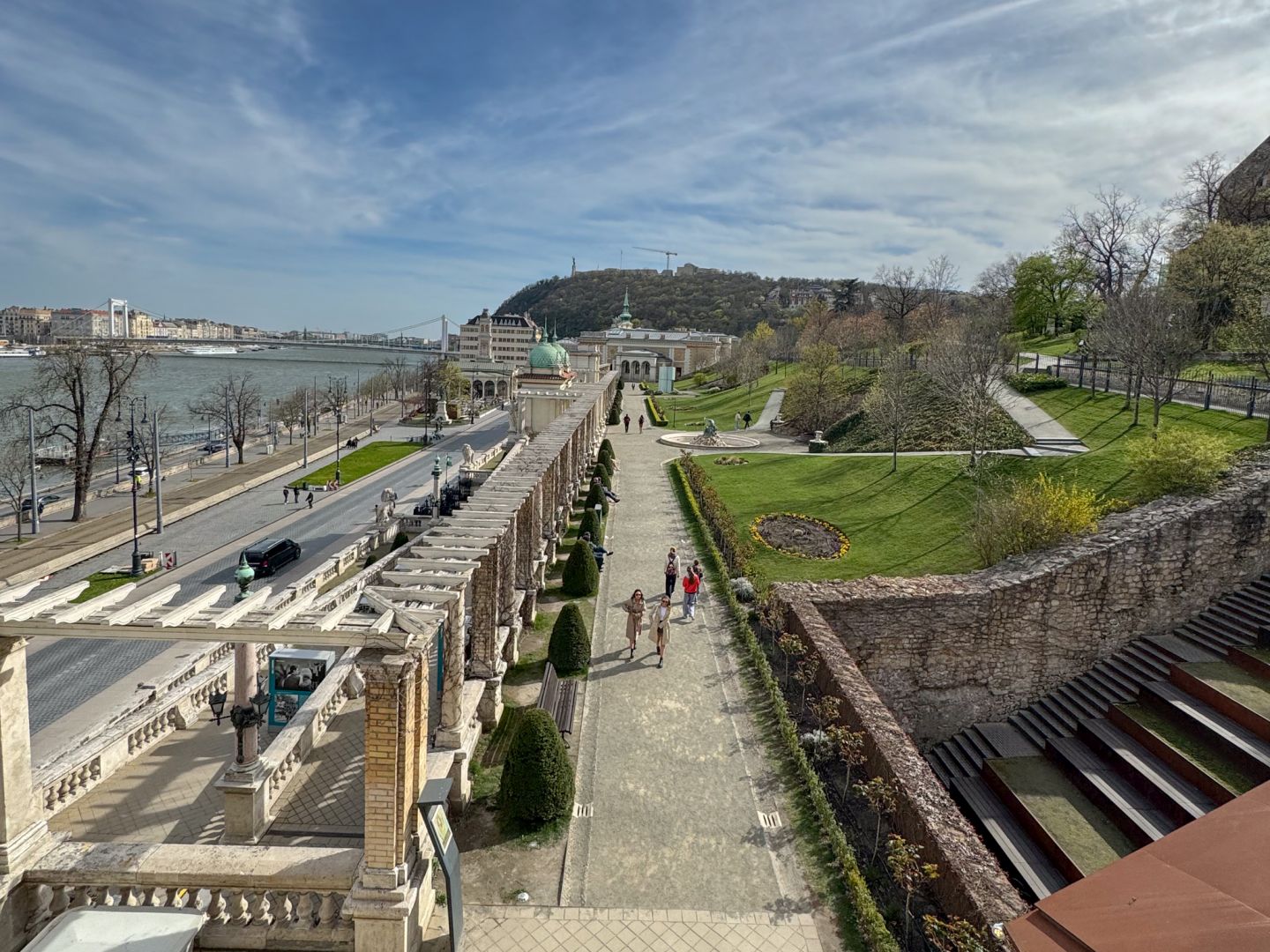
78. The Stair Pavilion
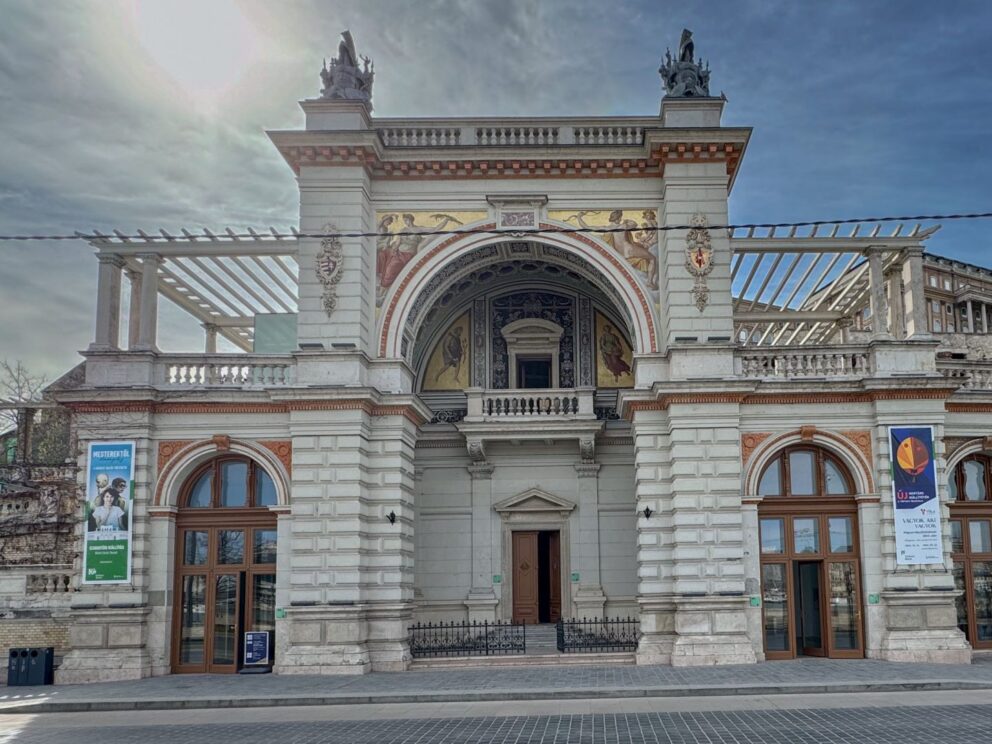
The Stair Pavilion is the central part of the Várkert Bazaar. It features a covered, splendid spiral staircase that leads up to the Renaissance garden and the lower parts of the Buda Castle.
One can observe the play of sunlight in this vast space. The pattern on the dome’s opalescent glass roof, mirroring the design on the floor, seems to capture and reflect the sunbeams, creating a mirror image.
Another stunning display of light can be seen through the east-facing, stained glass balcony doors created by Ede Kratzmann.
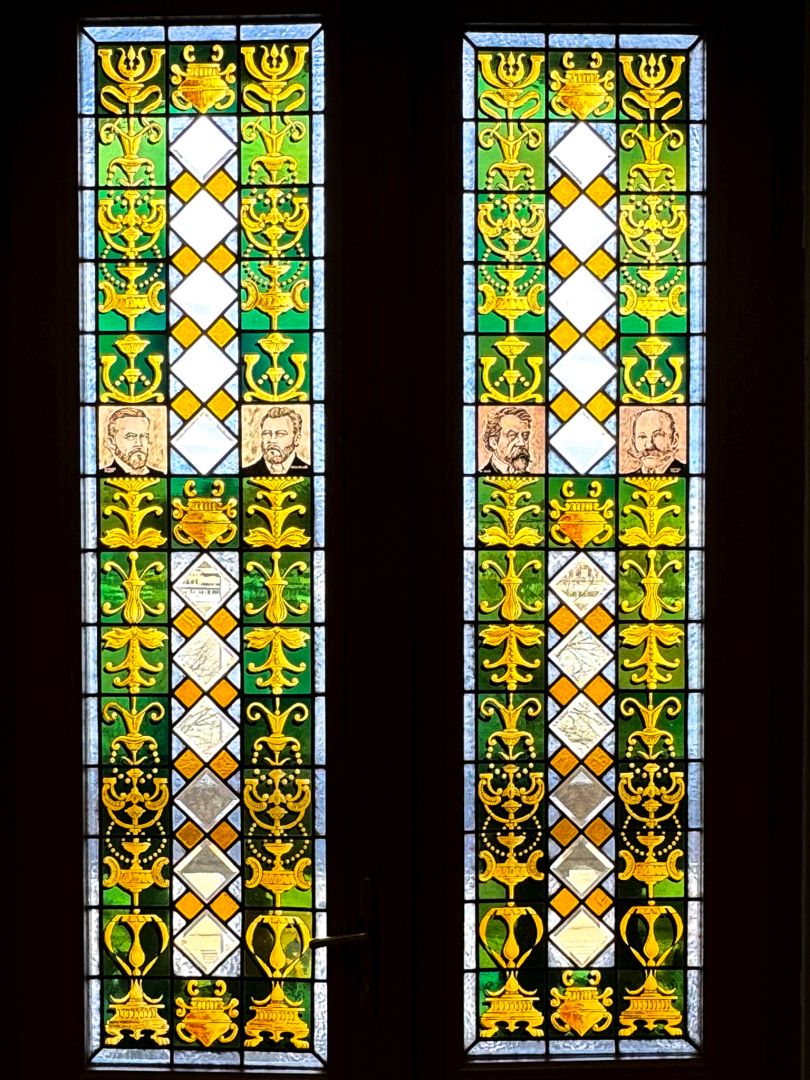
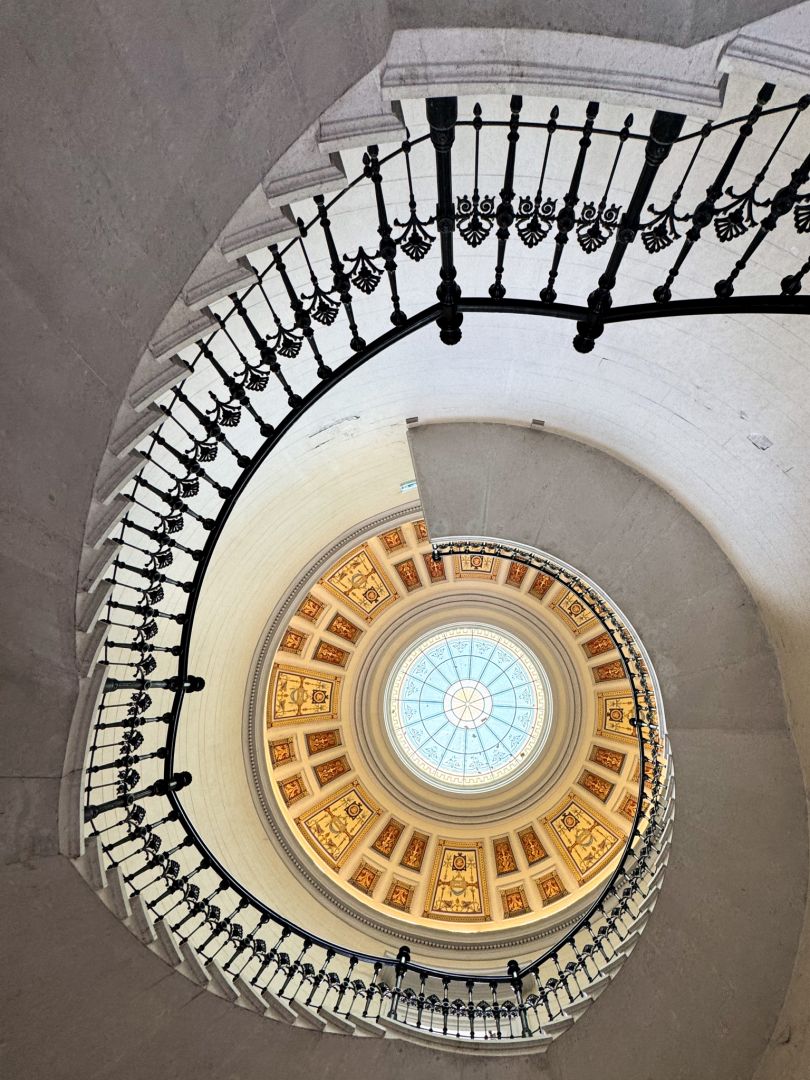
80. Wheat Grain or Bud Fountain
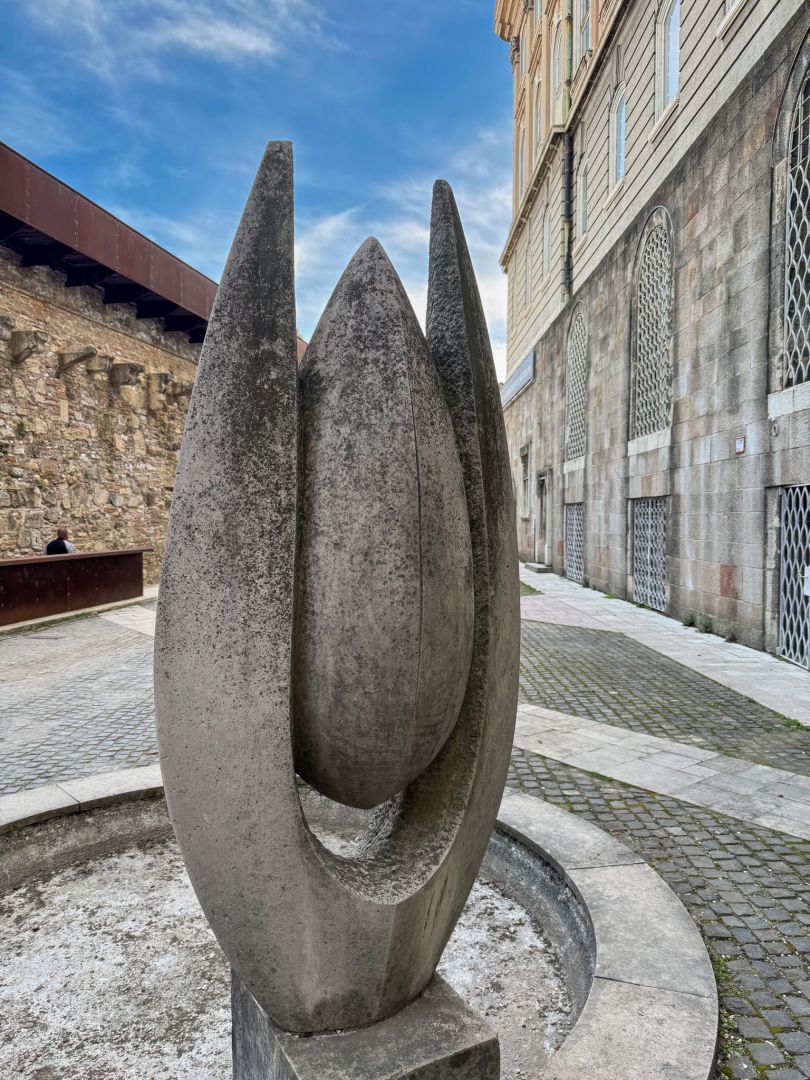
Unfortunately, I also don’t have much information about it, but it’s worth mentioning as an interesting tourist attraction.
It adorns the lower, southern courtyard of the Historical Museum.
The fountain represents a wheat grain. It is also referred to as the Wheat Grain or Bud Fountain.
81. Tünde Statue
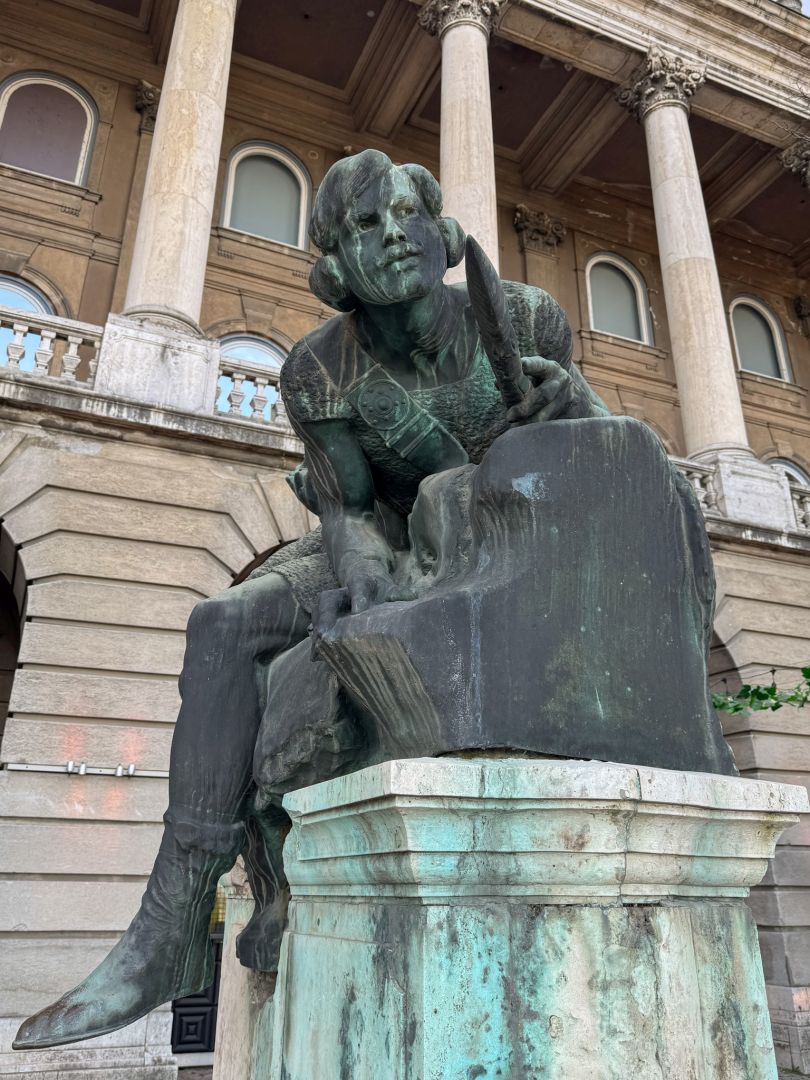
The statue represents Tünde, a heroine from Mihály Vörösmarty’s poem “Csongor and Tünde”. Originally, this small statue and its pair, Csongor, were placed near the resting spots on the half-levels of the neobaroque decorative staircase. The statues were damaged during World War II. They were demolished and only returned in 1976, but this time they were relocated behind the Savoyai statue, next to the main entrance of the National Gallery. In her right hand, Tünde offers an (bronze) apple to passersby.
82. Bonfini Statue
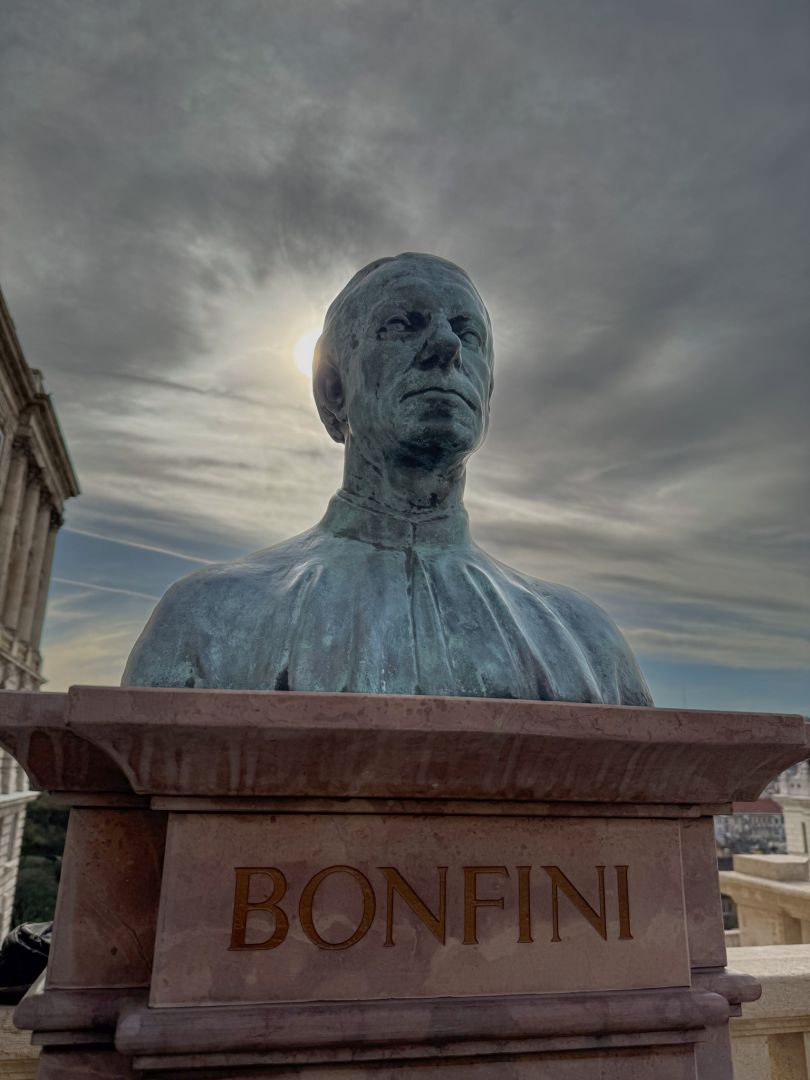
The bust is a replica of the original statue, which was destroyed during the Siege of Budapest in 1944, in World War II. The original statue was sculpted by Zoltán Farkas, who also worked as a lawyer, in 1934. Farkas created two copies of the statue; the first was unveiled near the current location of the replica in 1934, and the second was donated in 1935 to Bonfini’s hometown of Ascoli Piceno. The replica was unveiled on January 21, 2009.
83. Marsigli Statue
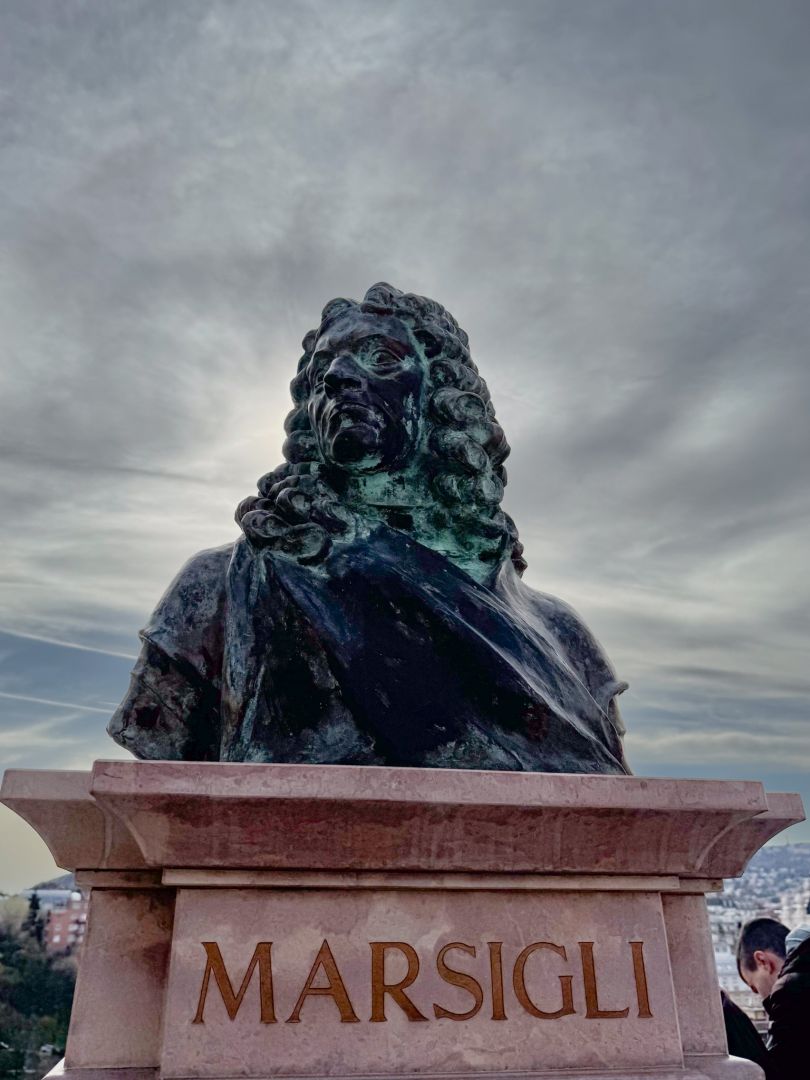
On either side of the upper Stöckl Steps, there stand two statues: one of Bonfini and the other of Marsigli.
The bust depicting Marsigli was originally erected in 1936. However, it appeared to have been destroyed during the siege in 1945. Several sources indicate that the archaeologist András Tasnádi Kubacska personally excavated it from the ruins and took it to the Hungarian National Museum.
The current statue is a replica commissioned by the Castle Administration.
85. Hilton Hotel and Wooden Staircase in Buda Castle
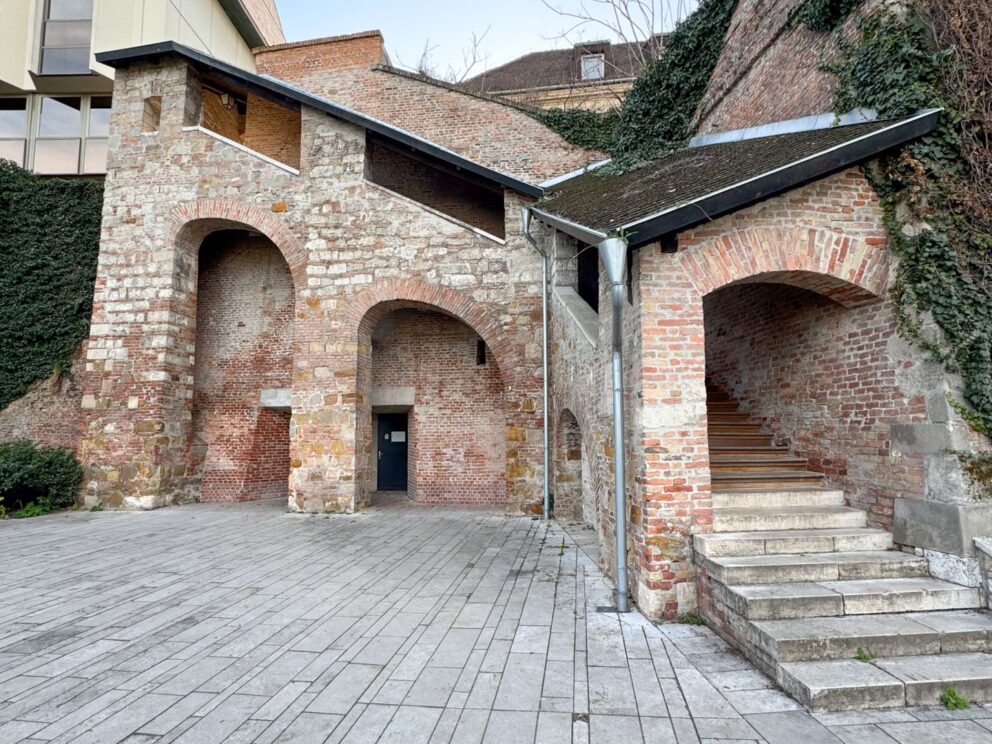
The Hilton Hotel in Buda Castle was built on the site of a Jesuit college damaged during World War II.
Many people dislike the hotel’s structure, arguing that its modern design does not fit with the historic style of the Buda Castle district.
During renovations, efforts were made to integrate the hotel better into its surroundings. A distinctive solution is the staircase running behind the hotel, which has itself become a tourist attraction. However, it raises the question of why it was necessary to build an electric lift next to the staircase. From Íscola Street, this staircase provides access to Buda Castle.
Few know that the hotel has a rear entrance, which includes a roundabout to accommodate arriving vehicles.
86. Musicology Institute
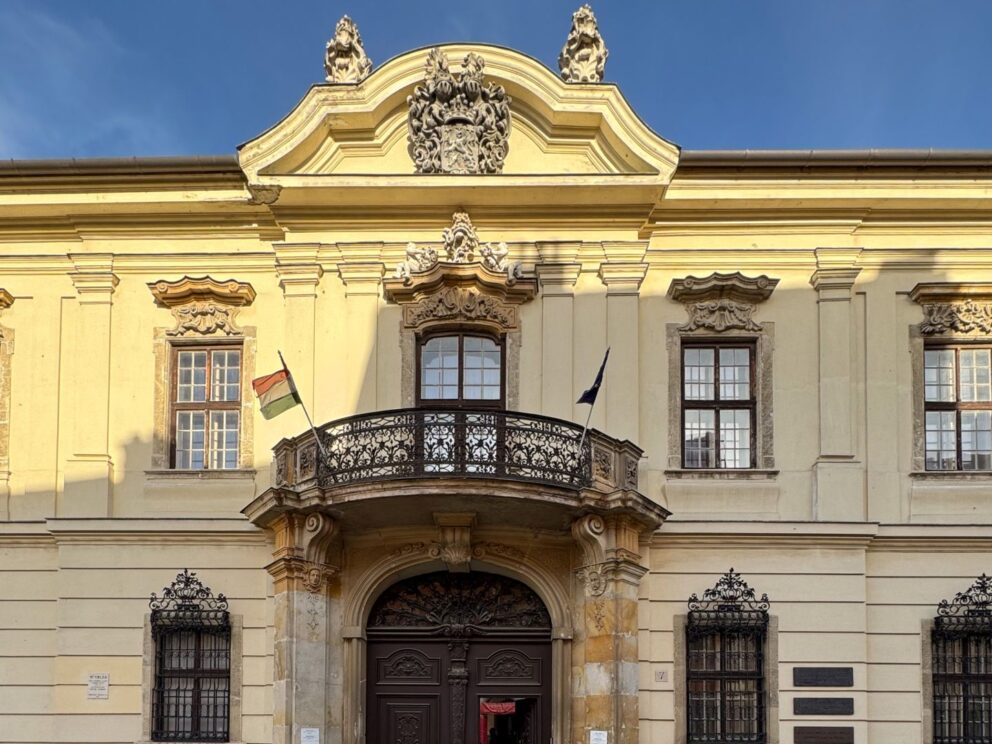
The baroque-style palace was built by Count György Erdődy, a judge and royal guard, which is why it is also known as the Erdődy Palace.
From 1800, the world-famous composer Ludwig van Beethoven frequently stayed here, maintaining a friendly relationship with the family.
In 1984, the Institute for Musicology of the Hungarian Academy of Sciences moved into the building, which now hosts numerous exhibitions and concerts.
87. Buda Castle Evangelical Church
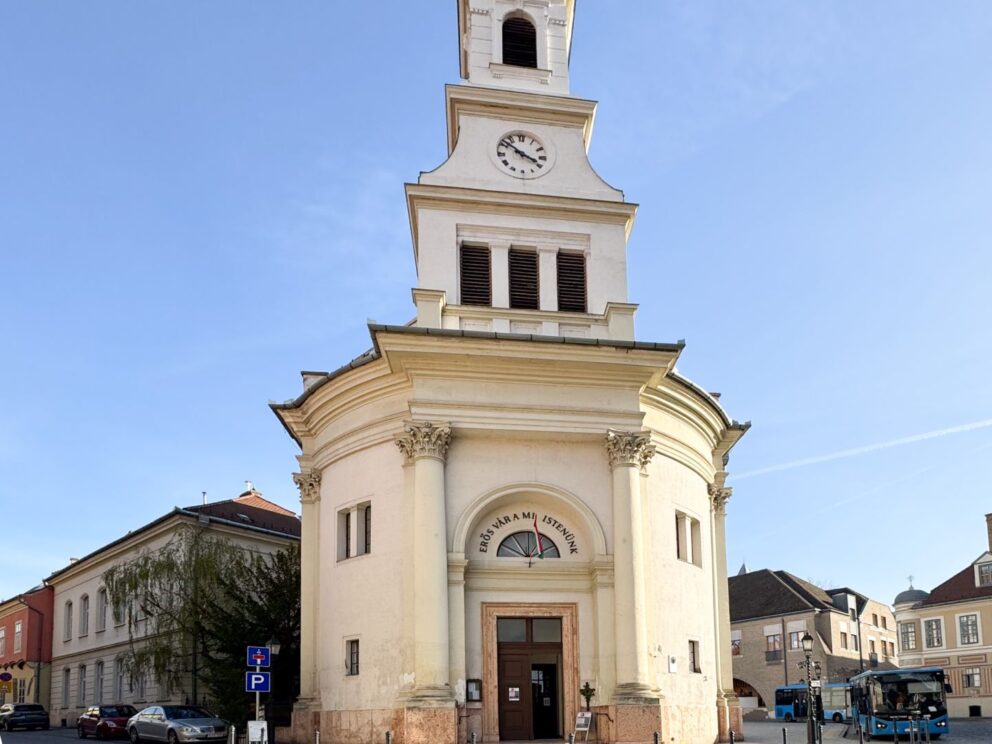
The largest Evangelical church on the Buda side, and within the Buda Castle District. It suffered serious damage during the siege of Budapest. Although the exterior was almost precisely restored to its original state, the interior was significantly simplified.
On the side of the church, there is a bronze plaque commemorating Gábor Sztehlo, an Evangelical pastor who saved 1600 persecuted children and 400 nurses during World War II.
89. Chinese Cannons on the Walls of Buda Castle District
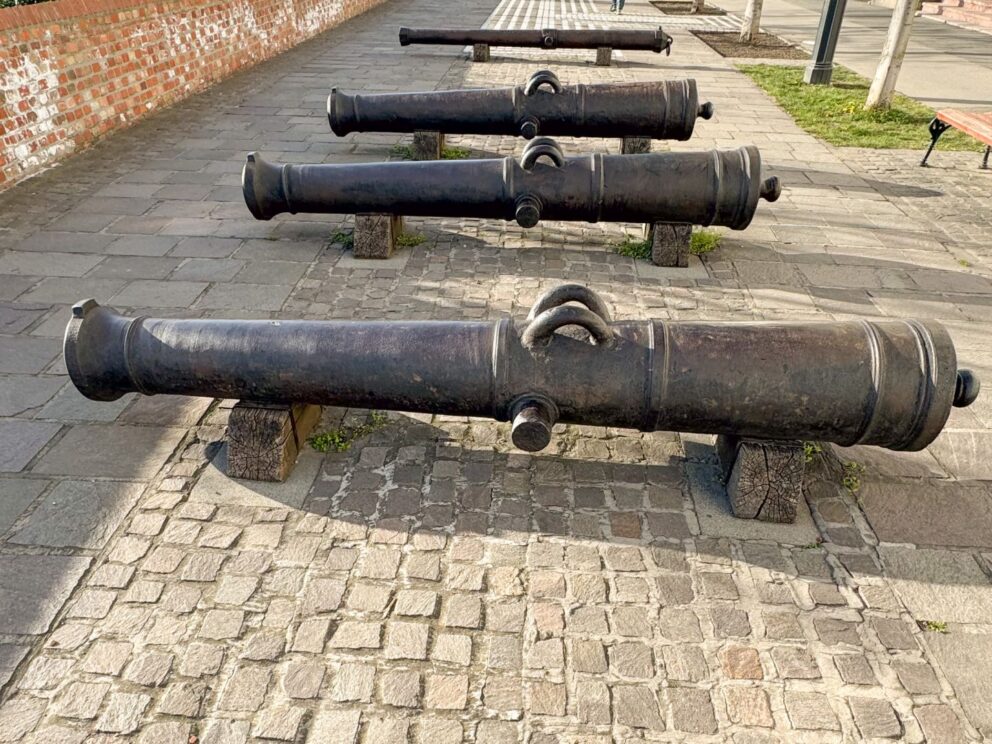
Originally, two Chinese cannons were displayed here in full splendor. The cannons were brought as war trophies by the Austro-Hungarian troops from China during the Boxer Rebellion in 1900. The Hungarian Military History Museum acquired them from Austria in 1926 under an international treaty.
90. Statue of Ferenc Koszorús
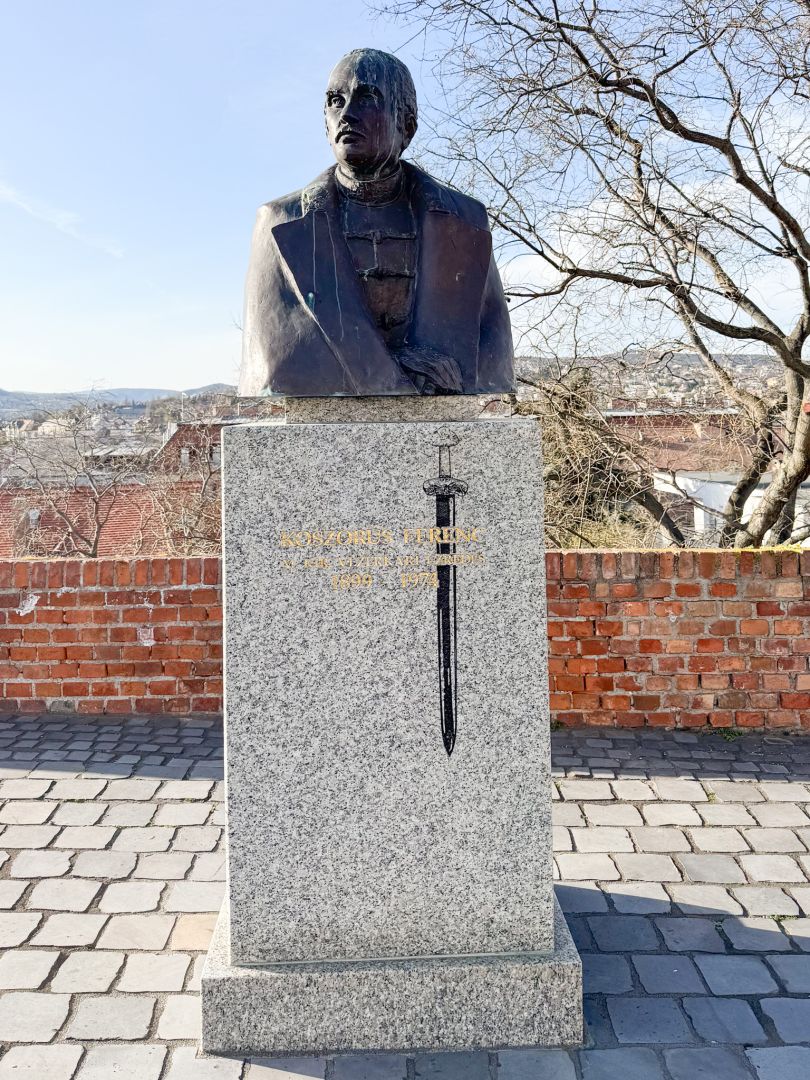
The bust of General Ferenc Koszorús stands on the Esztergom Rondella in the Buda Castle, commemorating the military officer who, as his most significant military action, thwarted the gendarmerie coup of 1944, thereby halting the deportation of the Jewish population of Budapest.
Buda Castel Quarter Maps
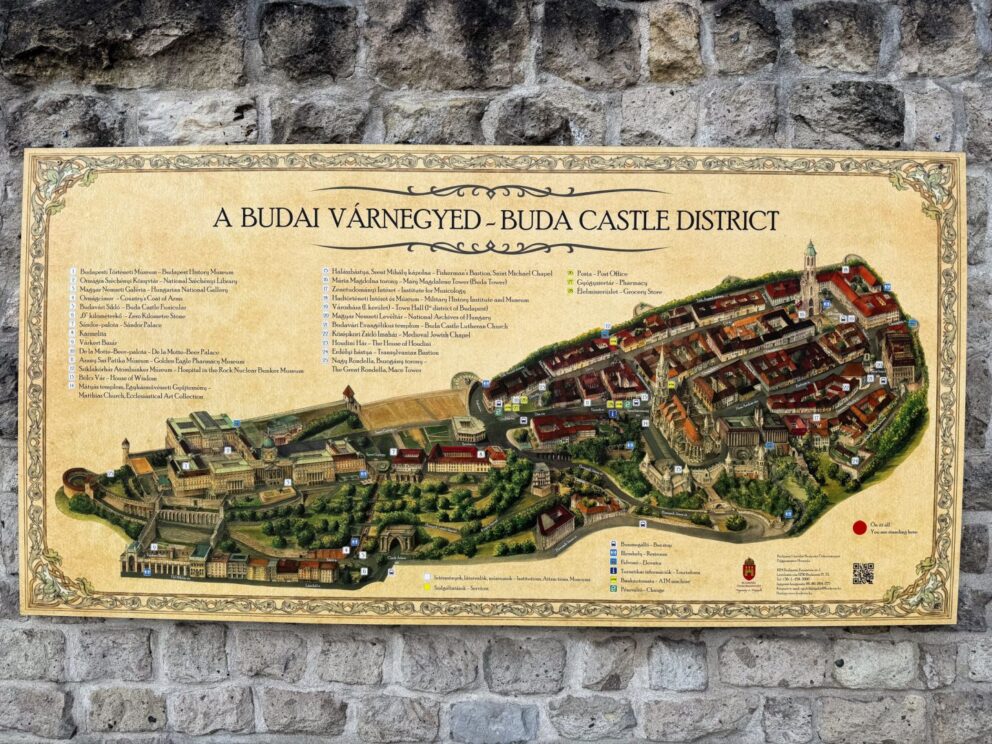
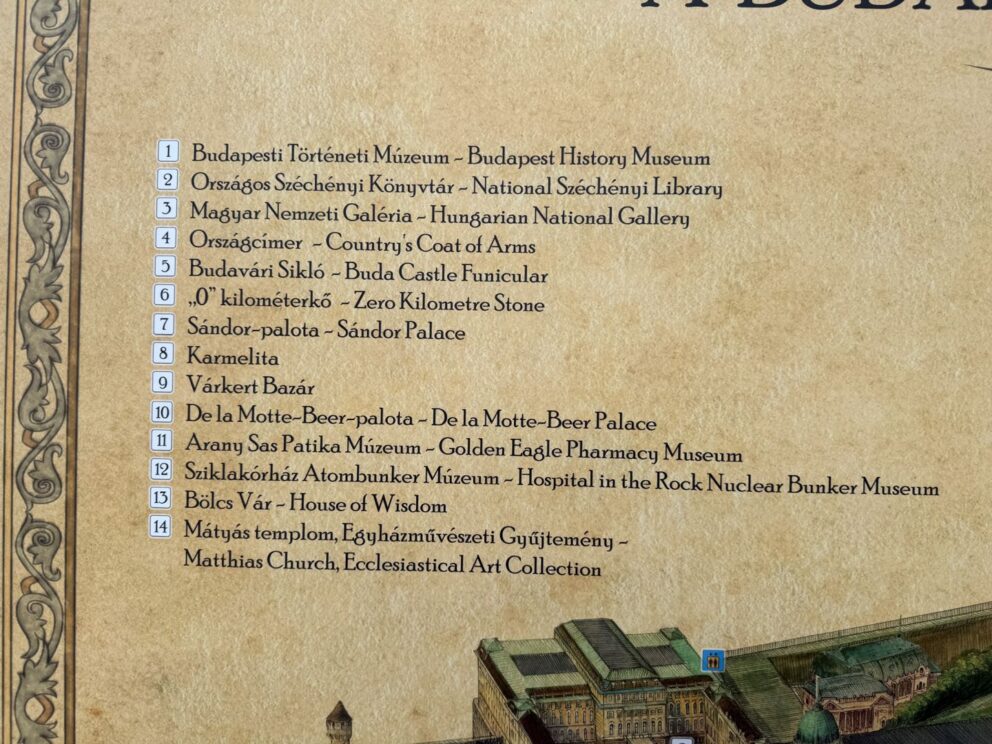

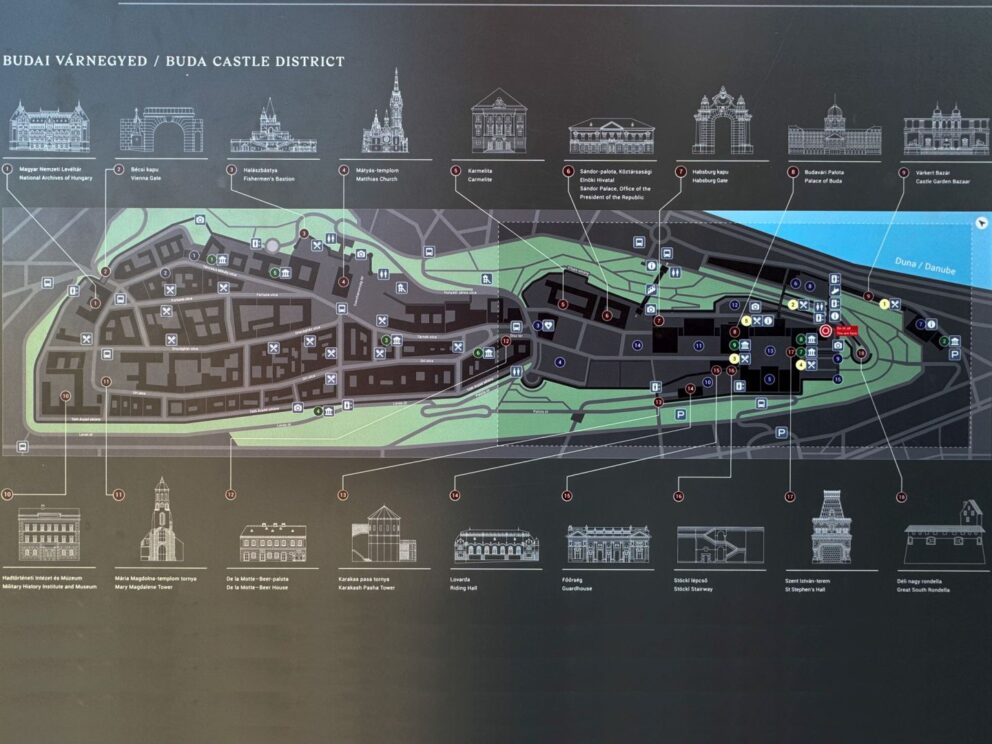
Do not miss it: guided tour at a world heritage site
Many companies offer guided tours that include detailed historical explanations about the castle’s architecture, art, and its role in Hungarian history. These tours can vary in length and often include other nearby attractions.
Experience the castle at night for a different perspective. These tours focus on the dramatic lighting and the panoramic views of Budapest that the castle offers after dark.
For a more personalized experience, private tours can be arranged. These might cater to specific interests such as medieval history, art, or even ghost stories associated with the castle.
For those who prefer a self-guided pace, audio tours are available. They provide a wealth of information and can be accessed through personal devices or rented audio guides.
Depending on the time of year, there might be special tours available, such as during local festivals or holidays, which can include special exhibits or thematic tours.
Q&A
- Is Buda Castle free entry?
- Visiting the Buda Castle District is free of charge. The Buda Castle offers a wealth of fascinating sights and tourist attractions. However, there are fees for museums and guided tours. Here’s what you need to pay for in the Buda Castle District: Castle Museum admission: 12 EUR National Gallery in the Buda Castle District: 12 EUR Rock Hospital under Buda Castle: 15 EUR Labyrinth under Buda Castle: 12 EUR Fisherman’s Bastion viewpoint: 3 EUR (free until 9 AM) House of Houdini: 13 EUR
- How do I get to Buda Castle?
- You can take the Castle Hill Funicular from Clark Ádám tér, or buses 16 and 16A. Parking by car is possible, but difficult and expensive in the Castle District. If you’re feeling sporty you can climb up the hills, but the most fun way to get there is with a Hop-on Hop-off tour bus.
- What tourist attractions are in the Castle District?
- There are a lot of interesting sights, museums and other places you can visit, here are a few: Buda Castle, Fisherman’s Bastion, Matthias Church, Trinity Square, Labyrinth of Buda Castle, Hungarian National Gallery, Matthias Fountain and Budapest History Museum.
- Are there free tours in the Castle District?
- Yes, you can join free tours to discover what the Castle District has to offer in 2.5 hours.
- Is the Buda Castle tour worth it?
- If we have time to plan what we want to see in the Buda Castle District, it might not be necessary to choose a guided tour
- How long should you spend at Buda Castle?
- I walked 14 km in the Buda Castle District when I took pictures of every sight. If we want to thoroughly explore the tourist attractions offered by the Buda Castle District, it takes a whole day.
Related Articles
-

Your ultimate itinerary to exploring Budapest in 1, 2 or 3 days
-

The 5 coolest boutique hotels in Budapest
-

Budapest card
-

MOL Bubi – Budapest’s very own bike sharing service
-

Hungarian Goulash – Enjoy The One and Only Soup!
-

The real taste of Ireland: 3+1 Irish bar Budapest with traditional Irish atmosphere and drink in the heart of Budapest you must visit
Would you discover Budapest? Here are some tips!
Where is Budapest? What pleasures does this amazing city offer to the tourists? If you are interested, you should read our article on the topic. As everyone knows, who once visited Budapest, this is the city, which you will never forget in your life!
The Great Synagogue Budapest is definitely an unmissable attraction! Don’t miss it if you visit the Hungarian capital.
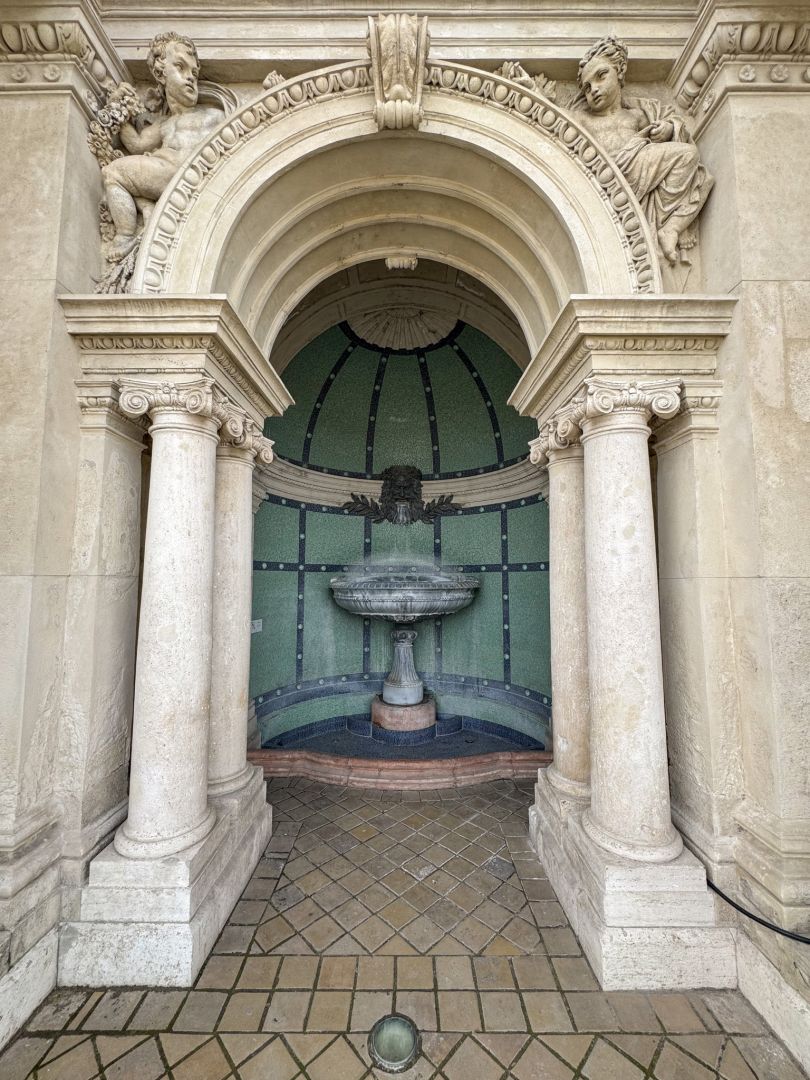
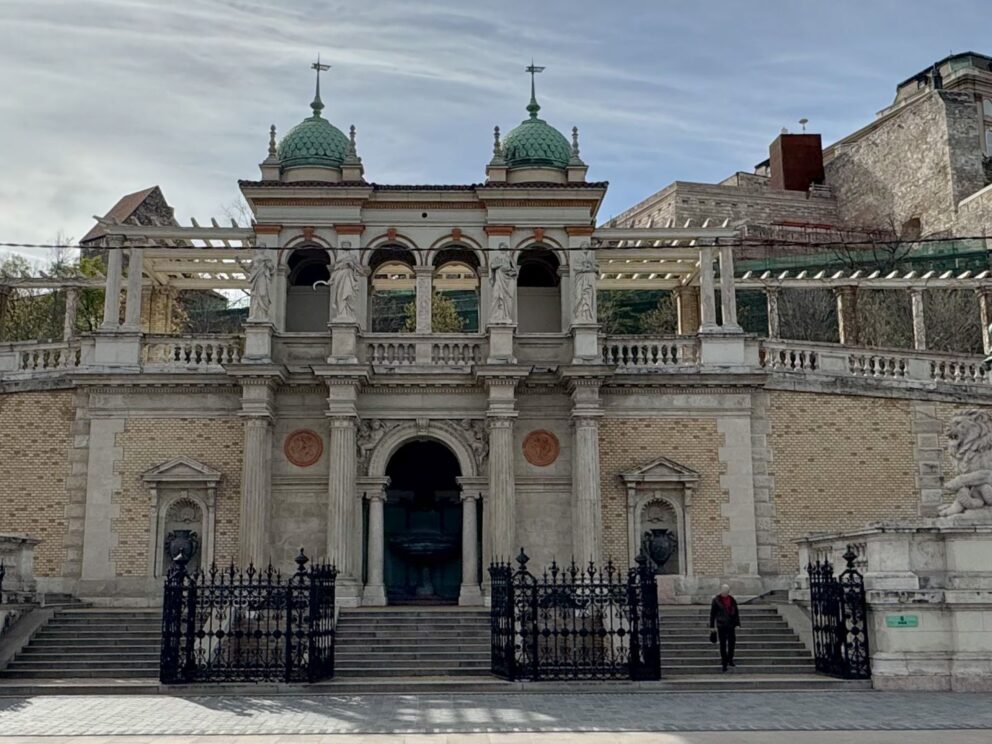
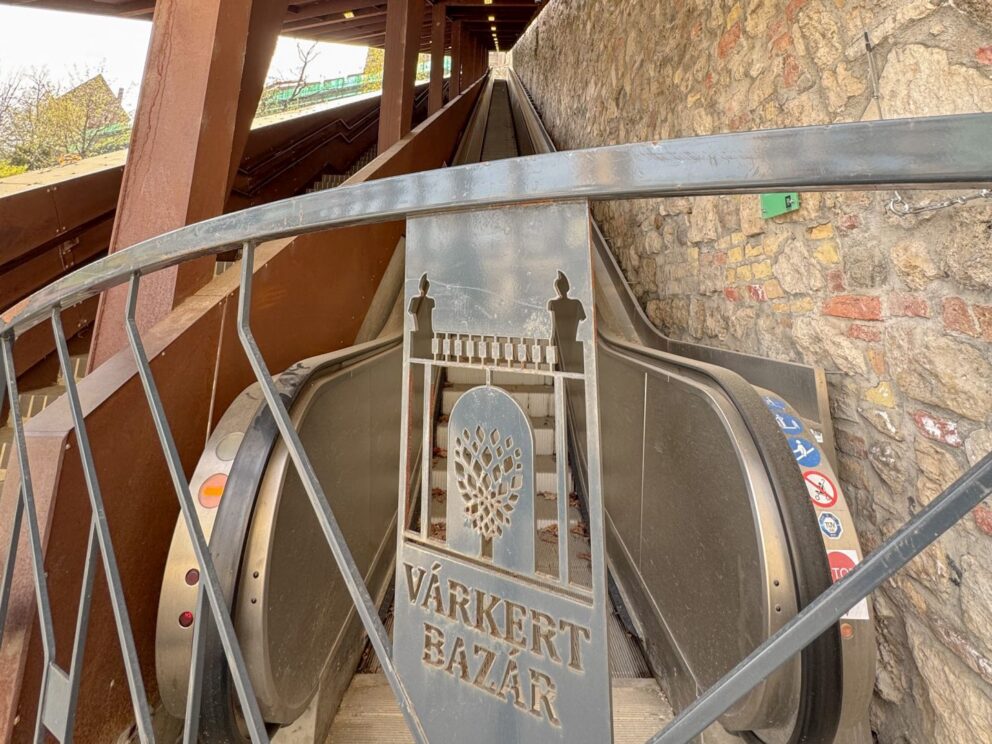
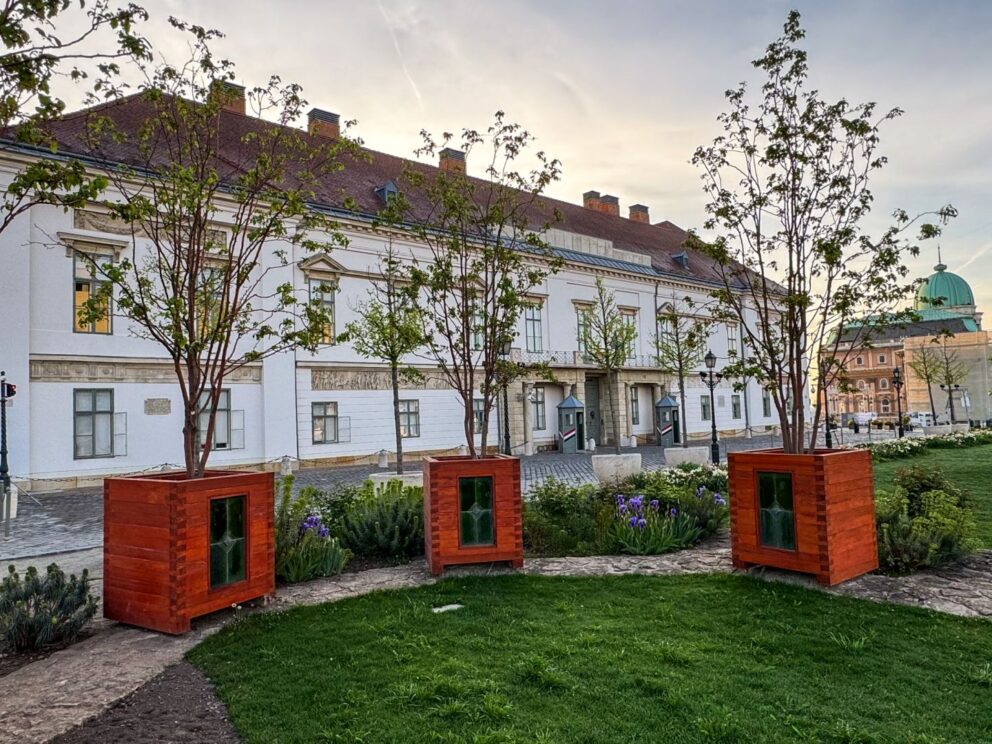
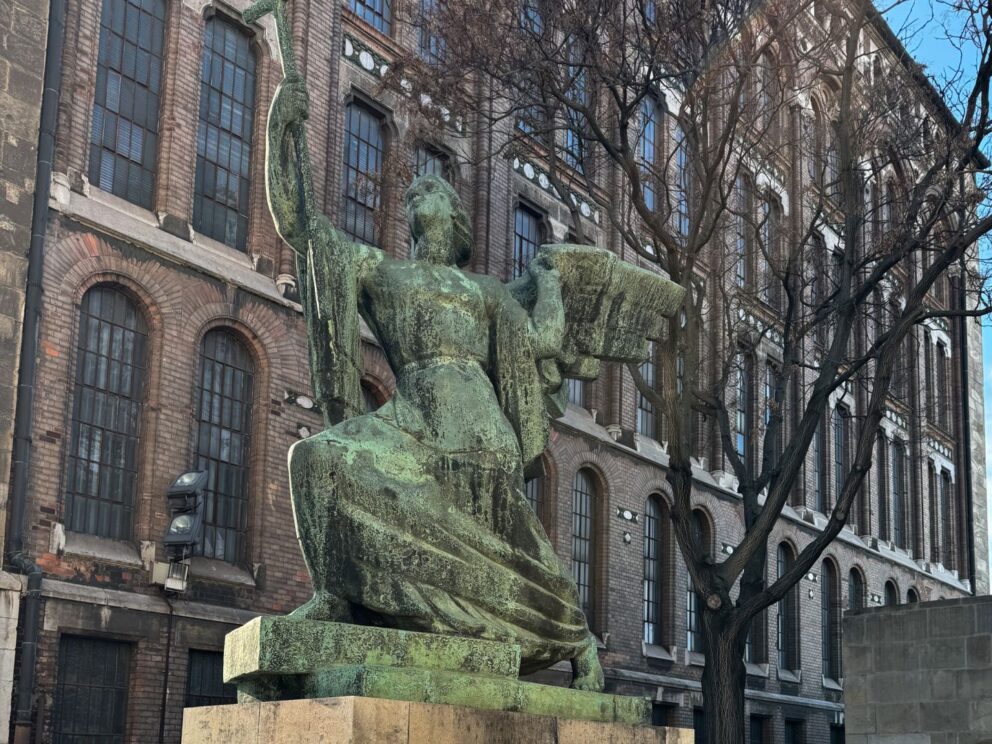


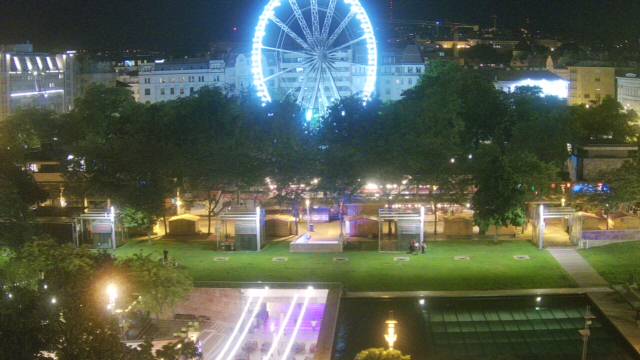
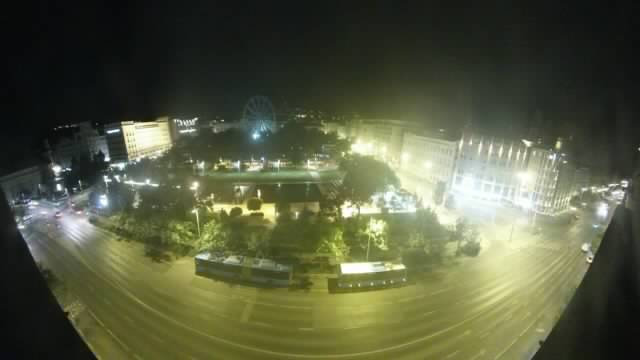
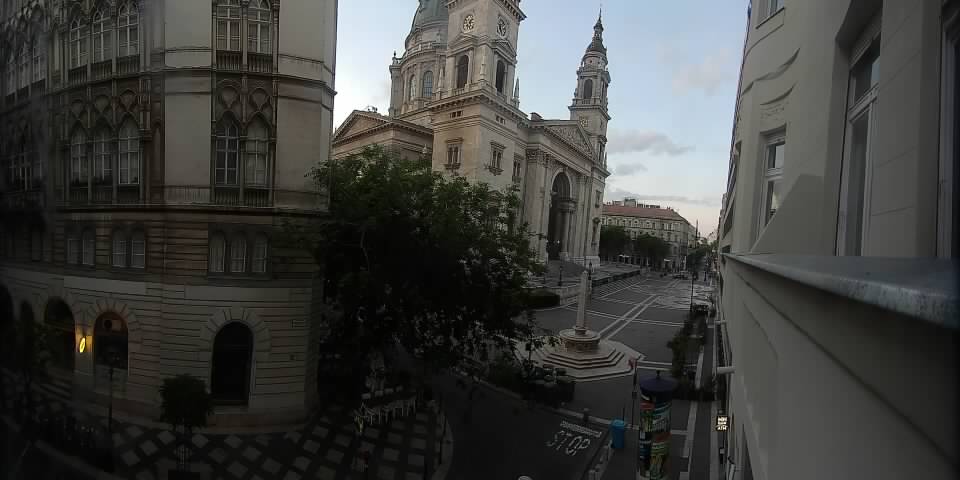

Your experience is important.
Anything you have not found?
Ask a Question
Please log in to write a review.
There is no review yet.